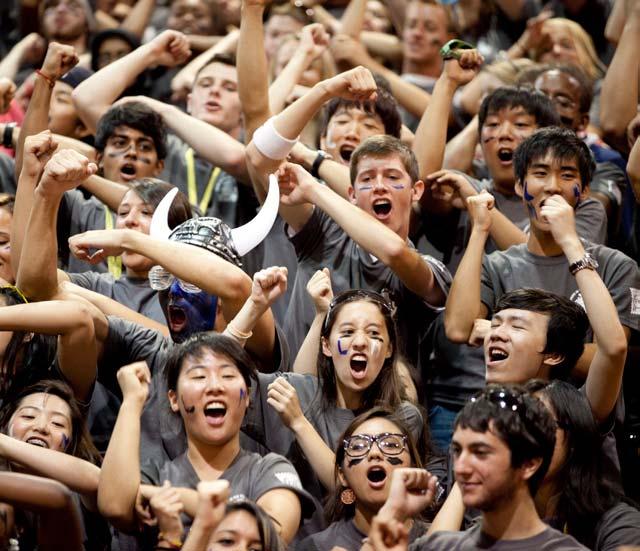Raising Hope
public health heroes stem the tide of the world’s deadliest diseases


public health heroes stem the tide of the world’s deadliest diseases

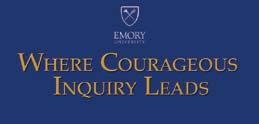
A new book edited by Emory’s Gary Hauk and Sally Wolff King tells the story of a great university’s development as seen through the lives of its people. From sweeping historical narrative to touching personal portraits, forty-four colorful chapters, written by more than sixty contributors, explore the transformation of Emory as it moves into the future.
Featuring:
Marshall Duke on Emory as place and story

Arri Eisen on science and religion at Emory
Bill Fox on the development of Campus Life
Mary Odem on the birth of women’s studies
Willis Hurst on cardiology at Emory
Delores Aldridge on African American studies
April Bogle on the case for law and religion
Russ Richey on Emory and Methodism
Mark Auslander on African American legacies in Oxford
Nancy Seideman on Lullwater and the “greening” of Emory University . . . and many more

Plus, profiles of Emory shapers, including:
Boisfeuillet Jones

George Cuttino
Floyd Watkins
Lore Metzger
Elizabeth Stevenson
Russell Major
3
David Thon 08MPH was seven years old when he and thousands of others embarked on a nightmare trek from southern Sudan to Kenya. Years later, work with The Carter Center brought him back home.
BY PATRICK ADAMS 08MPHEven as the HIV/AIDS pandemic continues its stealthy global advance, Emory scientists are striking blows against the virus from all directions.
BY MARY J. LOFTUSIn impoverished countries like Mozambique, where safe water is scarce and malaria and AIDS claim lives daily, an Emory-based global association—and a Rollins alumna—are helping to establish critical new public health systems. BY MARY
J. LOFTUS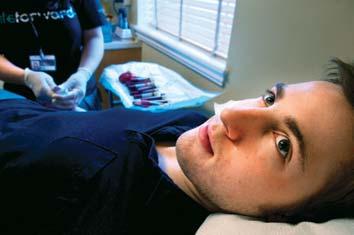
Former First Lady Rosalynn Carter continues her crusade to bring mental illness out of the shadows— and onto equal footing with physical ailments.
BY PAIGE P. PARVIN 96GOn the cover: A woman prays at Miramar Beach on the Bay of Maputo, Mozambique. Photo by Michael Barrientos.
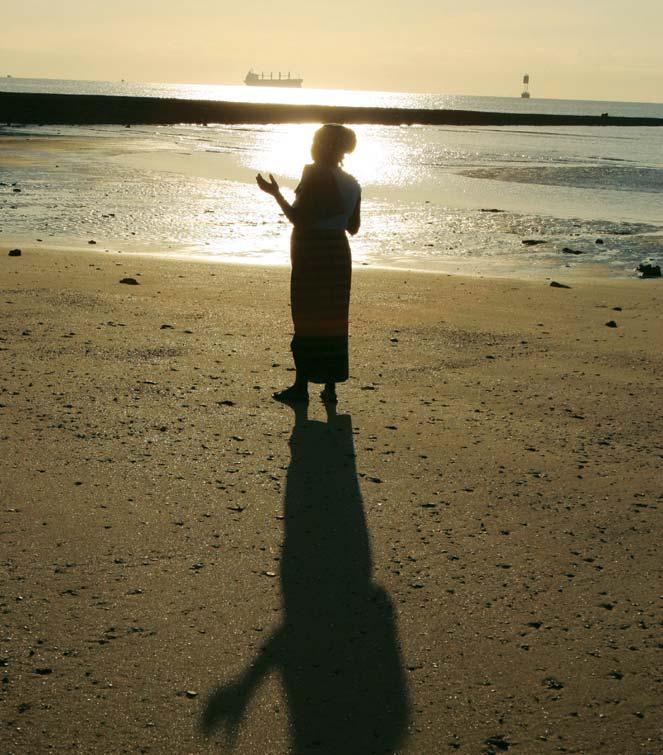
THE VISIT 2010 Link to complete multimedia coverage of the events of October 17–19, when His Holiness the XIV Dalai Lama returned to campus.
VACCINE VOLUNTEER Meet Robert Parker, left, who decided to volunteer at Emory’s Hope Clinic to test a new AIDS vaccine. He shares his story in this audio slideshow
THE WRITER’S WORDS Visit our website for a bonus Q&A with Olga Grushin 93C, whose new book is reviewed on page 14.
Emory’s own Indigo Girls found their way back to campus for Homecoming 2010, helping to draw more than 2,500 fans.

48 EMORY EVERYWHERE
50 THE ENGLISH MAJOR
52 ALUMNI INK
58 CODA REFLECTIONS ON AIDS
Students, faculty, collaboration across disciplines, Atlanta, baseball, and more: what’s important to Robin Forman, new dean of Emory College.
Welcome, Class of 2014) 8
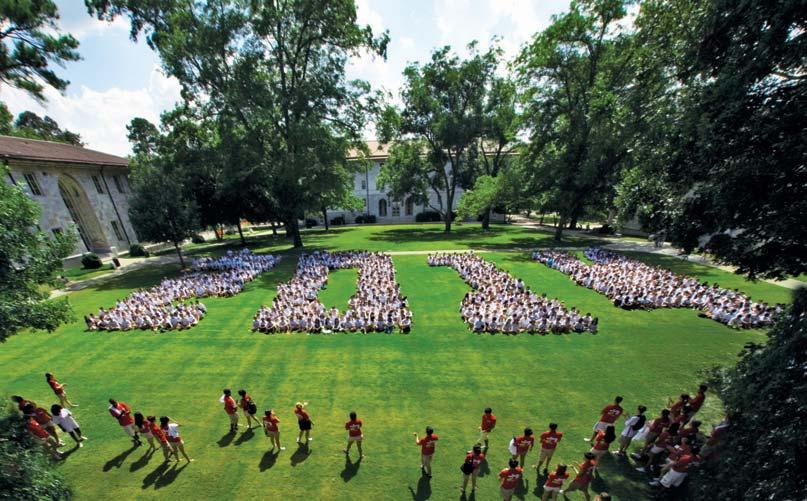
Editor Paige P. Parvin 96G paige.parvin@emory.edu
Art Director
Erica Endicott
Production Manager
Stuart Turner
Editorial Intern
Alyssa Young 11C
Contributors
Patrick Adams 08MPH
Riley Blanton
Susan Carini 04G
Beverly Clark
Laura Douglas-Brown
95C 95G
Maria M. Lameiras
Eric Rangus
Associate Editor Mary J. Loftus mary.loftus@emory.edu
Lead Photographer
Kay Hinton
Copy Editor
Jane Howell
Photographers
Ann Borden
Bryan Meltz
Emory Magazine Editorial Advisory Board
Arri Eisen
Senior Lecturer, Biology
Bridget Guernsey Riordan
Dean of Students
Samantha Ehrlich 10C Copresident, Student Alumni Association
Ginger Cain 77C 82G
Director of Public
Programming, Emory Libraries
Gary Laderman
Professor of Religion
Tim Hussey
Director, Marketing and Communications, School of Law
Kathy Kinlaw 79C 85T
Associate Director, Center for Ethics
Karen Martucci Director, Academic Services, Oxford College
Jeff Molter
Associate Vice President, Health Sciences
Communications
Steve Fennessy
Editor, Atlanta Magazine
Michelle Ye Hee Lee
Editor, Emory Wheel
Ex Officio
Ron Sauder
Vice President for Communications and Marketing
Susan Carini 04G
Executive Director, Emory Creative Group
Allison Dykes
Vice President for Alumni Relations
Gary Hauk 91PhD
Vice President and Deputy to the President
EMORY MAGAZINE (USPS-175420) is published quarterly by Emory Creative Group, 1762 Clifton Road, Plaza 1000, Atlanta, Georgia 30322. Periodicals postage paid at Atlanta, Georgia, and additional mailing offices. POSTMASTER: send address changes to OFFICE OF ALUMNI AND DEVELOPMENT RECORDS, 1762 Clifton Road, Suite 1400, Atlanta, Georgia 30322. Emory Magazine is distributed free to all alumni and to parents of undergraduates, as well as to other friends of the University. Address changes may be sent to the Office of Alumni and Development Records, 1762 Clifton Road, Suite 1400, Atlanta, Georgia 30322 or eurec@ emory.edu. If you are an individual with a disability and wish to acquire this publication in an alternative format, please contact Paige P. Parvin (address above) or call 404.727.7873. No. 111006-1 © 2010, a publication of Emory Creative Group, a department of Communications and Marketing.
Emory’s new, three-story Oxford Road Building is a place to socialize, sip a Starbucks latte, pick up a best seller at Barnes and Noble, buy a new laptop or a textbook, meet a study group, mingle with potential students, bring the kids for cocoa on a Sunday, get a holiday gift for Mom, or even fi nd a quiet spot to sit and read. Photo by Bryan Meltz.
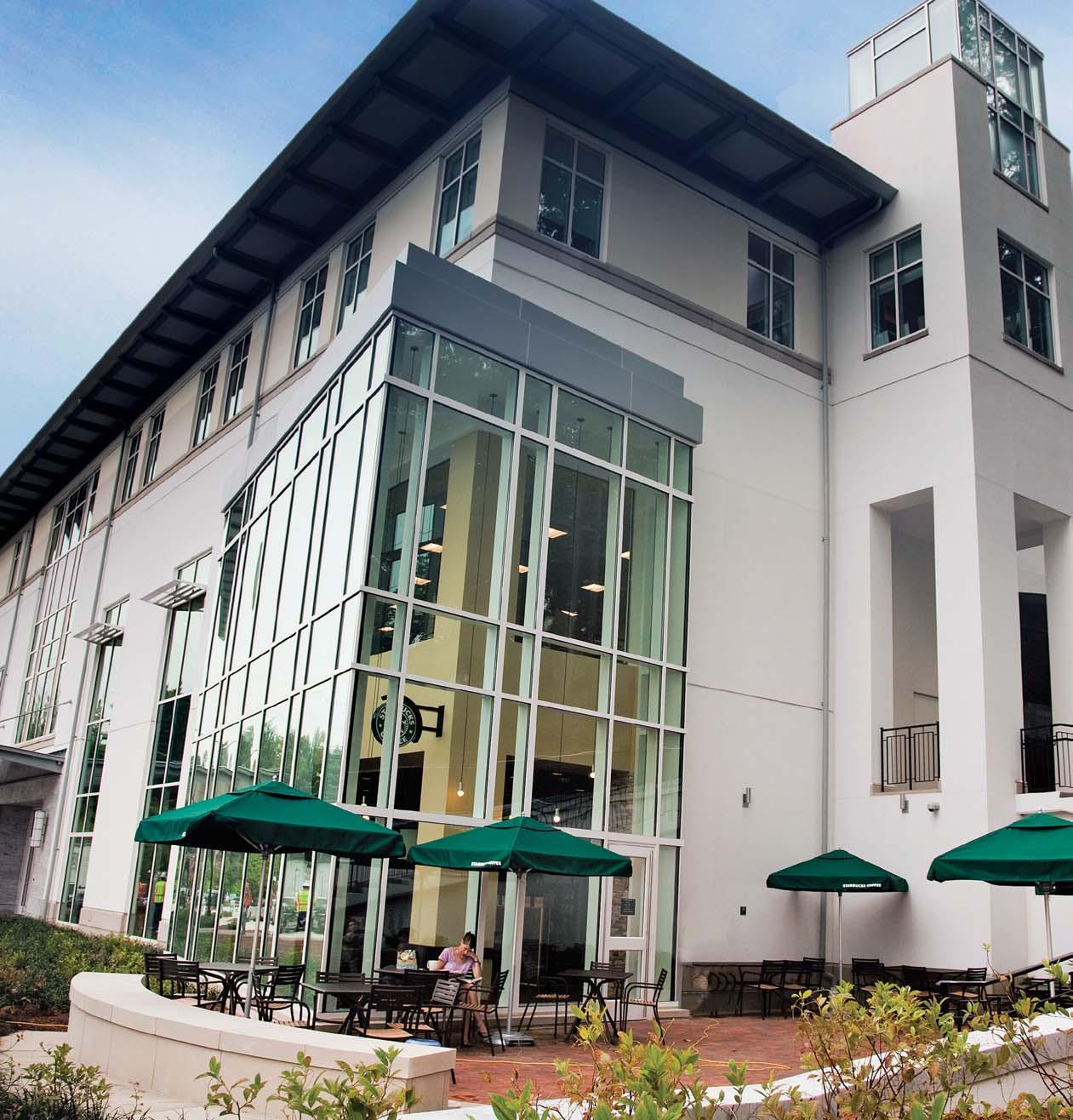
When my friend and colleague Mary Loftus journeyed to Mozambique earlier this year to report on Emory-based efforts to strengthen public health care there, she called me from the plane before taking off from Hartsfield-Jackson. Traveling with an international health organization, she was settling comfortably into her seat, a movie screen in front of her and a glass of wine in her hand. At home, cooking dinner and checking science homework, I felt a pang of envy.
On the ground in Mozambique, though, the setting was literally another world: communities ravaged by malaria and AIDS, poor rural villages, struggling farmers, hungry children, and health clinics with no running water. Mary wrestled for weeks after her return to reconcile her own comfortable life with the images of hardship and want she brought home—richly described in her article on the work of alumna Courtenay Dusenbury 08MPH and the International Association of National Public Health Institutes (IANPHI).
I heard a similar story just this week from Bryan Meltz, a University photographer, who has gone twice to Haiti since the massive January 2010 earthquake to volunteer and to document the devastation there. During a slideshow at Woodruff Library of some of her stunning photographs, Bryan described the relatively plush quarters accessible to aid workers and volunteers in Port-au-Prince, and her corresponding guilt and frustration over the primitive conditions of the tent cities where many Haitian residents are now forced to live.
When confronted by poverty, most of us—particularly in a community like Emory, where there are resources, opportunity, and a generally shared desire to help— experience conflicting emotions, often accompanied by the discomfiting sense that our presence and our pity may be patronizing to those we would like to aid. In August of this year, Kennedy Odede, a Kenyan student at Wesleyan University, published a scorching criticism in the New York Times of “slum tourism,” a practice he said “turns
poverty into entertainment, something that can be momentarily experienced and then escaped from. People think they’ve really ‘seen’ something—and then go back to their lives and leave me, my family, and my community right where we were before.”
Fair enough, and I don’t know anyone who would set out to be the sort of passive “tourist” Odede describes. But I do know of many at Emory and among our alumni who would rather find ways to contribute—and deal with any accompanying guilt or criticism—than look the other way.
At the dedication of the new Claudia Nance Rollins Building at the Rollins School of Public Health this month, President James Wagner noted that Rollins now receives more applications for its global health programs than any other public health school in the country, and ranks second only to Johns Hopkins in overall applications. These remarkable statistics are a result of the school’s extraordinary growth in scope, resources, global focus, degree offerings, faculty, and space in the thirty-five years since its beginnings; Rollins also celebrates twenty years as a school and fifteen years of Dean James Curran’s leadership this fall.
The school claims nearly five thousand alumni, like Dusenbury, who is working to create new systems for public health care and surveillance in Mozambique and other countries through IANPHI. Since the civil war there ended, tourism has bloomed around the country’s picturesque beaches, but on Dusenbury’s frequent visits she’s more likely to be found in a meeting than a seaside café.
Another Rollins graduate, David Thon 08MPH, also worked with local residents in Africa to improve conditions—but in his home country of Sudan. A “lost boy” who fled his village during civil war more than twenty-five years ago, Thon went on to earn a degree at Rollins and then returned to Sudan with The Carter Center’s Guinea Worm Eradication Program. Before Thon returned to the United States this summer, he welcomed his field replacement, Adam Koon 08MPH, to Sudan. “The day Adam got
there, we had to walk six hours, almost all through water,” Thon told Emory Magazine.
Health experts at Rollins and beyond also make up pieces of the giant puzzle representing Emory’s progress in the fight against AIDS. Collaborative efforts across the University are helping to slow the advance of the pandemic, with successes on all fronts—in research labs, pharmaceutical development, vaccine testing clinics, communities in Africa and India, and on American streets. In this issue of Emory Magazine, we feature highlights of the past three decades—including the AIDS Vaccine 2010 conference taking place here at Emory this month.
I would be remiss not to offer my usual disclaimer: in these few pages we can present only a fraction of the thousands of examples of Emory’s impact on global health. But I hope that the observations of storytellers like Mary, Bryan, and another Rollins alum, Pat Adams 08MPH, who writes about his classmate David Thon, might enhance that impact just a little by increasing understanding—not just of the Emory figures but of those they are trying to serve.
Nicholas Kristof, the New York Times columnist and author whose reporting on Guinea worm disease is spotlighted in Pat’s story, recently was obliged to defend himself on his blog against barbs that in some ways echo the criticisms of Odede, above. Readers claimed that his reporting too often presents Africans as “victims” and white foreigners as “saviors.” Recalling his series of well-read articles on sex trafficking in which he described buying two teenage prostitutes himself and returning them to their families, Kristof said, “The approach may have offended some people as patronizing, but it sure brought attention to the issue.”
Telling such stories is no pleasure tour, as Kristof can attest, but it can perhaps aid progress. It may help to raise hope. And it is undoubtedly a privilege.—P.P.P.
Another outstanding job with the recent issue of Emory Magazine (summer 2010). The cover is very clever. This magazine can compete successfully with any magazine on the commercial market. I enjoy reading it and admire the entire layout. Congratulations to you and your staff for another excellent edition!
Linda Torrence Stone Mountain, GeorgiaI had to chukle as I red the mesage onthe morter baord of “GET TO THE CHOPER” so artfuly displayed with duck tape in honer of the comencmint speaker, Arnold Swaznagger. Let’s hope the poor feller ain’t no jernalism or english majer. I bet even Schwartzeneggger wud no that “chopper” has TWO “P”s.
 Alan M. Sanders 85OX Blairsville, Georgia
Alan M. Sanders 85OX Blairsville, Georgia
I wanted to let you know how much my husband looks forward to getting Emory Magazine and reading the alumni profiles and updates. He particularly enjoyed a profile of an Emory alumnus who was deployed as part of a Coast Guard mission to Haiti that appeared in the magazine a few months back [“Coast Guard to the Test,” spring 2010]. My husband is a U.S. Air Force JAG currently deployed to
Bagram, Afghanistan, as part of the Joint Task Force handling detainee review boards at the prison in Bagram. I know it meant a lot to him to hear other alums are abroad, in uniform, and making a difference! Thanks again for your work on this publication. I send every issue to him.
Meghan Brinson, wife of Tony Ghiotto 05L Charleston, South CarolinaI liked the section in the Summer 2010 issue by Dr. Sidney Perkowitz [“Reel Science”]. My comment is in reference to his statement, “If you convey faulty information to that many people, you are doing science and society a big disservice. A little bit of fooling around is fine, as long as I can still enjoy my popcorn without getting too irked.” Now, for the most part, I agree. However, I think one ought to note that film is about artifice and invention, photography and storytelling; it is not meant to educate. If the public comes to believe in such science fiction tales, well, frankly, that is the public’s problem—the filmmaker has no more responsibility than any other artist. Thus I compliment the second part of his statement, in which he does indeed allow for a “bit of fooling around.” But let’s say I’m wrong; or, at least let’s say the editor(s) and/or Dr. Perkowitz do believe that, when dealing with weighty matters, the artist ought to try his best not to mislead people on such issues. Do you not think, then, that there ought to have been a parallel piece concerning the lies and abuses about history and religion in the cinema? You could have, for instance, had a section that exposed such works as Stigmata and The Da Vinci Code. These films “irk” those who have had a formal (or even informal) education in history and theology as much or more than Dr. Perkowitz in science fiction.
stroll over to the humanities side of Emory’s campus and talk to some of his colleagues about the power of metaphor. Maybe then he won’t be so inclined to “get irked” every time he takes a trip to the movies.
 Alexandra Dickson 03C New York, New York
Alexandra Dickson 03C New York, New York
I really enjoyed the Hollywood issue of Emory Magazine. As a lifelong movie fan, however, I feel compelled to point out that there were two movies about volcanoes in 1997. One was called Volcano and starred Tommy Lee Jones and Anne Heche; the other was called Dante’s Peak and starred Pierce Brosnan and Linda Hamilton.

 Madeline Griffin 76L Atlanta
Madeline Griffin 76L Atlanta

The Summit: Bryan Garrett 85OX 88C, left, and David Hart 87C on August 27 at the summit of Mount Whitney in California’s Sierra mountains, the highest peak in the continental U.S. at nearly 15,0000 feet.
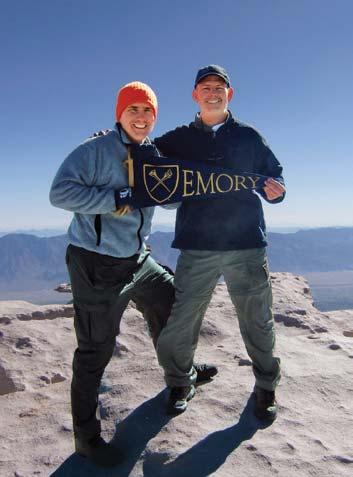
Perhaps Dr. [Sidney] Perkowitz should steer clear of television, film, poetry, literature, theatre, and visual art. At first I thought his premise that only one scientific law should be allowed to be broken per film was a funny idea—until I continued reading and gleaned that he was serious! After all, without imagination, many scientific discoveries never would have happened. I suggest Dr. Perkowitz take a
A Modest Proposal: Thanks to Rob Kimmer 02C of Washington, D.C., for letting us know about a surprise event at Dooley’s Den at the Depot. On July 3, Kimmer, the trademark and copyright attorney chair at Litman Law Offices, chose it as the setting to propose to Arielle Green 03C, marketing manager for the SMO/DMO energy company. With the help of kindly Campus Facilities and Food Services staff, as well as his college roommate, Adam Jacobs 02B, Kimmer had the opportunity to pop the question in one of the couple’s favorite spots on campus. Kimmer and Green were friends in college and stayed in touch over the years. “We have built many memories together at Emory,” he says, “and I’m sure there are more to come.”

It’s late on a steamy August afternoon, and Glenn Auditorium is blessedly cool and nearly empty save for dust motes dancing in the sun and University organist Timothy Albrecht, who is filling the space with Bach.
Then they begin to arrive—trickling in at first, then flooding the aisles in their flip-flops and shorts and skinny jeans and T-shirts, talking and texting on their phones, scanning for friends and seats, and sliding into the wooden pews shoulder to shoulder. With their edgy energy, they seem, at first, wholly uncertain and out of place in this formal setting.
They are the Class of 2014, the newest kids on campus and the youngest charges of Robin Forman, recently appointed dean of Emory College of Arts and Sciences, who is making one of his first public appearances at the annual fall Convocation. He’s a freshman too, he tells them, having been at Emory since early July—although he cuts a somewhat more impressive figure in his academic regalia.
For Forman, the students are at the heart of what drew him out of his more solitary role as a professor of mathematics and eventually into the position of dean of
undergraduates at Rice University, where he joined the faculty in 1987.
“If you had told me ten years ago that I would be an administrator, I would have thought you were crazy,” he says. “I truly loved the life of a mathematician. But a number of things happened to slowly change my mind.”
In 2001, Forman became chair of the math department at Rice and found that he enjoyed collaborating and creating initiatives that benefited both faculty and students. He and his family also lived on campus for a time when he served as faculty master of a residential college. “That was a remarkable experience, getting to know the students outside the classroom,” he says. “I gained a deeper understanding of the complicated nature of their lives and a greater appreciation for all they are able to accomplish in these four years.”
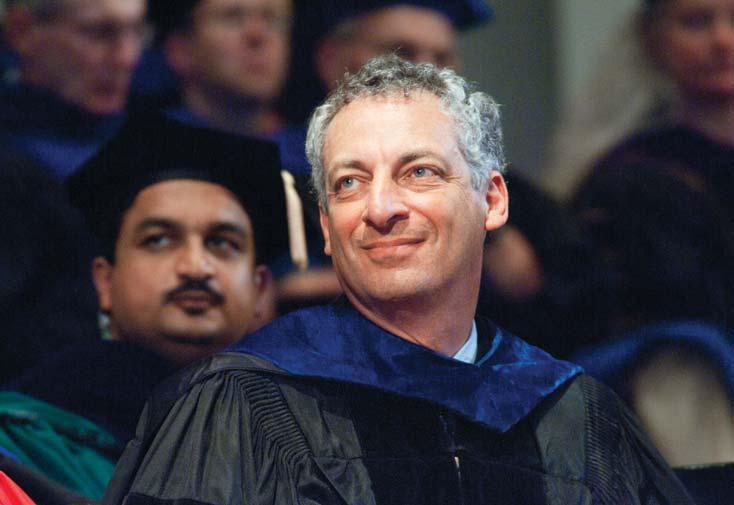
Alumna honored as top poet Carmen Gillespie 92PhD has been chosen by Essence magazine as one of the top forty poets to be published by the magazine in the past forty years. Gillespie, a professor of English and creative writing at Bucknell University, also won the annual Naomi Madgett Long Prize, sponsored by Lotus Press, for her collection Jonestown: A Vexation, to be published in January.
Appointed Rice’s first dean of undergraduates in 2005, Forman led the creation of a Center for Civic Engagement to enhance student involvement with the greater Houston community through volunteer, internship, and research roles. He also was a champion of interdisciplinary scholarship, helping to establish minors such as computational finance, global health technologies, and energy and water sustainability.
When he learned of the departure of Robert Paul, who served as dean of the College since 2001, he felt an unexpected tug. “Emory is one of the world’s great research universities,” Forman says. “Even from Houston, I could see that Emory was on a remarkable trajectory. Helping to continue that was a very exciting idea.”
“The search committee had a series of necessary qualifications, which included
Emory info on the go Emory Mobile, a collection of smartphone apps, now allows users to navigate the Atlanta or Oxford campuses, browse event calendars, get the latest news, find contact information, identify a place to eat on campus, browse the libraries’ catalog, and more. University Technology Services and the Office of Communications and Marketing developed Emory Mobile in partnership with Blackboard Mobile.
excellence in scholarship, a commitment to liberal arts education, and demonstrated academic leadership,” says Micheal Giles, Goodrich C. White Professor of Political Science, who cochaired the search committee with Lisa Tedesco, dean of the Laney Graduate School. “Robin surpassed our expectations in each of those criteria. It was also important that he had achieved these at Rice University, an institution similar in many ways to Emory. But it was probably the intangibles that made him the final choice out of a very competitive field. He was well informed on pressing issues at Emory and in higher education generally and, most importantly, took time to listen to his audience.”
“We could immediately tell that his leadership turned on engaging seriously with students and faculty,” agrees Tedesco. “I think that he approaches academic leadership with an equivalent rigor that one approaches scholarship. He has a deep appreciation for graduate education, and I’m both excited and energized by his commitment.”
One of Forman’s hopes for Emory is that he can help facilitate interdisciplinary connections, although in new ways; at Rice, he did not oversee faculty, which is a core responsibility of his role here.
“Emory has been extremely ambitious and creative in finding ways to support interdisciplinary work, which is one of the elements that attracted me,” he says. “My goal is to reduce the administrative burdens and risks associated with interdisciplinary work. The faculty are already interested. Much of it will happen on its own if we just make it less burdensome. The challenge is that there are too many opportunities and we can’t pursue them all—we have to look for areas where Emory can distinguish itself and pursue those.”
Forman finds much common ground between Emory and Rice, including the high caliber of both students and faculty. He also is committed to cultivating the relationship between Emory and Atlanta, which he views as similar to that between Rice and Houston. “Atlanta is a tremendous city with wonderful resources,” he says. “The engagement with the external community is something I’m very interested in.”
During the weeks after his arrival, Forman spent most of his time walking around the University campus and visiting with the faculty, becoming increasingly impressed, he says, by the scholarship taking place across
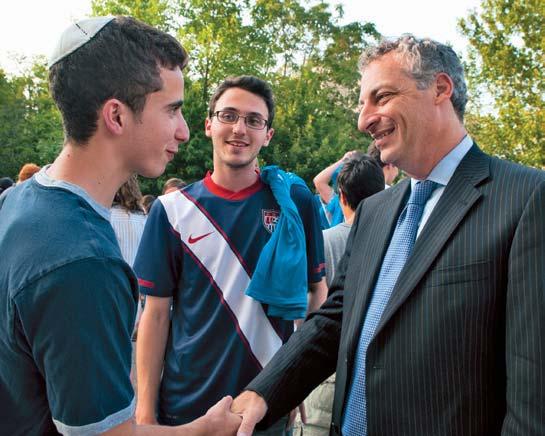
disciplines and departments. He says he will enjoy helping to raise Emory’s stature among the nation’s top research institutions by serving as an “advocate and cheerleader for the College.”
“Robin is a noted mathematician and clear thinker who is committed to combining cutting edge research and stellar classroom instruction. Under his watch, the College will reexamine its administrative organization, with the goal of aiding the priorities just mentioned; it will seek new ways of improving the educational experience for students; and it will make strategic hiring decisions, with the goal of advancing the College’s strategic plan,” says Earl Lewis, provost and executive vice president for academic affairs. “Finally, I think Robin will explore new ways of improving the College’s economic fortunes, in light of the global recession. He will forge these changes in a manner consistent with his management style: inclusive listening and decisive action.”
Forman says he is especially impressed by the welcome he has received—both for himself and for his wife, Ann Owens, formerly executive director of the Houston Grand Opera, and their son, Saul, who is twelve and rumored to be something of a baseball prodigy. Saul will be attending Westminster Schools and playing ball for the East Cobb Astros. “We’re a baseball family,” says Forman, whose own interests include chess and stand-up comedy.
“I have never been on a campus that took the notion of community as seriously as Emory does,” Forman says. “From the first phone call, everyone has been tremendously welcoming, not just to me but to my wife and son. It seems to be a very real part of what Emory is.
“There is truly spectacular work taking place in every area of campus—both pathbreaking research and creative pedagogy,” he adds. “The more I learn, the more excited I am to be here.”—P.P.P.
Associate Professor of Sociology Tyrone Forman, codirector of Emory’s Race and Difference Initiative, is one of three scholars in the country selected as an Alphonse Fletcher Sr. Fellow. The Fletcher Fellowship commemorates the fiftieth anniversary of the U.S. Supreme Court’s landmark Brown v. Board of Education decision, and provides a stipend of $50,000 for work that contributes to improving racial equality in American society.
Maria Aaron 99R, a comprehensive ophthalmologist at Emory Eye Center and associate professor at the School of Medicine, has won the Straatsma Award for Excellence in Resident Education. Aaron served as the center’s residency program director for a decade.She is now chief of service in ophthalmology at Emory University Hospital Midtown.
When Jonathan Schoder 14C decided to take a year off before starting college, he didn’t intend to become a card shark and make enough money to finance his Emory education.
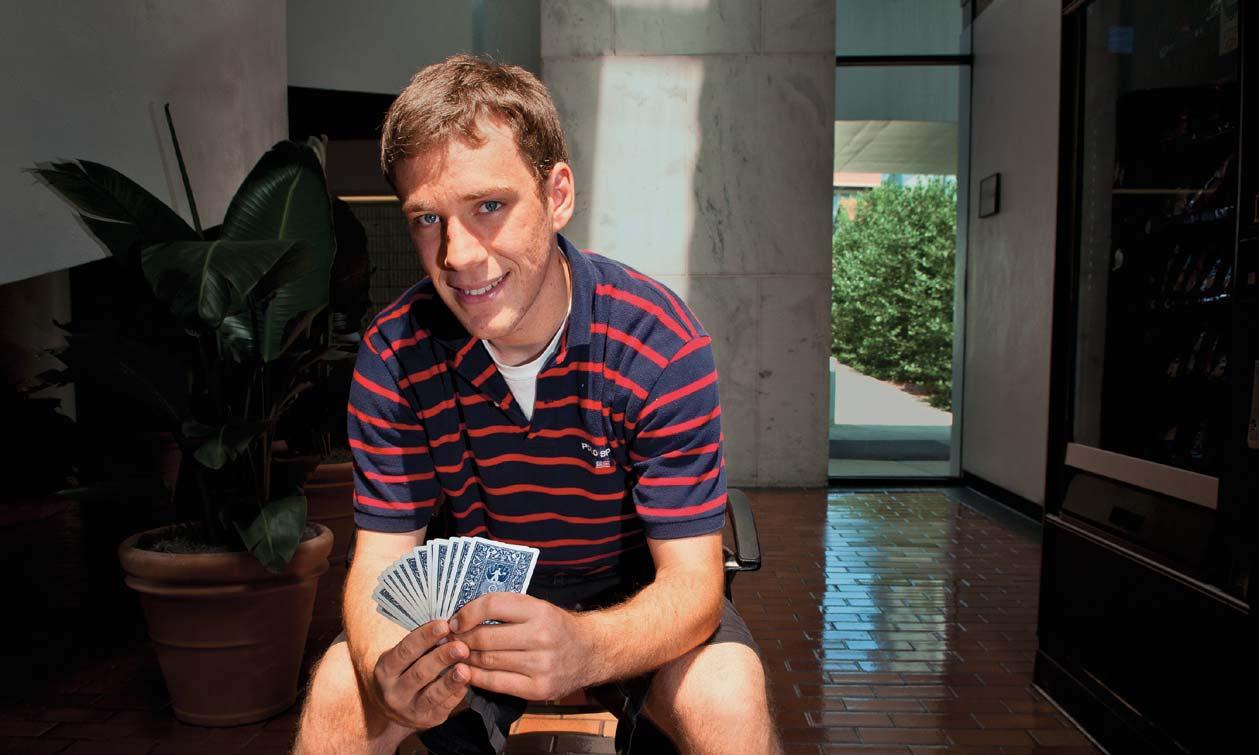
Actually, he planned to hike the Appalachian Trail.
“I started out, and three weeks into it, my back gave out, and I had to stop and come back home,” says Schoder, who is from Ft. Lauderdale. “I needed to do something for about six months, and I needed to make some money, so I started playing poker for something like ten to twelve hours a day.”
With considerable experience playing poker in high school, Schoder quickly joined the ranks of regulars who meet at online high-stakes tables every day and night. Often he was playing eight to sixteen tables at once. In January, he even traveled to Australia to compete in
the Aussie Millions poker tournament, the second-largest in the world. (Then he spent three months in New Zealand doing a National Outdoor Leadership Society course, so he managed to do some hiking after all.)
There’s a common notion that career poker players are both too lucky and too lazy to get a real job, but Schoder begs to differ.
“Poker at that level requires extreme mental focus for long periods of time,” he says. “You have to have a really strong math background, especially playing online, because you have to base all your decisions on math. It’s a lot of hard work.”
Schoder plans to major in business at Emory, although he liked the fact that here he can study liberal arts for two years before committing to business. He also was attracted to the emphasis on public service he found at Emory. “There is a
The Reverend Margot Kässmann, former head of the Protestant church in Germany and a Lutheran theologian, is in residence at Emory during the fall semester, serving as Distinguished Theologian-in-Residence at Candler School of Theology and as a Distinguished Fellow of the Claus M. Halle Institute for Global Learning.
great sense of community here and a focus on giving back to others after you graduate that I didn’t see at some of the other business programs,” he says.
Schoder’s poker face will no doubt serve him well in the business world, where he would eventually like to start his own company—possibly creating poker training videos. “A lot of the skills you learn at poker parallel with the business world,” he says. “Staying calm and thinking rationally, learning to manage money, understanding that nothing comes without hard work and dedication.”
If you’re wondering what Schoder’s parents think about his hobby, he says they have been very supportive. “They understand that it’s a skill-based game that you can generate revenue from,” he says. “And hopefully by the time I graduate, I will have earned enough to pay for college myself.”—P.P.P.
Through a new multiyear partnership agreement between Emory Healthcare and Georgia Tech Athletics, Emory Healthcare will become the official health care system for all Yellow Jacket sports. The partnership builds on and expands the existing decade-long relationship between the Emory Sports Medicine Center and Georgia Tech Athletics.
Schoder joins one of the most academically competitive and diverse freshman classes in Emory’s history. In August, Emory College of Arts and Sciences welcomed 1,348 students chosen from a highly selective pool of 15,550 applicants.
The class—56 percent female and 44 percent male—hails from forty-seven states and beyond, with 17 percent of the students (both U.S. and non-U.S. citizens) representing twenty-four countries outside of the United States. Almost two-fifths of the class hails from the Southeast, with about 20 percent from the Mid-Atlantic region and the rest spread among the West, Southwest, Midwest, and New England.
Academically, the freshman class earned an average GPA of 3.84 in high school. Their median SAT score is 1399 for the combined critical reading and math sections. The number of students for whom Emory is the top choice also remained
Call it the first happy hour with health benefits. A chemical analysis of the bones of ancient Nubians shows that they were regularly consuming tetracycline—most likely in their beer. The finding is strong evidence that the art of making antibiotics, which officially dates to the discovery of penicillin in 1928, was common practice nearly two thousand years ago.
The research, by Emory anthropologist George Armelagos and medicinal chemist Mark Nelson of Paratek Pharmaceuticals, is published in the American Journal of Physical Anthropology.

high: Early decision applicants make up 38 percent of the class.
“We had an exceptional applicant pool of students this year who expressed strong interest in joining the Emory community,” says Jean Jordan, dean of admission. “They were attracted to Emory’s engaged learning opportunities in research, internships, and study abroad, as well as our commitment to service where nine out of ten students volunteer during their time here.”
Oxford College welcomed nearly 550 first-year students. In the class, Oxford’s largest ever, 54 percent are from outside the Southeast and represent thirty-eight states and twenty nations.
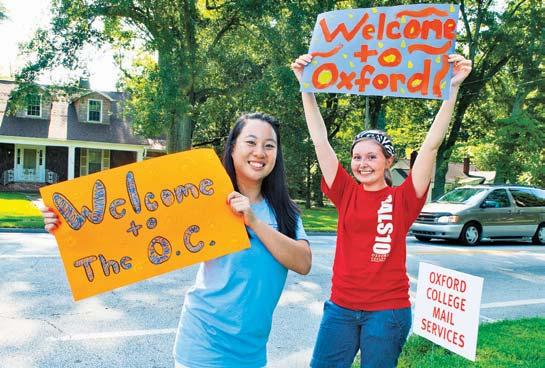
Nearly nine of ten students who enroll in Emory College will graduate in four years. Nearly six in ten of those will pursue graduate or professional school studies within three years of their college graduation.
The new Longstreet-Means Residential Hall, the University’s newest freshman housing facility, opened in time to welcome this fall’s incoming Class of 2014. The five-story, 351-bed hall features an open common area with stone fireplace, study lounges, copper accents, sustainable features (including recycled materials and rainwater collection), and “global cultures” programming.
Ancient brewmasters may have purposely made their beer medicinal by lacing it with grain contaminated with antibiotic-producing Streptomyces bacteria. “We tend to associate drugs that cure diseases with modern medicine, but it’s becoming increasingly clear that this prehistoric population was using empirical evidence to develop therapeutic agents,” Armelagos says. “Given the amount of tetracycline there, they had to know what they were doing. They may not have known what tetracycline was, but they certainly knew something was making them feel better.” Armelagos, a bioarcheologist and expert on prehistoric and ancient diets, led the team that discovered what appeared to be traces of tetracycline in human bones from Nubia dated between A.D. 350 and 550, populations that left no written record. The ancient Nubian kingdom was located in present-day Sudan.—Carol Clark

Former President Jimmy Carter holds annual town hall
University Distinguished Professor Jimmy Carter, eighty-six, held his twenty-ninth annual town hall for Emory’s freshman class at the Woodruff P. E. Center, answering questions ranging from the political (his thoughts on the Tea Party) to the personal (how he courted his wife, Rosalynn) to the person he’d like to see play him in a movie (Jon Stewart, which was met with much laughter).
BILL AND CAROL FOX CONTINUE TO SUPPORT THEIR FAVORITE CAUSE
Student, alumnus, staff member, administrator—William Fox 79PhD has had many roles at Emory. And Emory is many things that it once was not because of Bill Fox.
Now Fox and his wife, Carol, are expanding their legacy here with a $1
million bequest that will benefit a range of causes across campus, each of which has had a special meaning for the couple. (Please see “Emory Icon Creates Heartfelt Legacy” in the Campaign Chronicle, page 43, for full details on the gift.)
“The love we have for Emory is nothing less than profound and sacred,” says Fox, who was dean and vice president of campus life from 1979 until 1991, then served as senior vice president for institutional advancement (now called Development
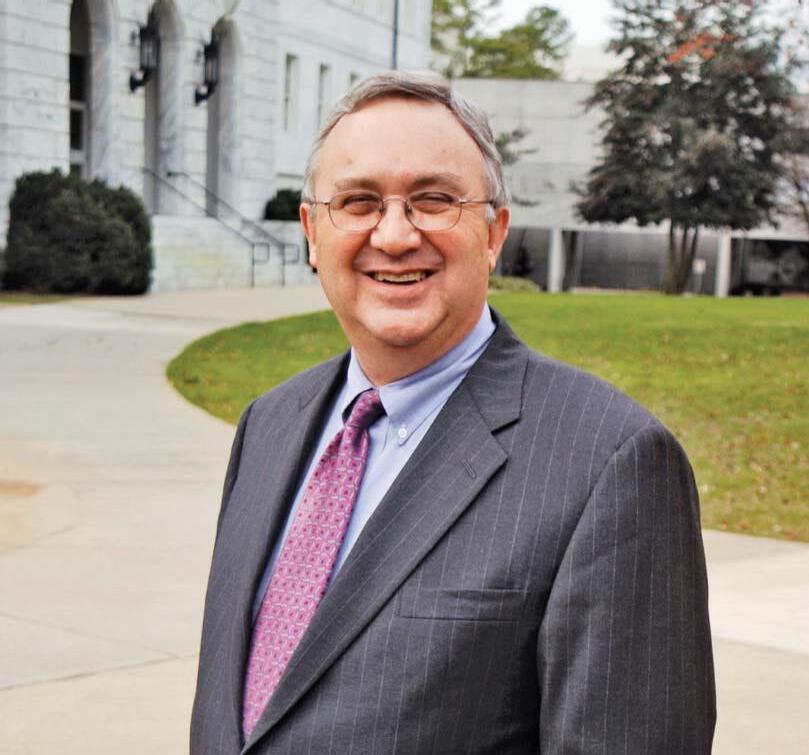
Researchers at Emory are testing what may be the first drug therapy for Fragile X syndrome, the most common cause of inherited mental impairment, caused by a genetic mutation discovered in 1991 by Stephen Warren, chair of the human genetics department. The drug has produced positive cognitive results in mouse models.
and Alumni Relations) from 1991 through 2004. He also loved teaching, taking time each year to teach at least one class as a professor of interdisciplinary studies. “I had long dreamed of a place to which I could give my career and my limited abilities, and I found that beautifully at Emory,” Fox says.
Before there was an online Facebook, Fox was legendary for his habit of memorizing the directory published with incoming students’ names and pictures each year so he could greet each new freshman by name when he met them on campus.
Wendell Reilly 80C is an active Emory alumnus, chairing the campaign for Emory College and serving on the Board of Trustees. He and his wife, Mary 81C 00T, are stalwart Emory supporters. But if it weren’t for Bill Fox, Wendell Reilly says, he might never have graduated.
“I’ll always remember a conversation I had with Bill more than thirty years ago. I was a college sophomore, sour on school, down on myself, and thinking seriously about dropping out. I went to Bill to share my plans, and his response was over the top,” Reilly recalls. “Basically, according to Bill, the world would come to an abrupt end if I left Emory. He seemed genuinely crushed by my news, and the effusive adulation that followed ranged from gross exaggeration to ridiculous. I didn’t believe a word he said—but he seemed to believe it. He saw something in me that I couldn’t see in myself. That’s Bill’s greatest gift, I think, and for that I’m most grateful.”
Emory trustee Laura Hardman 67C says Reilly’s anecdote perfectly illustrates Fox’s transformative presence at Emory.
“There are people all over this country who have that kind of story about Bill,” says Hardman. “Bill knew every student, whether an athlete or a scholar or a fraternity person or a music major. Everyone
Fat tissue around the heart secretes large amounts of inflammatory hormones, which may result in greater risk of heart disease, says Paolo Raggi, director of Emory’s cardiac imaging center. Raggi and other Emory researchers found that a CT or MRI measuring the volume of fat around the heart can be a “gatekeeper” to whether a patient should have further testing.
responded to him, and he reached out to everyone. His was an extraordinary presence on campus, and Carol was always with him at every event. The bonds they created are long lasting and they mean so much to people.”
Emory President Emeritus James Laney says Fox’s commitment to Emory and the welfare of its students were very personal interests for Fox as dean and vice president for campus life.
“He took a very ordinary campus life program in 1979 and turned it into one of the best in the country through his immense commitment to students,” Laney says. “He oversaw the development of facilities that enhanced campus life immeasurably, but he also knew the students and saw to their welfare. As a result, the morale of the students became impressively high, largely due to his personal interest in their happiness and in their disappointments. It was amazing.”
Students swimming at the Woodruff P. E. Center or studying in the R. Howard Dobbs University Center may take those facilities—and many other aspects of campus life at Emory—for granted, but alumni and administrators from Fox’s era as dean of campus life know he is largely responsible for the benefits today’s students enjoy.
“Bill had a genuine concern for students and wanted do the best he could for them in terms of campus life. He really worked on developing things he thought would increase the Emory spirit, including the inauguration of intercollegiate basketball and baseball, in which Emory has been quite successful,” says Linton Bishop Jr. 47M, who was a physician at Crawford Long Hospital (now Emory University Hospital Midtown) and an Emory trustee who worked closely with Fox on the campus life committee.
Fox became dean of campus life shortly before J. Davidson “Dusty” Porter 85C started at Emory.
“My years at Emory, 1981 through 1985, were a very exciting time at Emory University and Emory College. There was a shift toward a real campus life philosophy,” Porter says. “Bill Fox knew it was important to foster community and to provide important cultural and social aspects to campus life.”
Porter, chief of student affairs at Maryland Institute College of Art in Baltimore, credits his experiences at Emory as the springboard for his own career.
“I think back to what I learned at Emory and to role models like Bill Fox with affection. The interest he took in every student was incredible. Bill remains a mentor for me today,” says Porter, a past chair of the Emory Alumni Board.
In 1991, Laney appointed Fox as vice president for institutional advancement, where he took on the role of Emory’s top fund-raiser and one of its most prominent ambassadors.
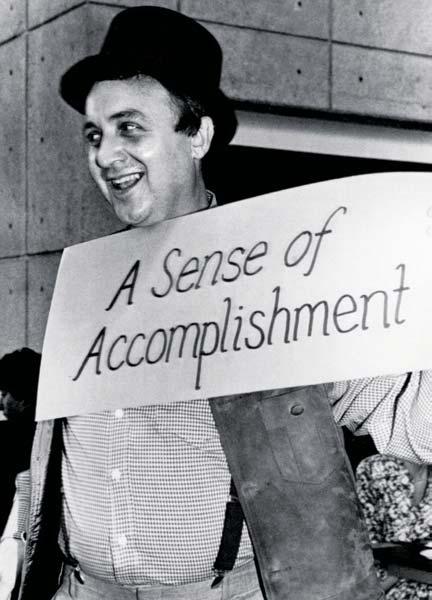
“Bill impressed me so much and I felt, in a way, that having dealt with generations of students in campus life, it was now time for him to have relationships with them as alumni,” Laney says. “In both cases I turned to him when I really needed someone to do an outstanding job, and he never disappointed me. Today’s Emory would not be conceivable without Bill Fox’s contributions, both in campus life and in the field of development.”
During his fourteen years as head of the University’s development efforts, Fox led a capital campaign that raised $420 million, and overall Emory raised more than $1.78 billion in gifts, pledges, and planned gifts.
The Foxes’ planned gift to Emory demonstrates their continued care for the University community, undiminished since Fox’s retirement in 2005. “We decided that we should leave money to those areas where I had directly worked, with Carol alongside me. It was our only way, given
limited resources, to make sense of our gift,” Fox says.
In 2006, the couple was honored with the naming of the Bill and Carol Fox Center for Humanistic Inquiry, and in 2007 Fox was awarded the Emory Medal, the University’s highest honor for alumni.
“Together, though in different ways, Bill and Carol Fox have given nearly three decades of their lives to making Emory a place where matters of intellect cannot be considered without taking account of the richness of the human spirit,” says Emory President James Wagner. “Their gift, which will especially strengthen work in the humanities, student life, and scholarship, will continue to have a similarly expansive impact on the life of the heart and mind at Emory.”—Maria M. Lameiras
Emory’s Center for the Study of Law and Religion (CSLR) hosted the Pursuit of Happiness Lectures Series in September and an interreligious happiness conference in October to correspond with the Dalai Lama’s 2010 visit. These events culminate a five-year CSLR project on the ancient ideal of the pursuit of happiness.
Founded to advance scholarship and education in ethics, the Emory Center for Ethics has become a national leader in the exploration of contemporary moral questions. After welcoming a new building and a new director, Paul Root Wolpe, in 2008, the center celebrates twenty years this fall. A public event, “Crossing the Line: The Ethics of Intervention,” in early October marked the milestone.
T-shirts and hoodies and bears, oh, my! The “spirit shop” on the bookstore’s third floor is the place for all things Emory, and the merch selection is bigger and cooler than ever before. Eagles athletics and their mascot, Swoop, get special focus in a mural on the wall and a range of clothing and retail items on the floor. From coffee mugs and wine glasses to golf balls and tote bags, there’s no shortage of ways to show and share your Emory pride.
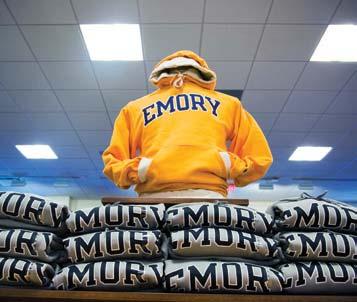
3 FLOOR

If you’ve been to the Harvard Coop, you know that a university bookstore can be a lot more than shelves of textbooks and some school T-shirts and mugs. Finally, Emory has a bookstore worthy of its campus community. The new Oxford Road Building opened this summer, and with it Emory’s Barnes and Noble, the revamped Office of Admission, and a Starbucks (but of course). Spacious, swanky, and sustainable, the space is already a magnet for a mix of students, staff, faculty, and Druid Hills families. Move over, Coop.
Where to get hooked up. After wandering row upon row of textbooks, one stumbles into an oasis of wired electronic bliss: the campus computer store. Previously housed in a trailer behind Dobbs University Center, the glassed-in corner shop proffers a respectable range of computers and accessories, most of which have a picture of an apple on them. No need to trek to Lenox Mall—that shiny new iPad, laptop, or mouse is just a short walk away.
1 FLOOR
Toto, I don’t think we’re on campus anymore. But wait, there’s my math professor! The bright Barnes and Noble retail space on Oxford Road blends funky lighting and trendy design with splashes of pure Emory, like the big faculty authors bookshelf and the murals featuring Druid Hills and the Atlanta skyline. “Everyone wanted it to be both Emory and Barnes and Noble,” says contract manager Bruce Covey. “It’s not a typical trade bookstore. There is more attention paid to academic subjects.” But that hasn’t stopped the surrounding community from making it their new go-to source for Stieg Larsson and Rick Riordan books.
Leapin’ laptops, Daddy Starbucks! Stone fireplace, sweeping windows, generous family-style tables, soft seating—all set off with a rustic, lodge-like décor. This spacious Starbucks cafe, said to be the largest on any college campus in the country, has quickly become the new study hall, gathering place, and wellspring of that dark, buzzy nectar, coffee. We think we’re gonna like it here.

2 FLOOR
Step into our living room. Adjoining the new undergraduate Office of Admission is a capacious, comfortable community space with a fireplace and windows overlooking Baker Woodland. Designed as a common area where prospective students might meet faculty and students who are hanging out in real life, the room is an impressive welcome to Emory. A few steps away, doors lead out to the beautifully landscaped Anne Register Jones Courtyard, named in honor of the wife of Boisfeuillet Jones and the mother of Emory trustee Laura Hardman 67C. Below the plaza, a parking deck: $2 an hour.
Time to hit the books. The bookstore’s second floor houses all academic textbooks, including those for the School of Medicine. Students can come and browse the many aisles for the semester’s required reading or order online and come in to collect their armload of untapped knowledge. There’s some nice lounge space, too, for studying and, you know, reading.

For the eighteenth consecutive year, Emory is among the top twenty national universities in U.S. News & World Report’s annual “America’s Best Colleges” quality rankings. Emory’s Goizueta Business School was thirteenth in the rankings of undergraduate business programs.
Emory shared the distinction with Rice University of being the only two top-twenty institutions also listed in the top twenty for best value (“Great Schools, Great Prices”) and on the top twenty “Up and Comers” list of schools having recently made the most promising and innovative changes in the areas of academics, faculty, student life, campus, or facilities.
Emory also was cited for its economic diversity, ranking sixth among national universities, with 14 percent of undergraduates receiving need-based Pell grants. In 2007, the University initiated Emory Advantage, a financial aid program to help lowerand middle-income undergraduate students and families reduce debt.
Emory ranked tenth nationally in percentage of alumni giving, with an average of 36 percent of alumni contributing to the school during a two-year period. The University is in the midst of Campaign Emory, a $1.6 billion fund-raising endeavor.
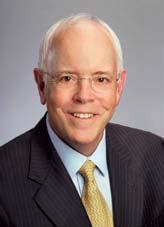
Wright Caughman can diagnose a melanoma or diagram a sentence with equal precision. The newly appointed interim executive vice president for health affairs, CEO of the Woodruff Health Sciences Center (WHSC), and chair of Emory Healthcare is a dermatologist by training, but he began his career as a high school English teacher in his hometown of Columbia, South Carolina.
A graduate of Davidson College, Caughman left teaching to pursue a degree at the Medical University of South Carolina. He completed his residency at Harvard Medical School, where he served as chief resident in dermatology. After serving as medical officer and principal investigator in the dermatology branch of the National Cancer Institute, Caughman moved his family to Atlanta and joined the Emory faculty in 1990.
In the past two decades, he has served Emory as chair of the Department of Dermatology, director of The Emory Clinic, and vice president for clinical and academic integration, in addition to his duties as a physician and a researcher.
“I’ve had the good fortune to experience WHSC from many different perspectives—physician, educator, researcher, and administrator—and to work alongside some of the most talented and dedicated people I’ve ever known,” Caughman says. “The amount I’ve learned from my colleagues, students, and patients over the past twenty years is humbling, and I’m still learning every day.”—Michelle Boone
Katrina, revisited: English professor Natasha Trethewey (above) received widespread national attention for her new memoir Beyond Katrina, including interviews with NPR’s Fresh Air, the New York Times, and the Atlanta JournalConstitution (AJC).


The skinny on the “anything you want” diet: “It’s no different from what we as dietitians and nutrition experts have been
saying for years and years. It’s healthy eating,” said Julie Schwartz, Emory School of Medicine nutritionist in a CNN interview. “All kinds of foods are allowed if they’re natural and not processed.”
Learning while serving: The AJC noted that nursing faculty and students travel to Moultrie, Georgia, every summer as part of the Farm Worker Family Health Program. “Rural America is underserved, and it’s a huge ethical problem,” said Judith Wold, director of the program.
Christian teens: “We think that they want cake, but they actu-
ally want steak and potatoes, and we keep giving them cake,” Elizabeth Corrie told CNN.com about the state of Christianity and faith among teenagers. Corrie is director of the Youth Theological Initiative at Candler School of Theology.
Hard times: Business professor Jeffrey Rosensweig was interviewed on CNN’s Newsroom about Americans losing value in their homes, losing their jobs, and losing wealth in the stock market.
The real thing: “Asa Candler’s creation of The Coca-Cola Company helped create a host
of Southern millionaires whose philanthropy helped dig Atlanta and the region out of the devastation of the Civil War,” Emory historian Gary Hauk told Investor’s Business Daily in an interview about the company.
The economy and the election: ‘82 all over again? “When the economy is faring poorly, the president’s party almost always takes a big hit in midterm elections,” political scientist Alan Abramowitz told NPR. “When you have the combination of a weak economy and a president with mediocre approval ratings, they will have greater than average losses.”
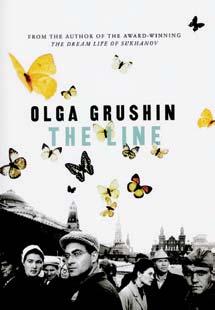
Olga Grushin 93C is a fierce, disturbing, exhilarating poet.
I offer that lead as a gentle corrective to readers and critics receiving The Line as her second novel. In The Line, Grushin consciously tilts toward a looser construction than in The Dream Life of Sukhanov (2006), aiming toward fable. When one’s first novel has been a crackling success— Sukhanov won the 2007 Young Lions Fiction Award and a fistful more of literature’s top honors—modifying the style of that earlier work can bring a few moody jeers.
The Line, like Sukhanov, is based in Russia. Since the girl with the pink butterfly sunglasses made her media splashdown in Atlanta in 1989—the first Russian citizen to enter a four-year program at an American university—Grushin has made this country her home, even having typically American jobs both during and after her Emory years, working in a post office during Christmas season, at Victoria’s Secret, and as a waitress in a jazz bar.

But the dark-eyed woman who rang up your stamps or shouted over the music to hear your drink order is simultaneously a citizen of Russia, and her command of its dualities— the grinding mindlessness of state-sanctioned rules and the wild, rebellious imaginative lives of its citizens—is once again on brilliant display in her second novel.
The Line follows a Moscow family—Anna, the mother, a middle-aged schoolteacher; her husband Sergei, a frustrated classical musician now playing the tuba in a state-sponsored band; Alexander, their wild child, who shrugs off his classes, choosing education on the city streets; and Anna’s mother, a studiously silent resident of the small apartment they share. (Watch out for her; she’s got a secret.)
Early on, Anna shares the party line, saying: “Hers was a good life, a stable life. None of them ever went hungry, their apartment was warm in winter, they had their fair share of comforts and, too, more than a few accomplishments.” It takes but a few more lines for her to acknowledge that—both materially and emotionally—theirs is mere existence.
Grushin chronicles Anna’s flight to freedom with dazzling economy, turning to the question of what Anna would change if she could: “But as [Anna] thought it, her lips must have moved, or perhaps she even whispered it half audibly, for a few children stopped writing and now were staring at her with flat, incurious eyes resembling buttons and beetles. Looking down quickly, she found herself studying her hands, the weathered, naked hands of a woman no longer young, with blunt nails and fingers that were too short, their tips crumbling with pale chalk—and then she knew where she would go as soon as she was set free into the glittering white stretch of the afternoon.”
The “where she would go” initially will confound non-Russian readers, perhaps excepting those who have read Vladimir Sorokin’s The Queue (1985). Anna chooses to get in “the line.” The line is one of many kiosks around the city—kiosks that are
familiar to Russian citizens, who have received food, medical services, and all manner of goods in this Waiting for Godot fashion.
For what is Anna standing in line? Everyone in the line speculates: will it be cakes, stockings, children’s coats, or oranges? Eventually, they learn their line is for tickets to the Igor Selinsky concert. Grushin loosely bases her plot on the return of the long-exiled Igor Stravinsky to Russia when he was eighty years old. As she notes, “The line for tickets began a year before the performance and evolved into a unique and complex social system. . . . After a year of waiting, an eighty-fouryear-old cousin of Stravinsky was unable to attend, as the tickets had sold.”
For Grushin’s characters, mysterious notes appear tacked to the kiosk, explaining in “state-speak” the delays: “Closed for accounting.” “Back on Monday.” “Out with flu. Will reopen in January.” Naturally, these are “lines”—in other words, deceptions. But for Anna and the other characters seeking redemption, these are just the first of many deceptions. It is the self-deceptions of Anna’s family—their fluctuating thoughts about which of them
Bell, previously a property manager, researched green cemeteries for years before establishing Milton Fields in June 2009. While church and city cemeteries are not regulated by the state, private cemeteries are. He had to receive state approval, rezone the property, and set up a perpetualcare endowment.

On average, green burials cost one-half to two-thirds less than traditional burials. And because the bodies are not embalmed and caskets (if used) are biodegradable, the practice is more ecologically sound. “I don’t
deserves the concert ticket—that create the novel’s dreamlike fabric.
For some reviewers, Grushin’s rhapsodies create their own Soviet-style oppressions. Elif Batuman, in the New York Times (April 16, 2010), lamented: “No matter whose point of view we follow, we get the same uniformly whimsical impressions of the scenery. Normally stationary objects appear to turn into birds and fly out the window (a hat), to fall overripe to the ground and be swallowed by darkness (windows), to rear up like horses (a sidewalk) or to drift up to the sky like balloons (streetlamps).”
But here is the genius of Grushin: she is her father’s daughter. If her prose at times is overwrought, it may be that she is settling a few personal matters that transcend her characters’ struggles.
One could argue that The Line, which is dedicated to her father, is the novelistic equivalent of a public opinion poll. It begins with unidentified voices of Russian citizens talking and speculating
Driving up the grassy hill behind his farmhouse in north Fulton County, Jim Bell 69OX 71B pauses to point out a deer bounding toward the tree line. Although this is a cemetery, there are no tombstones, vaults, or plastic flowers—just a low, grassy field. Not a bad place to spend eternity.
“Sometimes I’ll look out my back window and see someone up here sitting, visiting with their loved one,” says Bell, who operates one of about twenty green cemeteries in the country. He encourages cemetery visitors to pick vegetables—beans, squash, okra— from his garden.
see any reason in the world to bury steel and concrete in the ground,” Bell says.
A single burial plot at Milton Fields costs $1,000; a scattering of ashes is $200.
Bell provides the plot only; funeral homes prepare the body and conduct memorial services, while private companies dig the graves and set up tents and chairs. Families and friends can choose to have unique ceremonies at the gravesite, such as a recent burial in which the family played a CD of their father’s favorite music and sipped martinis.
freely as they stand in what will become Anna’s line. Boris Grushin—as his New York Times obituary notes—founded Vox Populi, the first freestanding, privately run opinion service in the Soviet Union. In 1976, her father found himself at odds with the regime, and the family had to move to Prague for five years.
The Stravinsky trope, then, works on a number of levels. Grushin and her own family have known exile. And though her twenty-one years in this country since her matriculation at Emory have been of her own choosing, it only takes reading her account of the Moscow subway bombings in the Wall Street Journal (April 5, 2010) to know that the heart of her has never left the city of her birth.
In the aftermath of those bombings, she describes making desperate calls to her mother and finally triumphing over the maddeningly inefficient Moscow phone system: “She tells me that she . . . had stood on the familiar Park Kultury platform the day before, waiting for her
So far, he says, people have purchased plots at Milton Fields out of regard for the environment, cost, and simplicity. About twenty bodies or cremains have been interred there. The only indication that some of the burial plots have been used are slightly raised mounds of dirt with a light covering of grass and a few unobtrusive, flat markers.
“What people like most, overall, is the beauty of the land,” Bell says, nodding in agreement as he looks out over the pasture.
“I’ll be right here,” he says, gesturing to a small dip in the ground. “61D.”—
M.J.L.train. She tells me that the rest of our family are safe. . . . [P]eople are not panicking. Instead, they are buying flowers. . . . [B]oth stations are drowning in flowers. . . . Although I am not there—although I am here, in my suburban house on the outskirts of Washington—I think I understand what she means.”
As the Journal piece proves, the writer who still keeps a diary in Russian continues to think deeply about her heritage, which should make interesting her hints that her next novel will have an American setting. As the gorgeous writing of the Journal piece also reveals, poetry comes naturally to Grushin.
With all due respect for Elif Batuman, if the occasional hat flies or sidewalk rears up in an Olga Grushin novel, I’m okay with that. So much so that I already have formed the queue for novel number three.—Susan Carini 04G
To read a Q & A with Grushin about The Line , visit www.emory.edu/magazine.

For the first time in more than a decade, new law students faced a different curriculum when they signed up for classes in August. The School of Law Class of 2013 will be required to take a course in legislation and regulation and can select an elective during the second semester.
“Our upper-level curriculum has changed both gradually and dramatically over the last dozen years or so, with the addition of many more specialized courses in emerging areas,” says Professor of Law Polly Price. “We wanted to lay a foundation for this upperlevel work and make sure that
we’re on the cutting edge of the way law is practiced today.”
The traditional first-year curriculum at top law schools across the country has been heavily common law for a long time. But United States law today is centered on statutes and regulations. “Whether students pursue litigation or transactional practices, this will be a huge part of their world,” Price says.
The introduction of an elective is in response to students’ desire for more options. Stacy Tolos Kane 10L, who served as the student representative on the curriculum committee, says in their first year “most law students are put in the same
classes with the same students, and focus on the same type of law. This elective will allow students to take at least one class that they are very interested in and to choose their upper-level courses more deliberately.”
In the past decade, says Price, there has been an increase in field placements for second- and third-year students, who gain experience working in prosecutors’ offices, in-house at The Coca-Cola Company, at the SEC, at Delta, and in the regional offices of agencies and corporations. With three law clinics based at the school—the Turner Environmental Law Clinic, the Barton Child Law and Policy
Clinic, and the International Humanitarian Law Clinic— students can contribute to cases with real-world impact. And through partnerships with the Rollins School of Public Health, Goizueta Business School, and Georgia Tech, among others, students with interests in those specialties can gain dual academic credentials with experience.
A breadth of skills are necessary to be a lawyer, says Price: What documents are needed when a company buys another company? What must be done to hold perpetrators accountable in an international tribunal? How do you draw up a patent for a new bioengineering product?
“The law is alive and always changing,” she says. “We can’t possibly teach students everything they need to know, but we can provide a strong core.”—M.J.L.
Learn proficiency in writing, O man of good breeding! For what is writing if not an embellishment of the well-bred? If you are rich, your writing will be an adornment; if you are poor, it is the best way to earn a living.—Ali B. Abi Talib (d. 661)
In an age when even writing a check is considered quaint, the art of penmanship is rapidly fading from the day-to-day consciousness of many a typical typing, texting, Tweeting consumer.
But the ancient beauty of writing by hand is powerfully showcased in two exhibitions at the Michael C. Carlos Museum highlighting Islamic calligraphy. The most revered art form of the Islamic tradition,

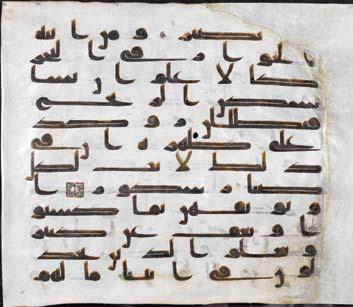

the practice of calligraphy—which means “beautiful writing”—is steeped in both artistic quality and spiritual meaning.
“Calligraphy has a central role in Islamic religion and aesthetics,” said Gordon Newby, professor of Middle Eastern and South Asian studies, as he led visitors through the exhibition at its August debut.
The objects and writings displayed in the galleries span several centuries
Walter Mirisch—the legendary Hollywood producer of more than a hundred films, including Oscar winners The Apartment, West Side Story, and In the Heat of the Night visited the campus in September, giving Emory students and film buffs a close-up view of studio-era moviemaking. Chair of the Department of Film Studies Matthew Bernstein, who consulted with Mirisch some years ago while working on a book on fellow producer Walter Wanger, had the chance to interview him again for an Emory audience. Mirisch is the author of the book I Thought We Were Making Movies, Not History.
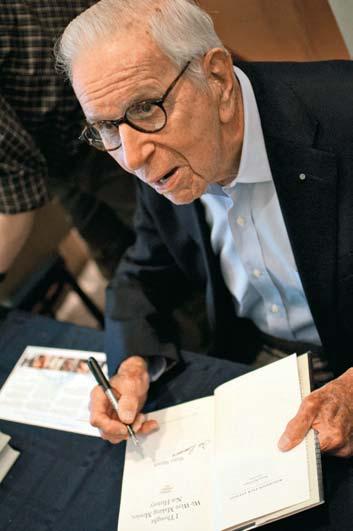
On producing: “They call the producer the man with the dream. A producer must be many things—idealist, pragmatist, diplomat, and disciplinarian. He must be both artist and businessman, but above all he must be a showman. He coordinates the work of many artists and craftsmen whose work must be harmonized and controlled if the final product is to match his original vision.”
On creativity: “To quote the Supreme Court justice, I can’t define creativity exactly, but I know it when I see it.”

On Marilyn Monroe: “She was very difficult. Although the end result was extraordinary. I believe that Some Like It Hot may be the best comedy ever made . . . so I forgive her.”
On favorite movies: “Anything Cary Grant
did, I was crazy about, and Irene Dunn. I loved musicals—Singing in the Rain and Forty-Second Street. I loved all kinds of films and I made all kinds of films. It varies the diet and helps you love what you do.”
On the most difficult actor he ever knew: “Peter Sellers. I made four movies with him, all with great problems. But I believed then and now that he
was one of the great comic talents of the twentieth century.”
On predicting the popularity of a movie: “I never was certain about anything. I believe that a great deal of this was, as we say, in your gut—and some of us have better educated guts than others.”
On success: “Somebody once told me that success or failure can be judged by the
made with very precious things”—such as jade, agate, ivory, ebony, silver, and gold.
question, ‘What’s it about?’ It has to be about something people care about. No matter what the screen, people are and always will be
interested in stories, in people’s relationships with one another. And when you do it honestly and effectively and right—that’s gangbusters.”—P.P.P.
and cross two continents. Traces of the Calligrapher: Islamic Calligraphy in Practice, c. 1600–1900 examines the tools used to create works of calligraphy from the seventeenth through the nineteenth centuries, featuring objects from Iran, Turkey, and India. The intricate reed pens, penknives, inkwells, shears, storage boxes, and writing tables are finely crafted works of art in themselves. “These are tools that are meant to be both practical and beautiful,” Newby explained. “They were often

Writing the Word of God: Calligraphy and the Qur’an presents some twenty folios of Qur’ans from Spain and North Africa to greater Iran, dating as far back as the seventh century. Several of the passages are rendered in a design that is both text and picture, so that the message is not immediately apparent but “must be discovered, opening up like a flower in the viewer’s understanding,” Newby said. Muslims are technically required to memorize the Qur’an and most have examples of such calligraphy on their walls.
“For Muslims, the writing of God’s words, the Qur’an, is an act of worship in which devotion and beauty join in praise of God,” Newby says. “In many biographies of Muslims, the number of Qur’an copies they made or had made are listed among their life’s accomplishments.”—P.P.P.
The Islamic calligraphy exhibitions are on view through December 5. To learn more, please visit www.carlos.emory.edu.
Emory Magazine now offers an iPad app, available free in the App Store. All our great content and more (Bonus stories! Video! Podcasts!) can be experienced just about anywhere on Apple’s newest shiny screen.










Also, check out the new Emory Mobile app, ready to go on your iPhone or iPod Touch. Don’t worry, the Blackberry version is coming soon. Visit m.emory.edu on any mobile device.


















China’s Ministry of Health has announced that it will ban smoking at medical institutions nationwide by 2011—a huge step for a country where it is estimated that nearly half of doctors smoke.
Smoking has become part of the social fabric in China, in much the same way that the nicotine habit was embraced by Americans in the 1950s and 1960s. About 53 percent of Chinese men smoke. While few women smoke, there are signs that the habit is catching on among younger, urban women.
“China is a particularly important place to prevent and control smoking because it has more than three hundred million smokers and the world’s largest tobacco industry,” says Emory’s Global Health Institute Director Jeffrey Koplan. “Few smokers quit or attempt to quit, few people realize
the hazards of smoking, over 40 percent of health workers smoke, and many misconceptions persist about smoking.”
Antismoking efforts face an uphill battle in China, where two-thirds of people say they believe smoking does “little to no harm.” They praise its ability to do everything from reduce stress to keep away mosquitoes.
Emory’s Global Health Institute and the Tobacco Technical Assistance Consortium (TTAC), a national tobacco-control leader based in the Rollins School of Public Health, are collaborating with Chinese public health leaders on successful strategies to reduce smoking and protect the public from second-hand
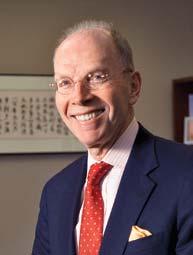
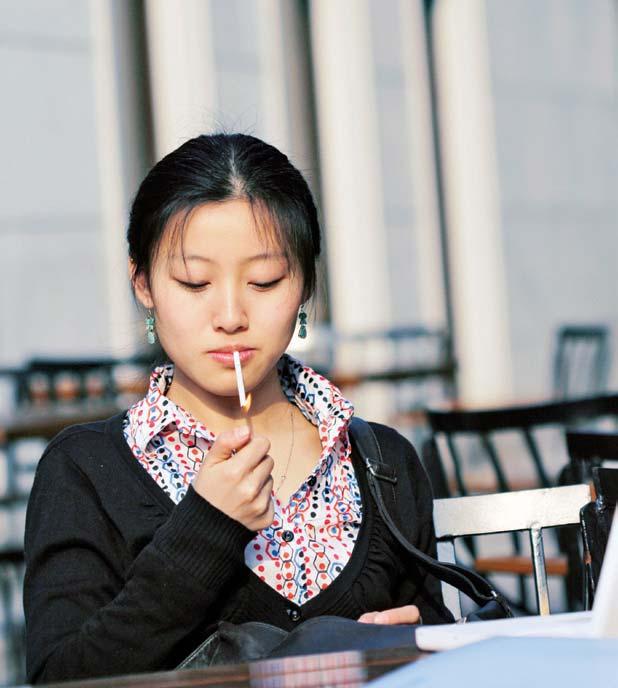
smoke. The Emory Global Health Institute–China Tobacco Partnership is funded by a five-year, fourteen-million dollar grant from the Bill and Melinda Gates Foundation.
“We’re involving people in the communities where they live, work, and play— in schools, hospitals, and work places, for example—in changing the social norm of tobacco use so that tobacco is less desirable, less acceptable, and less accessible,” says Pam Redmon 03MPH, the partnership’s executive director.
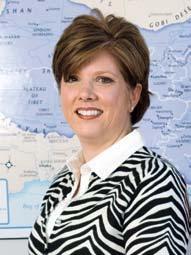
Since the partnership was funded in 2008, Koplan, Redmon, and Michael Erikson, a noted expert in national and global tobacco control efforts and director of the Institute of Public Health at Georgia State University, have met with public health officials in China regularly and maintain daily communication. Discussions involve considering likely sites for control programs, the strategies that will work best, and methods for collecting data and evaluating outcomes.
The Global Health Institute–China Tobacco Control Partnership is funding programs in a dozen cities and five universities in China to develop tobacco control initiatives, which range from public health marketing campaigns to local ordinances.
One proven method that seems to work across cultures,
says Koplan, is encouraging parents to protect their children by not smoking at home or when their youngsters are in the car. The next step would be to alter the social norm: discourage or ban smoking in schools, parks, restaurants, or other public places.
Equally important are formal interventions and policies. Hong Kong’s successful twentyyear program of tobacco control can serve as a best-practices example for China and other nations, says Koplan.
Hong Kong began its efforts in 1982 with a health ordinance that included legislative amendments (regulation of indoor smoking, warnings on cigarette packs, bans on tobacco advertising). Hong Kong also increased its tobacco tax, smoking education in schools, mass-media campaigns, community events, and leadership from the medical community. Smoking prevalence fell from 23 percent to 12 percent in 2008.
China’s National Tobacco Corporation is the largest tobacco producer and finished cigarette maker in the world, earning billions in tobacco profits and tax revenues. Only about 10 percent of China’s cigarettes are imported.
Nearly two-thirds of the world’s smokers live in ten countries, with China having the highest tobacco use by far, according to the World Health Organization.
“Tobacco is the largest cause of preventable deaths globally, and China has the most smokers in the world,” Koplan says. “There is a huge opportunity in this project to have a major impact on global health.”—Mary Loftus and Robin Tricoles
If you chose option C, then chances are you are not really engaged in politics or social issues at all. At least, that’s one of the theories put forth by political scientist Alan Abramowitz in his recent book, The Disappearing Center: Engaged Citizens, Polarization, and American Democracy. Abramowitz suggests that the increasing political polarization in America is not so much due to a divide between left and right, but between those who care and those who don’t.
“Political engagement is a continuous variable rather than a simple dichotomy,” Abramowitz writes. “Partisan-ideological polarization is greatest among those individuals whose beliefs and behavior most closely reflect the ideals of responsible democratic citizenship—that is, the engaged public.”
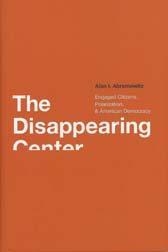
And the engaged public, he says, is the group that elected officials are
most concerned about— so if politically active people are more extreme, the tenor of politics will be more extreme, too.
One of the negative consequences of this trend is raised voices and angry talk. “Heated rhetoric is a problem,” Abramowitz says. “It tends to produce very emotional reactions on the part of people watching. It’s not just that they disagree, but that they feel the opposition is immoral, and they question not just their judgment but even whether they are people of goodwill. We don’t need to be questioning the other side’s legitimacy or morality. We can disagree without taking it to that level.”—P.P.P.
To listen to an Emory Report podcast of Abramowitz discussing his book, visit www.emory.edu/magazine.
Social nuances are challenging for Andrew Grimes. Diagnosed with autism at age three, the twenty-six-year-old supply technician has struggled to form lasting friendships, preferring solitary hobbies such as drawing and solving puzzles.
“The fact is that children with autism grow up to be adults with autism. It really is a lifelong disorder,” says Associate Professor of Human Genetics Joseph Cubells. “Sadly, many end up very lonely.”

But through the Emory Autism Resource Center’s Get a Life program, Grimes hangs out with a college student volunteer, practicing the finer points of male bonding. Paired with volunteers by age and interests, adults with Asperger’s or autism go on weekly outings to play sports, watch movies, help out at other community organizations, or just talk.
The staff recruits volunteers—including many Emory students—who spend at least two hours a week with the participant. The program is in need of volunteers older than twenty-five, as well, to spend time with similar-aged clients, according to Toni Thomas, program manager for Family and Adult Services.
In addition, the center’s Adult Community Assistance Program provides ongoing services to about forty adults with autism, including individualized services, social skills workshops, and monthly social gatherings hosted by Emory’s chapter of Best Buddies International, which pairs students with people with developmental disabilities.
When doctors decide that a patient needs both MRI and PET scans, they often schedule one a few weeks after the other.
Each technology provides essential information. Magnetic resonance imaging (MRI) shows details about the soft tissues of the body, such as every curve and indentation in the brain, while positron emission tomography (PET) records processes, including the amount of energy being used or blood flowing into a region.
The ideal would be a simultaneous scan that can provide both types of imaging. Four prototype MRI-PET hybrid scanners exist in the world, and one is at the Emory Center for Systems Imaging in the Wesley Woods Health Center.
“The combined system can provide opportunities for basic research and can open a new window to studying diseases such as Alzheimer’s, Parkinson’s, drug addiction, cancer, and cardiovascular disease,” says Assistant Professor of Radiology Baowei Fei, a Georgia Cancer Coalition Distinguished Scholar.
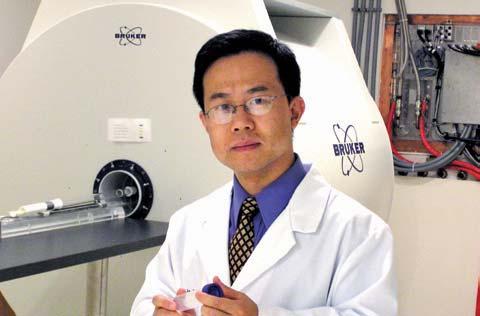
Fei is working to develop and improve imaging software for the hybrid system.
“Once validated, each of these tools will help us make a better determination as to what is the disease and what is not, and if there have been even small changes over time,” Fei says. “This can have a big impact on patient care.”
In June, at the fifty-seventh Annual Meeting of the Society of Nuclear Medicine in Salt Lake City, Fei received the Young Investigator Award for his research. He also received a $100,000 Coulter Translational Research Award for the continuation of his work.—M.J.L.
in , as a second civil war engulfed southern sudan, david thon mph fled his rural village in search of a safe haven, eventually emigrating to the united states in . last year, on behalf of the carter center, he returned home to help eradicate an ancient scourge, ‘waging peace’ one patient at a time.
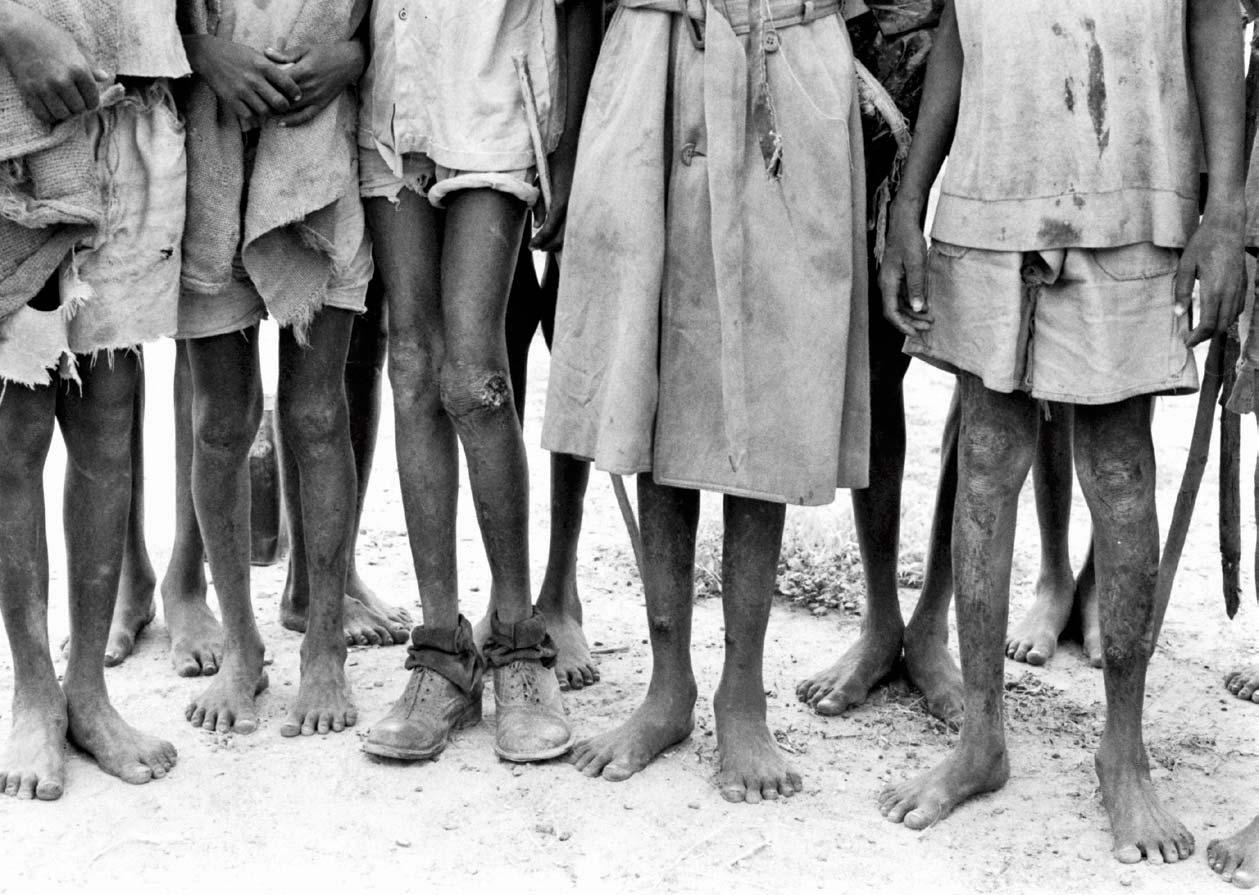 by patrick adams mph
by patrick adams mph
On an overcast day last April, deep in the Sudanese bush, an eight-year-old boy named Anyak gathered up his flowing blue tunic and climbed into the back of a mud-splattered Carter Center Jeep. The Jeep was bound for a Guinea worm case containment center, but it was Anyak’s first ride in a motor vehicle, and he could hardly contain his excitement. As the engine rumbled and the wheels turned, a grin spread across his face, and he watched through the window as the world passed by faster than it ever had before.
Riding with Anyak were David Thon 08MPH, a Sudanese technical adviser with The Carter Center’s Guinea Worm Eradication Program, and New York Times op-ed columnist Nicholas Kristof, who had come to report on the country’s impressive progress—a 99.7 percent reduction in disease incidence since 1995, when The Carter Center, in collaboration with the Sudan Guinea Worm Eradication Program (SGWEP), expanded activities across the country.
“When the worm is alive, it’s very hard to pull,” Thon explained to Kristof as he coaxed a thin white worm through a punctured blister on Anyak’s thigh. Careful not to break the worm—doing so can cause it to retract into the body and die, resulting in severe, potentially crippling, inflammation—Thon tugged at it slowly, spooling it around a piece of gauze, while Anyak looked away, grimacing in pain.
The same scene has played out millions of times during the past twenty-four years in countries throughout Africa and Asia. When former U.S. President, Nobel Laureate, and University Distinguished Professor Jimmy Carter first spearheaded the global Guinea worm eradication campaign in 1986, there were twenty endemic countries and an estimated 3.5 million cases a year. An additional 120 million people were considered at risk of infection due to a lack of safe water. Guinea worm disease, also known as dracunculiasis, is acquired by drinking water contaminated with the parasite dracunculiasis medinensis.
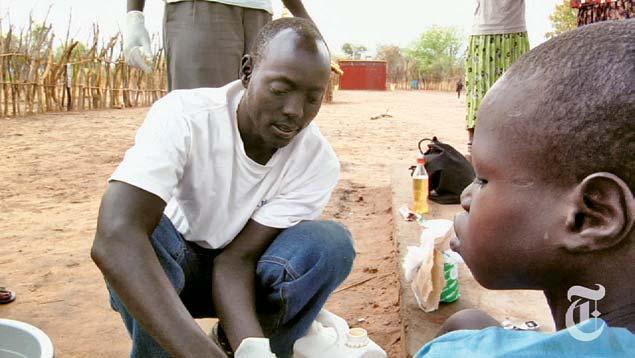
Last year, fewer than 3,200 Guinea worm cases were reported in the four remaining endemic countries: Ghana, Mali, Ethiopia, and Sudan—an astounding achievement for a public health program with no drug or vaccine at its disposal; none exists for this neglected tropical disease, exclusive, as it is, to the world’s poorest populations. Moreover, at this pace, Guinea worm is likely to be wiped off the face of the planet in the next couple of years, becoming only the second disease in human history (after smallpox) to be eradicated.
Still, of those final four, Sudan, which accounts for roughly four-fifths of the global burden, poses a
formidable challenge. The country is Africa’s largest by area—as big as the United States east of the Mississippi River—and one of its least developed, with few roads or other types of infrastructure. And although Sudan’s decades-long civil war was declared over in 2005, the potential for renewed conflict looms large; in January, the South will hold a referendum on whether it will remain a part of Sudan or secede to form its own country.
David Thon was no older than Anyak when the Second Sudanese Civil War reached Jonglei district. This chapter of Africa’s longest and bloodiest conflict officially began in 1983, when then-president Jafaar al-Nimeiri imposed a severe version of Sharia law on the entire country—alienating the predominantly non-Muslim South, including Christian Dinka like Thon.
It wasn’t until 1987, though, that government soldiers first arrived in Thon’s village, a small settlement to the eastern side of the Nile, not far from the city of Bor. “I still remember quite vividly the time they came and found my family inside our cattle barn,” recalls Thon, now thirty. “They surrounded it, demanding that we all come out one by one, and they all had guns. I was terrified.”
That time, no one was harmed, he says. But the next was different, and sensing the danger, Thon’s family fled with others to the safety of the jungle. “My father decided that it wasn’t safe for us to return to the village,” he says. “And at that time, many people decided to leave and look for another place to live.”
Days later, Thon left as well, joining an estimated seventeen thousand other children on an almost unfathomable odyssey. “There were lots of other boys in the village,” he says. “And everyone was saying, ‘Okay, since we cannot stay here, we must find somewhere else.’ My parents told me I had to stay with the others. But I didn’t want to go. I didn’t know where they were going, you know. I was seven years old.”
Top, Thon cleans the sore around an emerging Guinea worm; above, worm larvae under a microscope. Magni fi ed here by 125, these organisms can grow up to three feet long inside the human body, becoming painfully visible when they emerge.

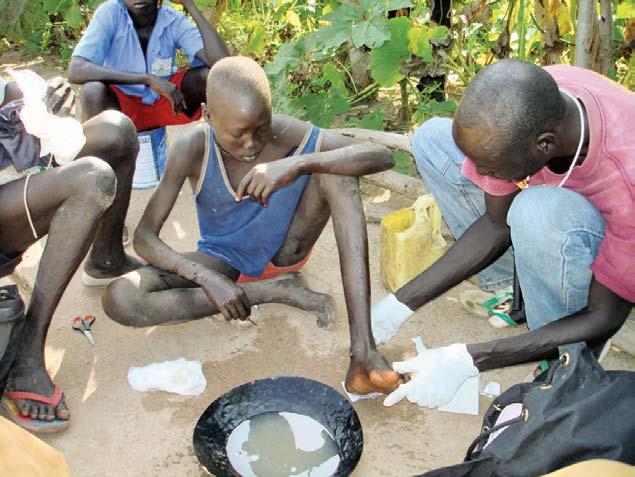
Traveling on foot, the children covered close to a thousand miles, moving from their villages in the South to temporary shelter in Ethiopia, back to southern Sudan, and finally to a refugee camp in Kenya. Along the way, they endured the chaos and carnage of war, surviving on leaves and berries and whatever water they could find.
“We used to walk during the night mostly,” remembers Thon. “And we could hear the hyenas and lions around us. I never saw one, but I know they were there.” By day, he says, it was humans they feared
forty-three. And when we were finally selected to go, I was so excited. It was September 25, 2001.”
The date is burned into Thon’s memory: the first day of a new life. But that life would come with its own set of challenges. Just weeks after the worst terrorist attack on American soil, Thon landed in Charlotte, North Carolina, a war-weary refugee in a strange land with only a halting command of the English language. His parents and sisters were safe now—he knew that. But they were also far, far away.
After attending high school in Charlotte with the help of a host family, Thon was awarded a Bonner Scholarship to attend Mars Hill College, a small liberal arts school in western North Carolina. “One requirement of the Bonner was that I do community service,” he says. “And at first I didn’t know what that was. But I did my first project—tutoring kids in the local elementary school—and then I did another and another. And those experiences really shaped my understanding of America.”
They also took Thon all over it: from Coretta, West Virginia, where he did outreach in one of the nation’s most economically depressed communities; to Anchorage, Alaska, where he volunteered with Habitat for Humanity; to Comer, Georgia, where he helped to resettle other Sudanese refugees; and finally to Pass Christian, Mississippi, where he assisted relief efforts in the aftermath of Hurricane Katrina.
most—the government forces hunting their prey in Russianmade helicopters. “If they saw us, they would bomb us.”
Aid workers dubbed them the lost boys of Sudan, a reference to Peter Pan’s posse of orphans, who covered a similarly perilous terrain. Yet unlike in Neverland, time in the horn of Africa didn’t stand still. Five years passed before they reached the Kakuma refugee camp in Kenya.
By then—late 1992—their numbers had been reduced by nearly half, many having succumbed to starvation and disease. Some were kidnapped by marauding bandits and sold as slaves. Others drowned or were eaten by crocodiles when soldiers forced them to cross a deep river.
In Kakuma, Thon waited and wondered—if his parents and four sisters were still alive; if America was truly the land of opportunity that he had heard it was; and if his name would ever appear on the list of refugees selected for resettlement in the United States. “I was in one of the last groups,” he says. “Number
That passion for serving the poor and marginalized grew out of empathy, Thon told a Mars Hill audience in his acceptance speech for the G. McLeod Bryan Student Caring Award. “I suffered numerous years of hunger, disease, homelessness, and homesickness. I felt neglected and rejected by my fellow humans. I hated life and the world for the first time. But you all know that war is not the only evil against humankind.
“In my understanding, peace is not only when we do not have wars,” he added, “but also when we do not have institutionalized discrimination, poverty, homelessness, and exploitation. . . . There is so much to be done to make this world a better place.”
In 2006, Thon enrolled in Emory’s Rollins School of Public Health, choosing to focus on behavioral sciences and health education (BSHE). The school’s most interdisciplinary department, BSHE allowed him the flexibility to explore a range of issues while concentrating on one in particular: “I became very interested in the health education part of BSHE, because I already knew how important it is in south Sudan.”
Indeed, before he’d taken his first class, Thon knew more than most about the public health problems affecting Africa’s poor. He didn’t need a professor to tell him that too many mothers die in childbirth or that Guinea worm is associated with a lack of clean water. But Rollins did open Thon’s eyes to the ways these problems might be solved. “I had always
Jimmy carter is planning a send-off for the last Guinea worm on earth

Founded in 1982 by former U.S. President Jimmy Carter and his wife, Rosalynn Carter, The Carter Center, in partnership with Emory, has worked to advance human rights and alleviate human suffering in more than seventy countries. One of the center’s core activities, the Guinea Worm Eradication Program, is nearing the finish line, with only four countries still reporting cases. President Carter spoke with Emory Magazine about the program’s impressive achievements and the lessons learned along the way.
The Guinea Worm Eradication Program has made tremendous progress during the past twentyfive years—particularly in Nigeria, once home to the highest number of cases, and in Sudan, which has reduced disease incidence by 99.7 percent since activities were expanded there in 1995. As you reflect on that progress, what have been the program’s biggest challenges?
The first one was just to address this issue at all because no one else wanted to touch it. The second thing is that it’s a disease that quite often is not known in the urban areas, where the political focus remains and the power exists. For instance, when I went to Pakistan first, neither the president of the country nor his minister of health even knew about Guinea worm. Fortunately, the prime minister of Pakistan at that time had come from a village that had Guinea
worm, so that made it possible for Pakistan to be the first nation to eliminate Guinea worm completely.
Third, it depends on the complete ending of the cycle [of transmission] for an entire twelve months. When somebody is infected with Guinea worm, there’s no way for them or any others to know they’re infected until the worm becomes mature, and that can take almost a year.
The fourth problem is that quite often, the people who use the water hole are migrants; they don’t live there, they just travel from one place to the other during the farming season or take care of their cattle or sheep or goats. And the fifth problem is that any outbreak of violence, as [took place] in Mali and parts of northeast Ghana and certainly in southern Sudan, makes it impossible for our workers to go in there to take care of the problems.
Critics of so-called “vertical programs” that target a single disease point to their inability to address the context of poverty or a lack of access to primary care. But the Guinea Worm Eradication Program has helped move countries closer to achieving a number of the United Nations Millennium Development Goals—including universal primary education, gender equality, and improved access to safe drinking water. What we’ve done is use Guinea worm as a foundation to take on other things, including economic development,
wanted to be a doctor,” he says. “But then I realized how big a role public health can play there, and I wanted to be a part of that.”
Soon after graduating, Thon applied for a position with The Carter Center’s Guinea Worm Eradication Program and, weeks later, was brought on board as a technical adviser.
“One of our biggest challenges has been the dearth of trained Sudanese public health workers,” says Ernesto Ruiz-Tiben, director of the Guinea worm program since 1998 and a twenty-seven-year veteran of the U.S. Public Health Service at the Centers for Disease
other health issues, and sometimes political problems that exist in the same villages. Guinea worm has served as an entrée for us to go in, and once the people see that because of our help and their own work they can actually make an accomplishment, then they get interested in working on these other things.
Last February, you visited a Guinea worm-endemic village in southern Sudan. Can you talk about that experience?
Well, at that time they were treating people who still had Guinea worm emerging from their bodies, and I think that particular village might be the last place that we’ll see Guinea worm on earth.
I wanted to let them know that not only a former president but that the world is interested in what occurs in their particular village and that they might very well be the ones who will be honored with recognition when and if their last case of Guinea worm is treated.
At the very start of our program, I went to all the endemic countries, met with the president or the king or the prime minister, and formed a contract with them about what The Carter Center was going to do and what we expected them
to do, and it was because of those early contracts that we’ve had such good cooperation.
Does the Guinea Worm Eradication Program have lessons for other eradication efforts?
It has not only lessons but also encouragement for other eradication efforts. I think in addition to the officials in Washington and Geneva, it shows the individual ministers of health in all of the countries involved, as well as the governors and local village leaders, that we can actually do something to correct a serious problem by our own acquisition of knowledge and our own adherence to the rules. Guinea worm is an ancient disease that has afflicted people for ages. And I would say the most important thing is the beneficial effect for human beings who will never have to suffer from it again.
Control and Prevention. “So we were eager to have David join the program.
“The fact that he remained focused on getting an education, and that he chose public health as his field—it’s striking,” Ruiz-Tiben adds. “David is an easygoing person with a large, humanitarian view of life. And with his knowledge of Dinka language and culture, his learning curve was much shorter than an expat’s. He’s contributed a great deal to the program.”
In 1995, Sudan was the only country not fully accessible to the Guinea Worm Eradication
Thon explains Guinea worm transmission to villagers, top; above, children with the fi lters that keep them from drinking the worm larvae and contracting the disease.
Program. Though President Carter had been involved in peace efforts there throughout the previous decade, the fighting raged on, rendering some two thousand endemic villages inaccessible to health workers. Without peace, eradication would never be possible— and with the death toll surging past two million, there was little hope that it would come anytime soon.
So Carter did what it took a former president to do. Along with his wife, former First Lady Rosalynn Carter, he met with the leaders of the opposing sides—Sudanese president Omar al-Bashir and the late leader of the Sudan People’s Liberation Army, John Garang—to try to broker a temporary ceasefire.
“I used the mutual concern about Guinea worm in the North and South to get them to cooperate with each other,” Carter explained in a recent phone interview. “It was one of the most difficult negotiations that my wife and I have ever encountered.”
After much wrangling, al-Bashir and Garang did finally agree. And the Guinea worm ceasefire, as it came to be known, was a turning point not only for the eradication effort but for the conflict itself.
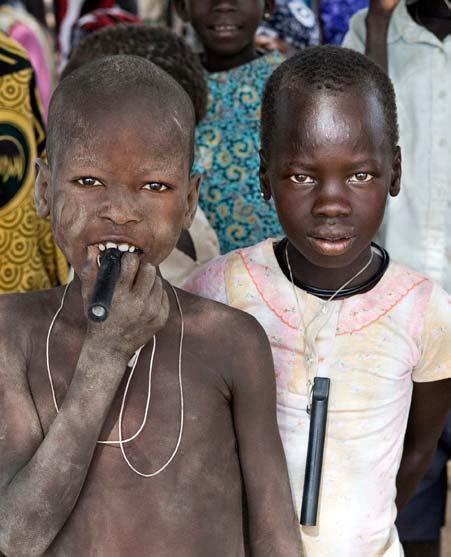
According to Carter, in addition to opening up southern Sudan to program activities, the ceasefire afforded the North and South their first opportunity to agree on a political matter since the revolution began.
“We have never withdrawn from Sudan since that time,” he says. “And, of course, we cooperate on a daily basis with the political leaders. So this gave us a chance to plant, you might say, a permanent flag of involvement even in the most remote areas of the country.”
Still, Carter is quick to point out that nowhere, least of all Sudan, could the program achieve what it has without its networks of thousands of volunteer health workers. “No one is working harder to eradicate Guinea worm disease than the Sudanese themselves,” he told CNN earlier this year, describing the country’s 13,500 volunteer health workers as “foot soldiers under the very capable direction of the Southern Sudan Ministry of Health.”
“We don’t put The Carter Center’s name on things,” he says. “We just call it Global 2000. So the leaders in every country and in every village can say, ‘My Global 2000 program has eliminated Guinea worm.’ ”
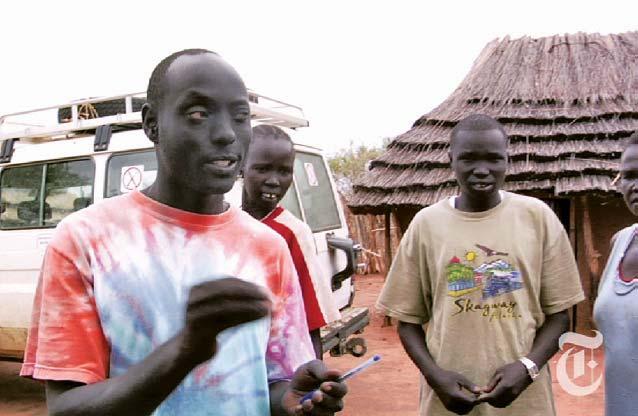
“The goal is to interrupt transmission,” says RuizTiben. “That means zero cases. And the only way to get there is to maintain a very intense focus on surveillance—to have a team of people on the ground in each and every village where we know there’s a history of disease in order to detect new cases and prevent patients from entering a water source.” (Volunteers also supply their villages with cloth water filters and teach people how to filter water before drinking it.)
If that formula sounds simple, consider its scale: “We had, at one time, 23,735 villages that were known to be endemic worldwide,” he says. “To have local staff working in all of them with an attention to detail such that you and I would have trouble keeping up is an enormous challenge. It’s also a great challenge for our expatriate staff, who support the volunteers while enduring extremely harsh conditions themselves.”
As a technical adviser in southern Sudan, Thon’s responsibilities were heavy. “I was in charge of 358 village volunteers, thirty-eight supervisors, and seven field officers,” he says proudly. “I also ran a Guinea worm clinic with a manager and a nurse.”
Sitting in that clinic last April, Thon told Kristof his story—how he had grown up in a small rural village with his parents and four sisters; how he had survived the long journey to safety in Kenya; how he had gone to college, even graduate school, in the United States; and how, after twenty-five years, he had come back to Sudan to help eradicate disease and alleviate suffering.
“I owe something to other people,” he said. “Because of all the help, all the opportunities that I was able to get in America—that’s why I am who I am right now.”
DISCOVERING NEW ANTIRETROVIRALS. ANALYZING IMMUNE RESPONSE. TARGETING SIMIAN VERSIONS OF THE VIRUS. DEVELOPING VACCINES. ENLISTING VOLUNTEERS FOR CLINICAL TRIALS. EXAMINING TRANSMISSION
IN ZAMBIA. CARING FOR VETERANS WITH THE VIRUS. SURVEYING WOMEN
TO LEARN HOW GENDER AND STIGMA AFFECT VULNERABILITY TO SEXUALLY TRANSMITTED DISEASES. HIRING A DEAN WHO LED THE CENTERS FOR DISEASE CONTROL’S FIRST TASK FORCE ON THE VIRUS—EVEN BEFORE IT WAS CALLED ACQUIRED IMMUNE DEFICIENCY SYNDROME (AIDS).
Emory can claim its share of victories in the world’s war against AIDS, which has taken 25 million lives since 1981. Likely leaping from monkey to man, then traveling from human to human through our most intimate connections—in blood, semen, breast milk—the retrovirus has been in an exponential race for its own survival, outmaneuvering our attempts to contain it and teaming up with a host of opportunistic infections eager to ravage an already compromised immune system. The AIDS pandemic has devastated countries and communities, taken the poorest of the world and made them poorer, and created millions of individual stories of illness and loss.
The statistics boggle the mind: More than 33 million people worldwide are living with the virus, as many women as men.
Despite effective antiretroviral treatment, more than two million die from AIDS each year—three hundred thousand of them children. AIDS has created 14 million orphans in Africa. Here in the United States, nearly six hundred thousand people have died from AIDS, and more than one million are living with the virus (with one in five of these unaware of their infection). In the greater-Atlanta area, more than twenty-six thousand people have been diagnosed with HIV/AIDS. And we have not yet seen the dip in the bell curve; about 2.7 million more people will develop AIDS this year alone.
To paraphrase the late Jonathan Mann, former head of the World Health Organization’s global AIDS program: This plague has given our generation a historic responsibility that demands a global response.
By Mary j. LoftusThe Emory Center for AIDS Research (CFAR) is one of twenty such National Institutes of Health (NIH) programs throughout the United States. Emory’s CFAR encompasses 260 University-affiliated researchers, and its programs emphasize the importance of interdisciplinary collaboration (especially between basic scientists and clinical investigators), translational research from lab to clinic, inclusion of minorities, and strategies for prevention and behavioral change. Annually, Emory receives more than $50 million in HIV/AIDS-related research funding.
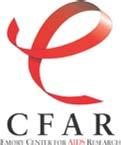
More than 90 percent of people in the U.S., and many around the world, who are on medication for HIV/AIDS take antiretroviral drugs developed at Emory. In the early 1990s, Professor of Pediatrics Raymond Schinazi, Professor of Chemistry Dennis Liotta, and researcher Woo-Baeg Choi codeveloped the molecules 3TC and FTC, which help to prevent or delay HIV from replicating and infecting other cells. “Everyone was intrigued, but skeptical about our work—no one realized the importance of what we had found,” Schinazi says. The scientists pushed for grants that would allow them to continue their research. Soon, FTC, or Emtriva (the “Em” stands for Emory) and 3TC (Epivir, which also treats the Hep B virus) were recommended by the World Health Organization as part of a first-line drug treatment regimen. Ultimately the discovery would lead to a $540 million deal for the researchers and the University—one of the largest royalty sales in the history of higher education. Atripla, a combination of Emtriva and two other previously approved drugs, now enables many patients to take just one pill a day, down from ten to fifteen pills a decade ago. “It’s like having an H-bomb for HIV. You blow it to smithereens with one simple pill—the virus doesn’t know how to escape,” Schinazi says. Schinazi and Liotta continue to work at Emory in AIDS research and have founded several companies and research institutes in Atlanta and abroad. Liotta started the Republic of South Africa Drug Discovery Training Program to give African scientists the tools to combat infectious diseases in their own countries. “The transfer of money and technology isn’t enough,” Liotta says. “Expertise in the discovery and development of new medicines is the intrinsic requirement.”



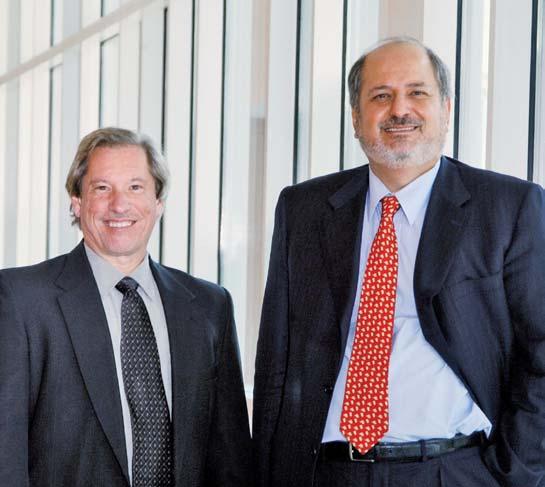
One of the largest academic vaccine centers in the world, the Emory Vaccine Center at Yerkes is housed in a three-story, seventy-five-thousand-square-foot building that includes the Yerkes Division of Microbiology and Immunology. In the center’s twentysix research laboratories, scientists are working to develop vaccines for HIV, malaria, and other emerging infectious diseases. The NIH recently awarded a five-year, $15.5 million grant to researchers at the center to study human immune responses to vaccinations, which will guide the design of vaccines. The center is directed by Professor of Microbiology and Immunology Rafi Ahmed, a Georgia Research Alliance Scholar, who believes that understanding the intricacies of long-term immune memory is key. “The world still desperately needs effective AIDS vaccines, and the Emory Vaccine Center is at the forefront of development,” Ahmed says.
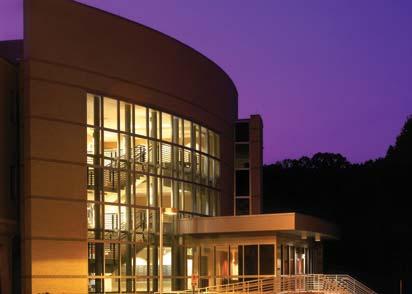
“I’m using some of my proceeds to reinvest in research. I’m not going to just go fly-fishing for the rest of my life.” —Raymond SchinaziDennis Liotta and Raymond Schinazi The Emory Vaccine Center
Advancing technologies and the effectiveness of antiretroviral therapy are allowing people with HIV to live longer, richer lives. “The average lifespan, once someone is diagnosed and on treatment, is about twenty years, with recent estimates extending to thirty years,” says Jeffrey Lennox, Vice Chair of Medicine for Grady Affairs. “For someone diagnosed at age thirty, that means they will live until sixty with HIV.” Emory doctors care for more than seven thousand HIV/ AIDS patients—the largest university cohort in the country—through three Emory-related sites. Grady Health System’s Ponce de Leon Center, directed and staffed by Emory infectious disease specialists, serves about five thousand patients, and another several thousand people with HIV or AIDS are treated at Emory University Hospital Midtown and the Atlanta Veterans Affairs Medical Center, a primary teaching hospital of Emory’s medical school. Each site is also conducting research and clinical trials related to HIV/AIDS. Lennox is now conducting a National Institutes of Health study of 1,800 patients, comparing several different regimens recommended as first-line treatments to determine their relative advantages. “Emory is poised to do some really important work, but it’s more than any one university can do,” Lennox says. “We’ve been trying to conquer HIV for thirty years now, and we still don’t have a complete understanding of why people’s immune systems fail. But we are getting much, much closer.”
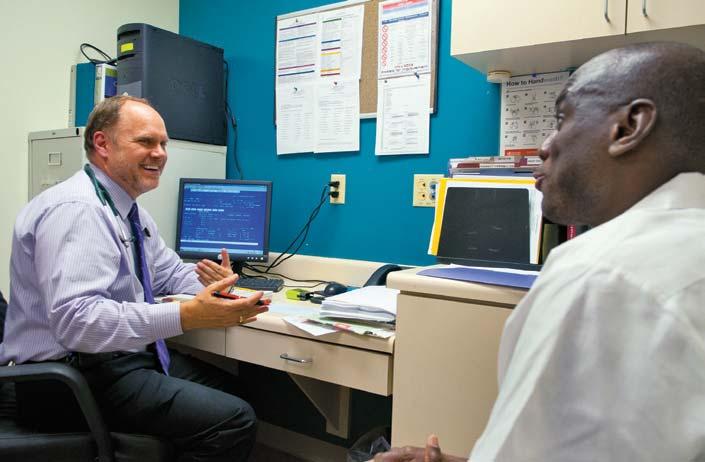
One of the leading AIDS vaccine candidates was discovered in microbiologist Harriet Robinson’s lab at the Emory Vaccine Center at Yerkes National Primate Research Center and developed at the biotech startup GeoVax. “The vaccine is proving safe and inducing good immune responses in humans,” says Robinson, now chief scientific officer at GeoVax Labs. The vaccine uses two doses of DNA that encode a harmless mimic of HIV (close enough that the immune system could “recognize” the virus if infected in the future) as well as two doses of a recombinant modified vaccinia virus. It has been highly effective in rhesus macaque monkeys and is currently in Phase II clinical trials, with human trials being conducted by the NIHsponsored HIV Vaccine Trials Network. Although Robinson left Emory in 2008 to develop the possible HIV vaccine with GeoVax, she continues her collaboration with Yerkes Research Associate Professor Rama Amara, using nonhuman primate models to study the ability of the vaccine to serve as a therapy for already established infections and work on new vaccines for both prevention and therapy. “The next-generation preventative vaccines are showing very impressive results,” Amara says.
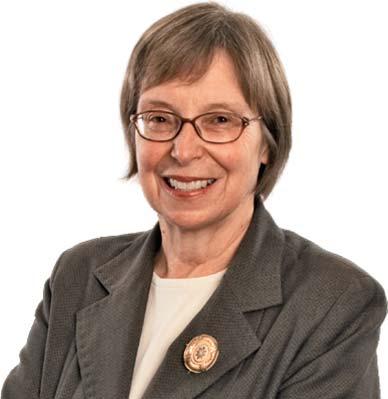
This fall, about a thousand scientists dedicated to finding an HIV/AIDS vaccine gathered in Atlanta for the tenth-annual AIDS Vaccine 2010 conference, cosponsored by Emory’s Center for AIDS Research (CFAR) and the Global HIV Vaccine Enterprise. This annual conference brings together everyone from immunologists to policymakers. “To move toward an effective AIDS vaccine . . . what we have to do is tap innovative young talent and bring young investigators into the field,” says conference chair Eric Hunter, a pathologist and codirector of Emory CFAR. Rollins School of Public Health Dean James Curran and chair of the Hubert Department of Global Health Carlos del Rio, also CFAR codirectors, were cochairs, along with AIDS vaccine researcher Harriet Robinson of GeoVax Labs.
<< Microbiologist Harriet Robinson
A recent partnership between the Emory Vaccine Center and the International Centre for Genetic Engineering and Biotechnology (ICGEB) in New Delhi, India, will address the development of a protective AIDS vaccine that targets the strain of HIV most prevalent in India and sub-Saharan Africa, known as subtype C. This will mark the first time such a vaccine has been researched in India specifically for the people of India. These efforts are desperately needed, as approximately 2.5 million people in India are currently living with HIV, a number that puts those not infected at high risk of contracting the virus.

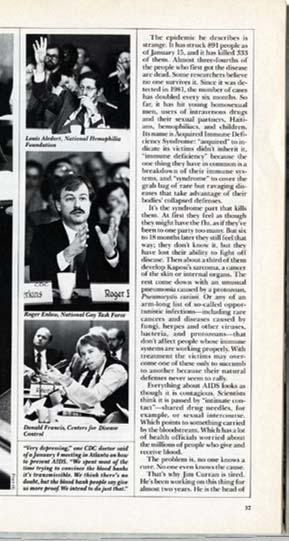
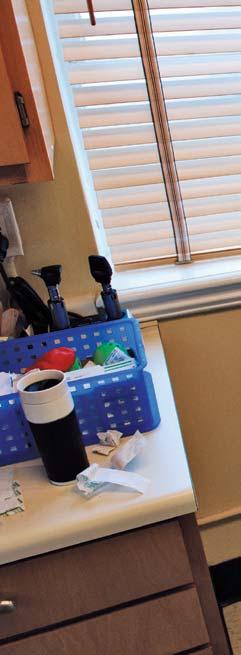

Sub-Saharan Africa has the highest prevalence of HIV infection worldwide, mostly due to heterosexual transmission. Professor of Pathology and Global Health Susan Allen and Professor of Pathology Eric Hunter, spouses as well as colleagues, study HIV transmission between married or cohabiting couples in Rwanda and Zambia. “The majority of new HIV infections are acquired from a spouse, and couples are the largest HIV risk group in Africa,” Allen says. Joint HIV testing, she says, reduces new infections in couples by half to two-thirds. Hunter’s laboratory investigates the molecular mechanisms underlying HIV transmission among these couples, with an aim toward developing novel vaccine approaches.
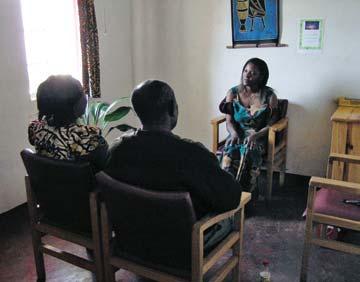
Before AIDS became a pandemic, it started as a mysterious syndrome—young gay men in San Francisco, Los Angeles, and New York City were experiencing fatal pneumonias, rare cancers, and other puzzling ailments. Rollins Dean Jim Curran was chief of the research branch of the division of Sexually Transmitted Diseases at the Centers for Disease Control in Atlanta at the time, and was named head of the task force assigned to investigate this new disease. Because the earliest cases appeared in gay men, as well as men and women who injected drugs, the CDC determined that it was most likely an infectious agent, probably a virus, that could be transmitted through blood and sexual contact. Curran remembers a Frontline interview when the first AIDS cases were reported in hemophiliacs, who require frequent blood products, and public panic grew: “Great concerns about the blood supply, great concerns about sexual transmission, great concerns about transmission through casual contact followed.” In 1982, the CDC began using the acronym AIDS to refer to the epidemic. The first International AIDS Conference was held in Atlanta in early 1985. Curran attained the rank of assistant surgeon general before leaving the CDC in 1995 to become a professor and dean of the Rollins School of Public Health. He’s also a principal investigator and codirector of Emory CFAR, continuing to research the insidious virus that he encountered some thirty years ago. “Three things—denial, discrimination, and scarcity—are the enemies of AIDS prevention, and they’re always going to be there,” Curran says. “They’re just there over and over and over.”

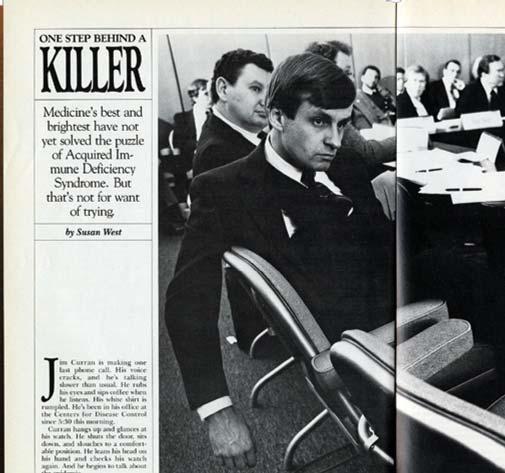
HIV-negative volunteers like Robert Parker, above, take part in AIDS vaccine trials at Emory’s Hope Clinic. “It’s a pretty big decision to make,” says Parker, whose partner is also a volunteer. “But if I’m not willing to do it, who will be?” For more on Parker’s story, go to www.emory.edu/magazine.
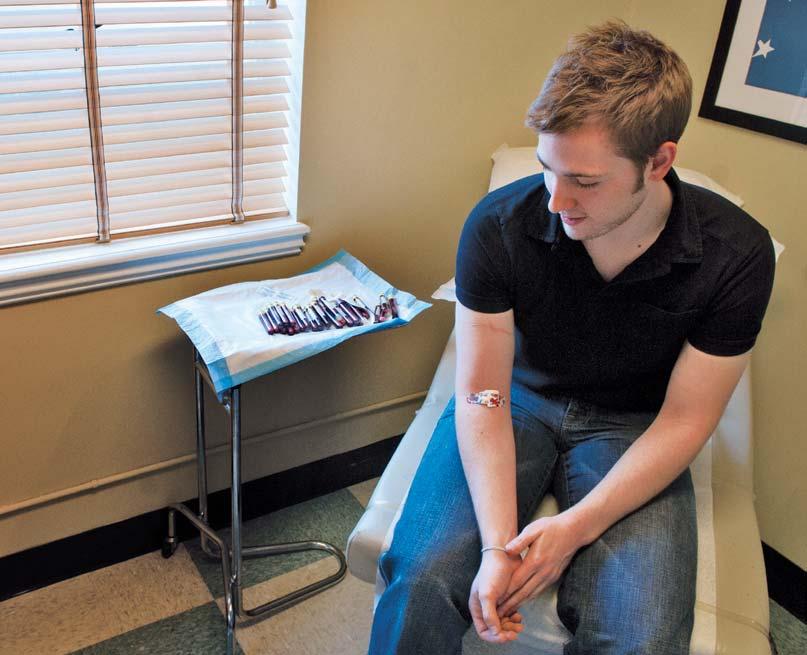
City dwellers living below the poverty line in America—a group that includes a disproportionate number of minorities—have much higher rates of HIV infection. Chair of Global Health at Rollins and codirector for Clinical Science and International Research in Emory’s CFAR, Carlos del Rio has long been an advocate for people who are HIV-positive, lobbying for them to have ready access to care in comprehensive clinical environments, which increases the likelihood that even the uninsured will take antiretroviral medications regularly. Del Rio, executive director of the National AIDS Council of Mexico from 1992 to 1996 and former chief of Emory Medical Service at Grady, has conducted research on access to HIV testing and care for underserved populations in Atlanta since 1998. One of his recent studies found that 60 percent of Atlanta’s HIV cases were in an area of the city with a large number of people living in poverty, black residents, men who have sex with men, and drug users.
As a child growing up in a conservative Massachusetts town, Robert Parker got the message that AIDS was a righteous punishment delivered by God to sinners. Now twenty-three, Parker decided to debunk that stigma by becoming one of hundreds of community members who are taking part in AIDS vaccine trials at Emory’s Hope Clinic in Decatur. “A true cure will be found only if people choose to participate,” Parker says. The Hope Clinic is the clinical arm of the Emory Vaccine Center, recruiting HIV-negative volunteers to test promising prevention vaccines in NIH-sponsored clinical trials. “The vaccine trials we are doing are absolutely critical,” says medical director Mark Mulligan. “We are conducting the only HIV vaccine efficacy trial in the world that is currently enrolling participants. Ultimately, to extinguish this pandemic, we need a prevention vaccine.”
“Can we decrease the HIV burden in the United States?” asks Hubert Professor Carlos del Rio.
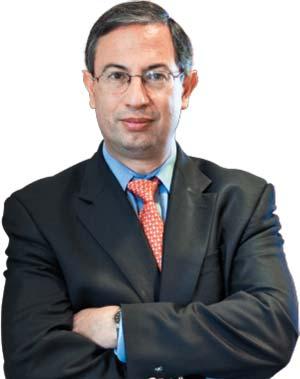
More than 1.1 million Americans are living with the AIDS virus— a large number of them poor.
“I would say, what can we do to decrease poverty?”
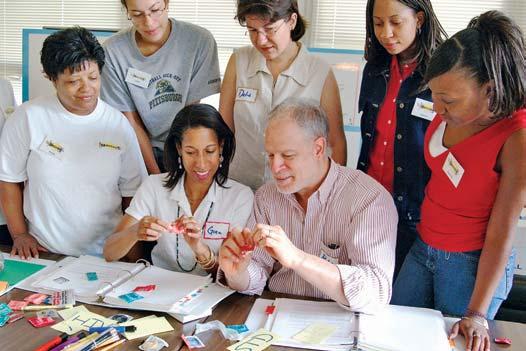
For the eighth year in a row, bicyclists in the Action Cycling Atlanta’s 200Mile Ride pedaled two hundred miles in two days to raise $188,660 for AIDS vaccine research at the Emory Vaccine Center. The AIDS Vaccine 200 in May attracted more than 130 cyclists. The annual ride now has raised more than $680,000 for AIDS vaccine research. This year’s riders traveled a scenic route from Emory to Eatonton, Georgia, in the Oconee National Forest and back to Emory along with a volunteer crew. Because of sponsorships, Action Cycling is able to donate 100 percent of proceeds.
Gina Wingood, codirector of CFAR’s Prevention Science core, surveyed a thousand black women and five hundred white women to find out how they confront issues that affect their sexual health—and, ultimately, their vulnerability to HIV/AIDS—as principal investigator of the five-year study, Social Health of African American and White Women’s Lives (SHAWL). “It’s likely that HIV transmission depends in important ways on gender, stigma, discrimination, or socioeconomic status,” says Wingood, shown seated at left. This is just one study in a vast body of applied research and HIV prevention programs produced by CFAR scientists— including Wingood’s spouse, Charles
Howard Candler Professor of Public Health Ralph DiClemente, above right, who investigates risk factors in adolescents such as exposure to sexual content on the Internet and in rap videos. Research Professor Kirk Elifson and Charles Howard Candler Professor of Public Health Claire Sterk, a founding member of CFAR, also have worked for two decades on community-based research involving HIV-vulnerable populations, such as sex workers and homeless persons, who often don’t access mainstream services.
”We are exploring how the place where people live—meaning the physical and social environment—impacts their lives over and beyond individual behaviors,” says Professor of Public Health Claire Sterk.
Cycling for a cause: The ride’s unrestricted funds fi ll gaps that can’t be met by grant dollars alone.

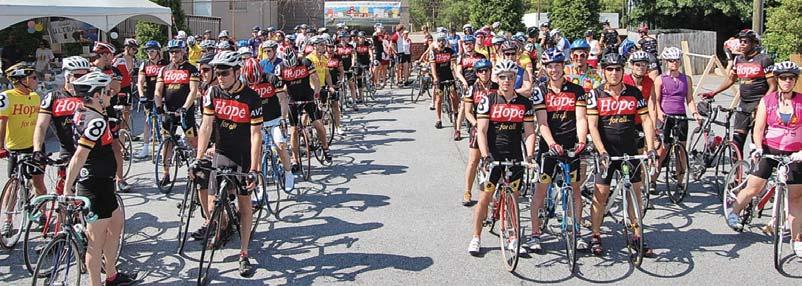
The majority of the HIV-infected population in the U.S. will likely be older than fifty by 2015. Researchers at Emory’s School of Medicine have shown in an animal model that the presence of HIV proteins, even without a replicating virus, leads to alterations in cells that break down bone.
Assistant Professor of Endocrinology M. Neale Weitzmann says this study can “help doctors decide the best way to stave off osteoporosis and bone fractures, which are becoming increasingly common in individuals living with HIV.”
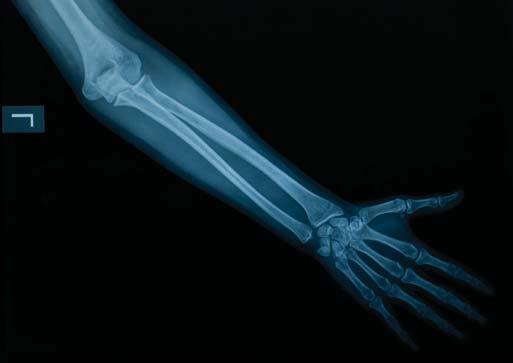

Studies performed at Emory’s Yerkes National Primate Research Center have been critical for testing the DNA/MVA vaccine, illustrating the value of the simian immunodeficiency (SIV) virus model in rhesus macaques. In addition, work by investigators such as leading HIV scientist Guido Silvestri, chief of the Division of Microbiology and Immunology at Yerkes, studying sooty mangabeys could reveal how some primates survive infection by SIV without having their immune systems crippled, as well as how HIV may have migrated from nonhuman primates to humans.
pled, as well as from to humans

How public health expert Courtenay Dusenbury mph and a loose alliance of feisty nuns, Bill and Melinda Gates, exhausted midwives, mosquito hunters, and Ministries of Health are conspiring to save lives in poor countries like Mozambique
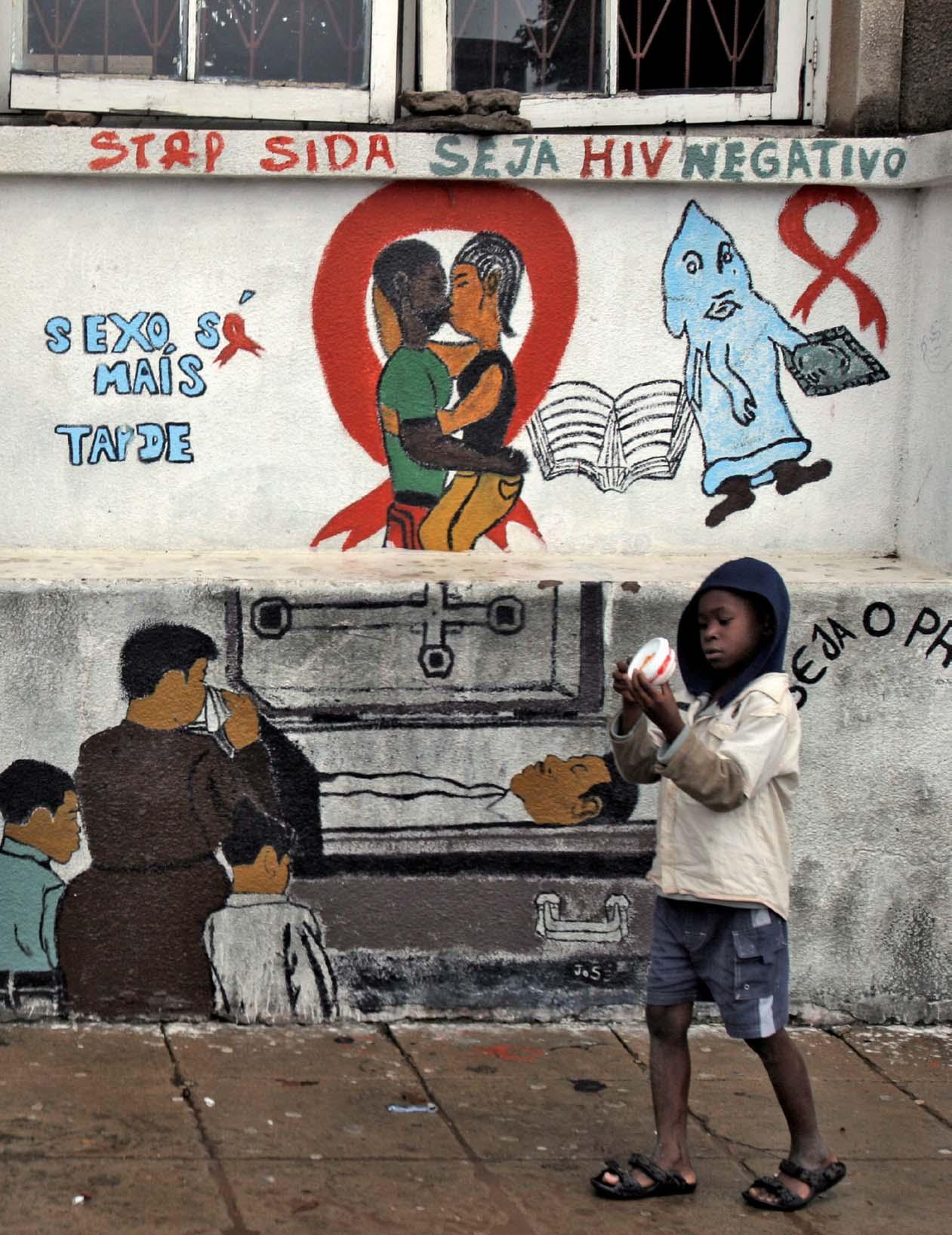 by mary j. loftus photo by michael barrientos
by mary j. loftus photo by michael barrientos
t the Hospital El Carmelo in southern Mozambique, Sister Maria Elisa Verdu, the hospital’s director, bustles down the open-air hallway. A physician as well as a monastic, Verdu wears a functional white dress instead of a full habit.
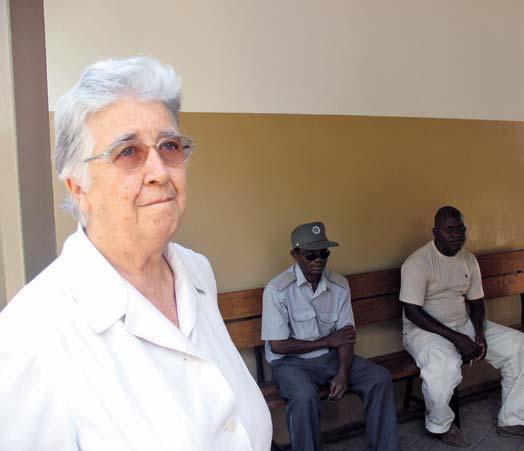
She passes families gathered under the sparse shade of an acacia tree in the courtyard, young women lying on wooden benches, men leaning against walls, grandmothers in brightly patterned dresses holding babies on their hips. Exam rooms are filled with patients waiting for blood to be drawn or medications to be given: the hospital’s staff averages two hundred consultations a day.
In the dormitory-style women’s ward, patients too ill to leave rest on rows of cots. Although several of the women and girls are awake, there is no casual chatter, only a weary silence. Through the open window, a gentle puff of warm afternoon air drifts through the room like a sigh.
The hospital—an airy structure with soaring arches, dark-wood doors, a red tile roof, and whitewashed walls in the mission style of its benefactor, the Catholic Church of Spain—was built to treat tuberculosis patients. The staff began treating AIDS as well after discovering in the late 1990s that one in three of its patients had the virus, says Verdu; that number is now four in five.
Unlike tuberculosis (TB), which can be cured with antibiotics, chronic conditions like AIDS require a more sophisticated level of coordination and follow-up care. “It has become routine for our patients to have both, and as AIDS increases, so does TB,” Verdu tells a visiting group of doctors, researchers, and public health experts as she leads them through the courtyard to the patient record room.
Speaking in rapid Portuguese, she explains to the group that the hospital keeps double records—paper and electronic files—for each of its thirteen thousand open cases. The staff maintains contact with nine thousand patients, four thousand of whom are on antiretroviral drugs. “It would be impossible to manage without computers,” Verdu says.
Or, one might imagine, without the hospital’s extremely devoted staff of nuns,
local health workers, and volunteers such as Marcela Cherner Kevorkian. “It was very important for me to come here to see another reality,” says Kevorkian, a medical student from Spain’s University of Valencia, one of the oldest universities in the world. “They do amazing work here with very limited resources.”
The charity hospital, which is supported by the church, private donations, and government funding, provides all services and medications at no charge to its patients. It also serves as a data collection and research site for Mozambique’s National Institute of Health.
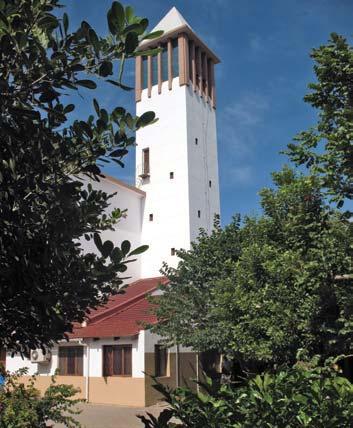
The small delegation touring El Carmelo this May afternoon includes Courtenay Dusenbury 08MPH, who is intimately familiar with Mozambique’s widespread public health problems.
Dusenbury is director of the U.S. Secretariat of the International Association of National Public Health Institutes (IANPHI) in Emory’s Global Health Institute. Funded largely by the Bill and Melinda Gates Foundation, IANPHI links and strengthens public health institutes—responsible for disease detection, outbreak investigation, health education, and research—around the world. Its nearly seventy members include the U.S. Centers for Disease Control and Prevention (CDC), China’s CDC, the United Kingdom’s Health Protection Agency, and FIOCRUZ in Brazil.
Right now, IANPHI (yes, the association’s title is a mouthful, and everyone
simply calls it by its acronym, eye-anfee) is focusing on long-term projects in ten developing countries: Bangladesh, Ethiopia, Ghana, Guinea-Bissau, Malawi, Morocco, Nigeria, Tanzania, Togo—and Mozambique. A sub-Saharan country nearly twice the size of California that stretches between South Africa and Tanzania, Mozambique has become a model case for IANPHI due not only to its vast needs as one of the poorest countries in the world, with distressingly high rates of infectious diseases, but also for its vision of self-determination.
“It was one of the first countries to prohibit outside donors, including the U.S. government, from building their own labs there,” Dusenbury says. “They said, if you want to invest, let’s do it together. The Ministry of Health wants to set its own priori-
ties, to develop its own labs and researchers and clinicians. That’s as it should be.”
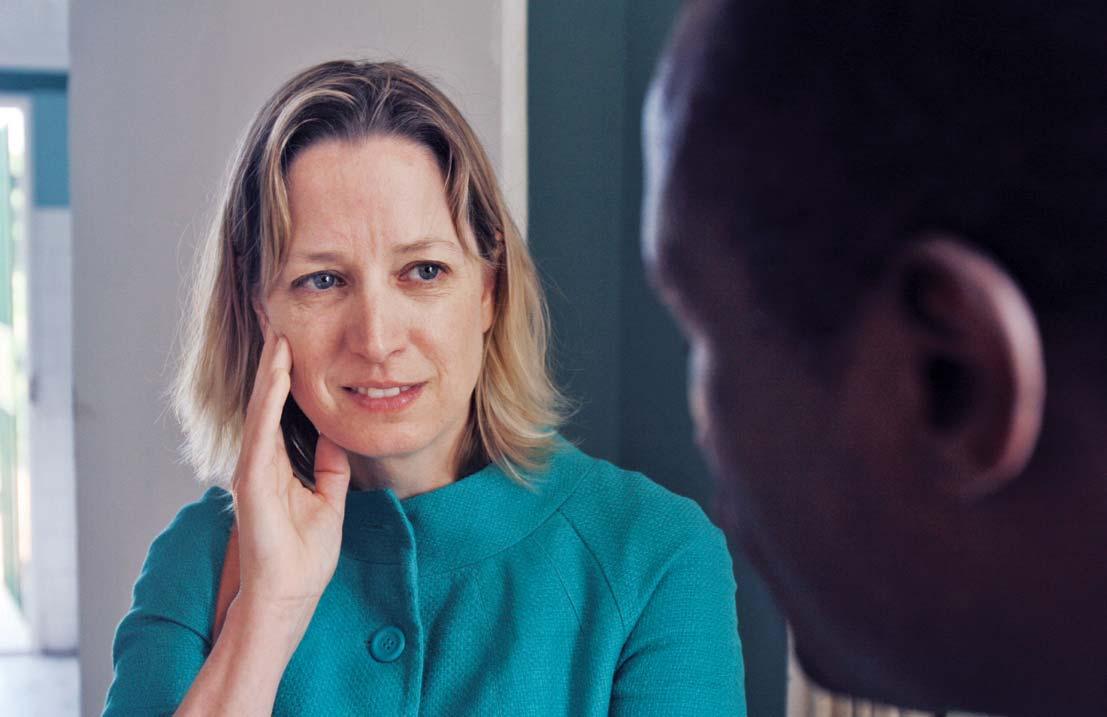
An intrepid traveler, Dusenbury is still a bit pale from a recent infection of Rocky Mountain Spotted Fever caught, ironically, from a tick in her own Atlanta backyard. She has been to Mozambique half a dozen times in the past three years and visited many other countries where IANPHI has
ongoing projects. Her boys, eight and eleven, know that when their mother pulls her suitcase out of the bedroom closet, she’s off on another trip.
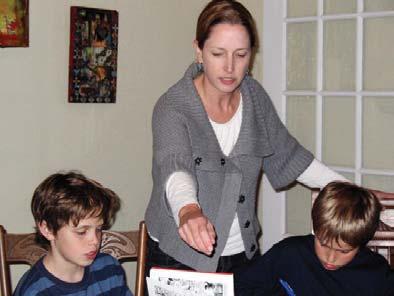
But Dusenbury makes it work. She’s a school room mother with a pile of frequent flier miles, juggling carpool and field trips with meetings with ministers of health. And when she’s overseas, her husband, George Dusenbury 03L, commissioner for Parks, Recreation, and Cultural Affairs for the City of Atlanta, fills in.
Right now, she is headed back to her Maputo hotel in a government-issued SUV—winding past avenues named for Vladimir Lenin and Karl Marx and Mao Tse Tung, heroes of the revolution, past the historic Portuguese train station and the new glass-walled shopping mall, past tall cinderblock apartment buildings and shops made of corrugated steel.
Although a bit jet-lagged, Dusenbury takes in the scenery eagerly, pointing out a botanical garden with bats swooping
low over the trees and the Iron House designed by Alexandre Gustav Eiffel in the late nineteenth century—built as a home for the governor, yet never occupied, since a metal house in a tropical climate does not make for comfortable living.
Just across from the newly constructed modern hotel is a simple house with several chickens pecking about its neatly raked dirt yard. On a nearby sidewalk, young men sell decorative wooden bowls and carved animals spread on blankets for tourists to peruse. Children approach cars with bunches of bananas and fire-roasted cashews. A small boy walks by pulling a black and white goat with a rope around its neck. “I love Mozambique,” Dusenbury says. “Some countries have more money, but less quality of life. People are very upbeat here, they have a national sense of pride. Very few Mozambicans choose to leave Mozambique.”
“The [Mozambique] Ministry of Health wants to set its own priorities, to develop its own labs and researchers and clinicians. That’s as it should be.”
—HEALTH STRATEGIST COURTENAY DUSENBURY 08MPHPRAGMATISTS: Sister Maria Elisa Verdu, left, runs the Hospital El Carmelo for patients with AIDS and TB; public health strategist Courtenay Dusenbury 08MPH, above, is helping the Ministry of Health in Mozambique execute an ambitious plan that includes building a comprehensive National Public Health Institute. HOME WORK: Although she travels frequently and far, Dusenbury juggles her job with parenting sons George, eleven, and William, eight. DUSENBURY: MICHAEL BARRIENTOS/SPECIAL; AT HOME: GEORGE DUSENBURY/SPECIAL
Before coming to Emory, Dusenbury worked as a legislative director in the U.S. House of Representatives, and she has a bachelor’s degree in journalism from Penn State as well as a master’s in public health from Rollins. She acts as a kind of public health coach on IANPHI projects: What and where are the country’s most pressing needs? What structures must be in place for these needs to be met? Where will donor money have the most long-term impact? Who should work together so efforts aren’t duplicated? With expertise in strategic planning, organizational management, and policy, she’s more likely to be found in an all-day meeting hashing out three-year objectives than in a rural province handing out mosquito bed nets.
“There’s only so much that can be done village by village,” Dusenbury says. “You have to have a national infrastructure, a central plan, milestones, a budget.”
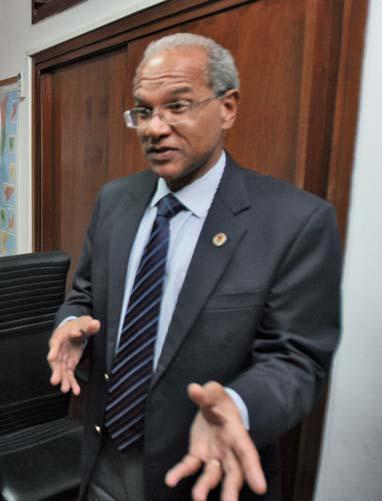
After decades of patchwork measures and feel-good projects, donor-driven mandates and pharmaceutical-driven research, and—perhaps most damning of all for developing countries—external aid shaping internal priorities, what is most needed is what Emory Professor Emeritus of Global Health Bill Foege calls “the discipline of collaboration.”
Charitable foundations, governmental agencies, billionaire philanthropists, and nongovernmental organizations (NGOs) alike, he says, can greatly increase impact though communication, collective problem solving, and accountability based on measurable results.
“Across global health, we lack coordination in tackling major diseases and threats, such as HIV/AIDS. So we squander resources by duplicating efforts or leaving gaps in the populations we serve, and millions suffer and die needlessly,” says Foege, former director of the CDC and consultant to the Gates Foundation, in the preface to the recent guidebook Real Collaboration: What It Takes for Global Health to Succeed. “To prevent this misery, we need to join forces. . . . Medical knowledge is not enough. Western leadership is not enough. Money is not enough.”
As a growing global association of some seventy national public health
institutes, IANPHI is in a prime position to help low-resource countries through peer-to-peer modeling. “Our programs are unique in this era of disease-specific donor assistance,” says the association’s president Jeff Koplan, former director of the U.S. CDC and head of Emory’s Global Health Institute. “Giving governments the resources needed to develop their own organizational missions and capacity will have longlasting effects on their ability to identify and address public health problems in the decades to come.”
For all of Mozambique’s gifts, which are prompting a resurgence of tourism here—from the endless stretches of white sand beaches along the Indian Ocean to the nightclubs with live reggae and jazz to the seaside eateries that serve giant prawns and piri-piri chicken—the country carries a heavy load of burdens.
It may be the land of “sand and sea . . . among the lovely people living free, upon the beach in sunny Mozambique” from the Bob Dylan song, but it is also one of the twenty poorest countries in the world, with slightly more than half of its twentythree million residents living in poverty.
After gaining independence from five centuries of Portuguese rule in 1975, Mozambique endured nearly two decades of civil war—many here call it a guerilla war, since the rebels were largely funded by South Africa’s apartheid ruling elite—that claimed nearly one million lives from fighting and famine before a peace agreement was reached in 1992. Fiercely proud of its free market, open elections, and self-governance, the country still struggles with scattered corruption, a hefty dependence on foreign aid, and natural disasters such as severe
floods in 2000 and 2001 that set back its fledgling progress.
Today, Mozambicans have an average life expectancy of forty-eight years. Chronic malnutrition affects four in ten children, and malaria is the number-one killer of children under five. Clean water and proper sanitation are hard to come by, especially in rural areas, and the majority of children suffer from parasites, for which they need medication.
International Association of National Public Health Institutes (IANPHI):
Institute and in Helsinki, Finland
the Bill and Melinda Gates Foundation
health institutes—similar to the U.S. CDC—in countries around the world
provided grant money for thirty-six projects in twenty-four countries
by the CDC, October 31 to November 2 at the Emory Conference Center
The main threat to adults is HIV/AIDS. Nearly 12 percent of the population has the virus (and often TB or other AIDSrelated illnesses as well), according to the country’s first comprehensive report on the prevalence of the virus. In testing nearly seventeen thousand people from Mozambique’s ten provinces last year, the health ministry and the national statistics department found that women were the hardest hit by AIDS, with 13 percent affected, compared with 9 percent of men.
Rates were highest in the southern provinces of
Maputo and Gaza, the main travel routes to South Africa. About five hundred people are newly infected with the virus every day—mostly women.
“Anything above five percent means the country is in a tragic situation,” said Minister of Health Paulo Ivo Garrido, announcing the findings in July. “A prevalence rate of 11.5 percent is already twice as much. The Mozambican government considers AIDS the first threat to the country.”
A severe lack of health care workers hampers efforts to improve these dispiriting statistics. Mozambique averages about one doctor for every seventy thousand residents. Some rural areas have no doctors, nurses, or local health clinics at all, relying solely on traditional healers. Very little exists in the way of disease detection and outbreak investigation.
There are promising signs that the country is stepping up its own public health efforts: Garrido, a former heart surgeon, is working with IANPHI to develop a national public health institute with a strong surveillance system and central research lab. He also expresses commitment to scaling up the numbers of health providers and lab technicians.
The modest government labs in Maputo are filled with researchers working to eradicate malaria-spreading species of mosquitoes and to find better, quicker ways of diagnosing illnesses like dysen-
tery, HIV, and TB. And medical schools are graduating ever-increasing classes of doctors, both men and women. “We were hungry for education for so long, but there were not enough schools and colleges. Now there is no difference, whether male or female we are all eager to learn,” says Francisco Mbofana, science director of the National Institute of Health.
Mbofana and his wife, Mariamo Saide Abdala, met while they were on the faculty of the medical school in Maputo. The couple has a six-year-old son, Tchinai.
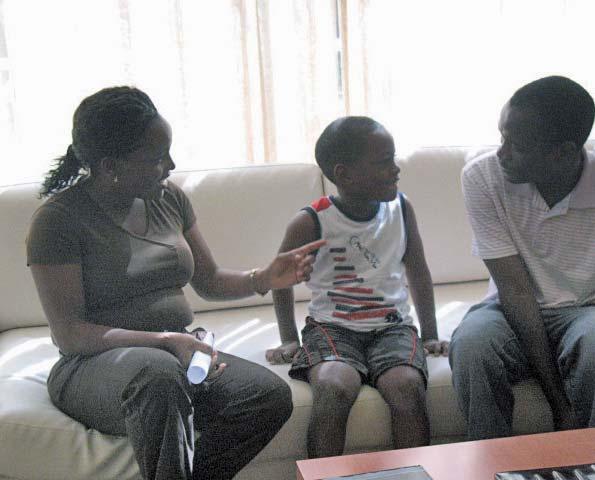
Abdala specializes in ophthalmology and performs several cataract surgeries a week. She says the government needs to address not just the essentials—clean water, sanitation, antimalarial efforts, condoms—but also the stigma associated with diseases such as AIDS. She recommends an HIV exam to every patient she sees who has eye inflammation. “It’s not just about the information on how to prevent it, it’s about the attitude of the person,” she says. “For example, a man will be HIV positive and not tell his wife. He will say, I cannot use a condom because then she will ask why. You can understand why rates are increasing.”
The day after Dusenbury’s arrival in Maputo to review the progress of IANPHI’s projects, Mbofana takes her to a small village in the Chokwe district of the Gaza
province, Massavasse, a few hours north of the capital.
Leaving the city, the road narrows to two lanes and cuts through sugarcane and rice fields. Termite mounds as tall as a man dot the landscape. Children wearing backpacks race to school along well-worn pathways. Old, stooped women tend small subsistence gardens in front of thatched cane huts; men fish with nets in a narrow river.
“Parasites and amoebas are huge problems here—75 percent of children are infected by parasites. We distribute chloride drops, but only when there’s a cholera outbreak, not routinely. Clean water is a big problem, but sanitation is an even bigger problem,” Mbofana says. “Very few people use latrines.”
About five thousand people live in the village, and most of the families make their living by farming. Nearly a fourth of the men work abroad, mostly in the mines in South Africa, and send money home.
Under the shade of a low concrete building that serves as the village clinic, a group of mothers, most holding babies and infants, has formed a line to have them dosed with antiparasitics by a visiting nurse, Joana Sitoi. She comes twice a year to provide vaccinations, check the children for malnutrition, and treat infections, such as scabies.
“We have had good success with parents here allowing their children to get their shots,” Sitoi says. “That is not always the case in other villages.”
The most common diseases Sitoi sees are pneumonia, malaria, diarrhea, upper respiratory infections, bacterial skin infections, and malnutrition. The clinic has one bed, a cabinet filled with boxes of oral contraceptives, some posters about teeth brushing, and UNICEF boxes decorated with pictures of soccer balls encouraging donors to “Kick polio out of Africa.”
In Massavasse, the group connects with Nelson Cuamba, director of entomology for the National Institute of Health, who is collecting mosquitoes from rural areas for malaria studies at the city’s central labs. He holds out a paper cup with gauze over the top, secured by a rubber band, so Dusenbury can hear the buzzing cargo inside. “It’s
“We were hungry for education for so long . . . now there is no difference, whether male or female, we are all eager to learn.”
—PHYSICIAN FRANCISCO MBOFANABUILDING INNER STRENGTH: Minster of Health Paulo Ivo Garrido, left, has increased public health efforts and research within Mozambique; Science Director Francisco Mbofana and opthalmologist Mariamo Saide Abdala, above with their son, Tchinai.
not the big ones you have to worry about,” he says. “It’s the small ones. Sometimes you can’t even tell when they bite you.”
Cuamba has done research on malaria for years, writing articles for medical journals about such topics as transmission and proximity to breeding sites, and the impact of flooding on the species of mosquitoes that spread the disease.
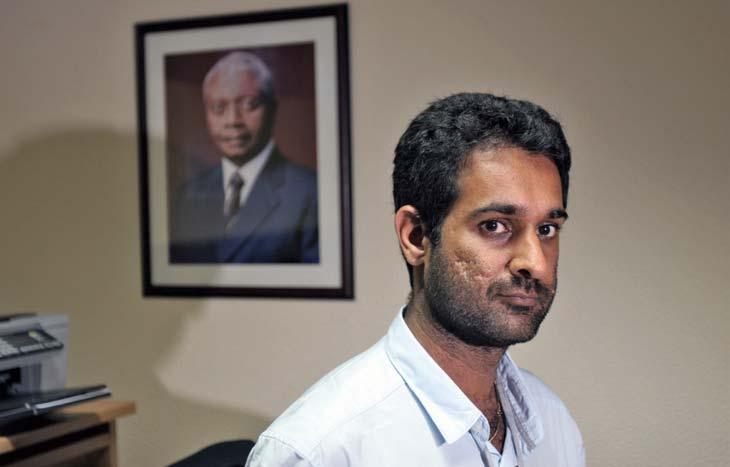
He favors collection by manual aspirators—simple tubing with a filter on one end. Mechanical aspirators, he says, are too rough and destroy the insect in the collection process, crushing them or breaking their legs. “You must be gentle,” he says, demonstrating on a wall of the clinic. “For our research, we need them alive and unharmed, living long, laying eggs.”
As the group leaves the village, bumping along a dirt road with deep ruts, they pass by a group of older children doing calisthenics in a field before their school lessons and a boy herding several cows.
Massavasse was nearly wiped out in the Limpopo River flooding ten years ago, but has rebuilt. “Villages like this are really the source of new information about what is happening,” Dusenbury says. “The records they keep and research being done here can impact how the government makes decisions and distributes resources.”
They drive into Chokwe proper, which has brightly colored houses, busy streets, a pool hall, restaurants, and new construction, stopping at a café for a brunch of cheese toast and coffee. The group meets up with the National Institute of Health’s director of parasitology Ricardo Thompson, a former veterinarian who is now an epidemiologist. “There are constraints on
a lot of aid money, that it can’t be spent on bricks and mortar,” says Thompson, who is conducting research at El Carmelo hospital and renting a space for his research from the church. “But without a building to work in, to set up research equipment and computers, what can you do?”
Battling the infamous government bureaucracy is yet another obstacle. “Even small steps take so much effort, you could not believe it,” he says. “It’s a challenge, but we need to fight on.”
Through a complex series of negotiations, the front-burner project that Dusenbury and IANPHI are working on with the Ministry of Health in Mozambique is just such a bricks-and-mortar project: constructing a building for the newly created National Institute of Public Health.
Key partners include the U.S. CDC in Maputo, which is contributing its own funds and will oversee nine million dollars in PEPFAR funding; Brazil’s FIOCRUZ; and architectural firm HDR CUH2A, which contributed the design work.
Mozambique’s current National Institute of Health is housed on two floors in the solid but aging Ministry of Health in Maputo, which has limited lab space and dangerous conditions for research involving biohazards. A needs assessment completed in 2006 found that a new location was desperately needed. “The old facility was so decrepit, it would have been foolhardy to invest,” Dusenbury says. “The recommendation was that we not do anything until we had a new building.”
Because IANPHI does not have funds for
LEADERS IN THE FIELD: Mozambique NIH Director Ilesh Jani, left, is working closely with Dusenbury and other advisers to plan the new institute of public health. “This is the right moment to act,” he says.
facility construction, other donors were sought, including the U.S. and Brazilian governments. After four years of extensive planning and frustrating delays, Dusenbury is excited to see the large, grassy field in Marracuene, just north of Maputo City, that the government has purchased for the institute. “Our own CDC started as a malaria lab in Atlanta and took over a hundred years to develop,” she says. “Mozambique is way ahead of that curve.”
Since 2006, Dusenbury, FIOCRUZ Director of Planning Felix Rosenberg, and the CDC’s laboratory adviser Beth Skaggs have worked as a team with Mozambique’s National Institute of Health Director Ilesh Jani to form a three-year strategic plan for the institute. A graduate of Eduardo Mondlane University, Jani is a witty, selfdeprecating physician and immunologist who has gained the respect of his staff and external agencies alike.
In the past, Mozambique has had to return substantial donor funds because it had no standardized data collection system and was not able to assure donors that the funds could be put to immediate good use. “This is the right moment to act,” Jani says. “A shift is happening, acknowledging a need to rethink the system. Everyone is on the same page. Integration may not happen all at once, but the direction is clear. We have a plan of what we want to achieve in the next few years and it is very ambitious.”
As a huge, luminous moon rises over the ocean, Dusenbury, Jani, Mbofana, and Rosenberg meet over dinner to discuss progress made and critical needs as yet unmet. District health officials have been put in place but there are still no teams to conduct outbreak investigations. Expensive research equipment from donors like the government of China remains stacked up in boxes, without the funds, facilities, or technicians to put it to use. And important data and samples must be sent to labs outside the country for analysis, which wastes valuable time.
After a recent diarrheal outbreak, public
health workers sent samples off to South Africa; the results—that the outbreak was typhoid fever—took a month.
“The new facility will have labs that can do this kind of testing and people trained to work there,” Dusenbury says. “If the lab had been here you’d have been able to diagnose the illness in two days and saved a lot of lives.”
The group turns in early, in anticipation of an important meeting the next day with Minister Garrido on the top floor of the Ministry of Health in downtown Maputo.
Garrido, a distinguished man who runs the ministry with the order and precision expected of a former surgeon, is unfailingly jovial and polite to visitors and seems genuinely interested in their opinion of his country, from its beach resorts to its health strategies.
Research and development within Mozambique is the key, Garrido tells the planning group: “As Mr. Gates said when I had dinner in his Seattle home with other ministers of health, ‘Science should be the priority in any third-world country.’ ”
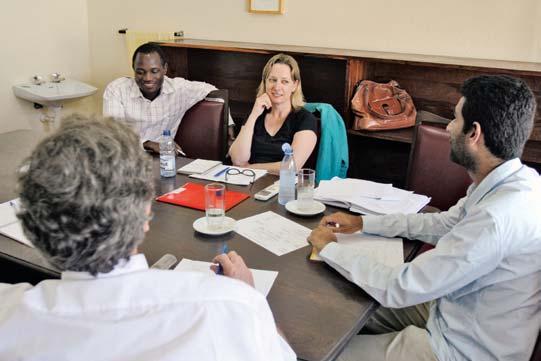
Mozambique’s health workers are its heroes, Garrido says. “The burden of disease and lack of resources,” he adds, “becomes the burden of the work to which they are subjected.”
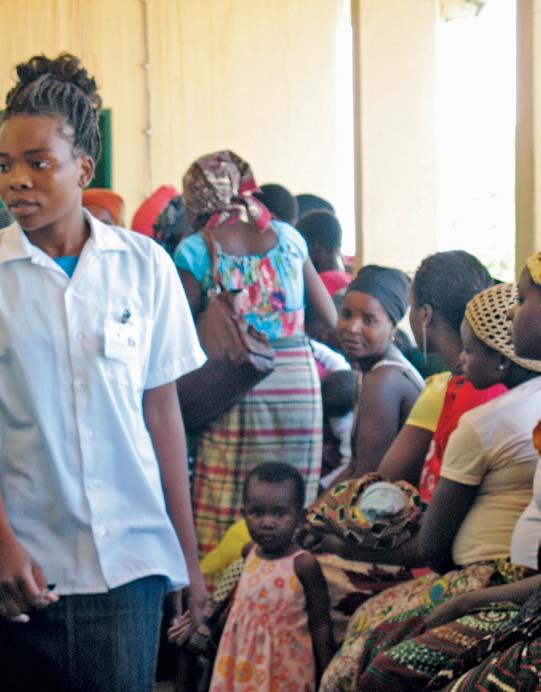
For want of a pump
This is certainly true for Eulalia Domingos
Uqueio, a young midwife at Manjangue Health Center. The center serves a village of 21,331—although that number could actually be 21,332, the staff says, if an expected baby has arrived overnight.
From 7:00 a.m. to 3:00 p.m., the small staff sees about 140 patients a day, for health concerns from ob-gyn checkups to eye exams to mental illness. By 11:30 in the morning, the line stretches around two sides of the run-down building. Those waiting are almost exclusively women and children. “The men do not like to ever admit they are sick,” says a nurse.
Patients clutch paper numbers to show the order in which they arrived. One woman’s eye is swollen shut; a toddler has a seeping skin lesion on his leg; a baby with pneumonia is being examined in a treatment room.
For five years, Uqueio, who is twentyfive but appears even younger, has delivered nearly all of the babies in the village. She also performs prenatal and postnatal checkups, and provides childhood vaccinations. Uqueio has had two years of training as a midwife, and would like to go to medical school someday and become a doctor, “if I could find a way,” she says.
As she examines one pregnant woman, another sits on the floor in the corner of the room, holding her newborn twins. Modest houses beside the center have been set up for women about to deliver
who live far away, so they don’t have to travel once labor begins.
On busy days, the clinic runs out of antibiotics, but its main problem is that it lacks running water. There is a well, but the pump has been broken for five years, so the staff has to collect water and bring it inside to use.
Uqueio shows the visitors the delivery room—with its dry sink and buckets—and the hash marks recording the number of births that week. Then the center’s medical technician leads the group outside and down a hill to see the broken pump, which stands in the middle of a field. Everyone solemnly examines the machinery.
A new pump might cost $2,500 to $5,000, he estimates.
Dusenbury looks toward Rosenberg, who has become a friend as well as a colleague. He knows she is fighting an impulse to buy the health center a pump with her own checkbook.
“You cannot buy everything that is needed,” he tells her quietly.
“It is one pump,” she says.
“It is not just one pump,” he replies.
Dusenbury knows he is right—that they need to focus on priorities that are larger than one town, one health center, one midwife, one baby.
But even strategic, organized, pragmatic public health consultants can be betrayed by their emotions, every now and again.
“If the lab had been here,” Dusenbury says, “you’d have been able to diagnose the illness in two days and saved a lot of lives.”
Georgia towns she visited, the people she encountered told her stories of relatives at Central State Hospital, the major psychiatric facility in Milledgeville. There were few treatment options for mental illness at the time and many patients, regardless of ailment, prognosis, or age, wound up at the hospital because there was simply nowhere else to go. Conditions and treatment were said to be poor.
“When I first got involved, there was little understanding of the causes of mental illness, the complex relationship between brain development and environmental factors, or how to determine the most effective treatment,” Carter writes. “The world has changed in many ways since then.”
One of the most significant shifts has been the gradual fading of large institutions such as Central State Hospital and Georgia Mental Health Institute in favor of smaller clinical settings. This trend— heralded by the Mental Health Centers Act of 1963—is a positive one, says Carter, but as state facilities have closed, the more localized services needed to replace them have not kept pace with demand.
ROSALYNN
Underneath Emory’s Briarcliff Campus, a system of concrete subterranean tunnels connects most of the seventeen buildings, forming an underground labyrinth worthy of an ancient castle in a dark fairy tale. Built in the mid-1960s as part of the foundation of Georgia Mental Health Institute—the site’s previous incarnation— the network was meant to provide safe, efficient passage for patients from one part of the facility to another. Since the institute closed in 1997, the tunnels have been a source of much speculation, fascination, and spine-tingling tall tales for students and others in the surrounding community.
Undoubtedly built with good intentions—and useful in their time—the tunnels also kept mentally ill patients hidden
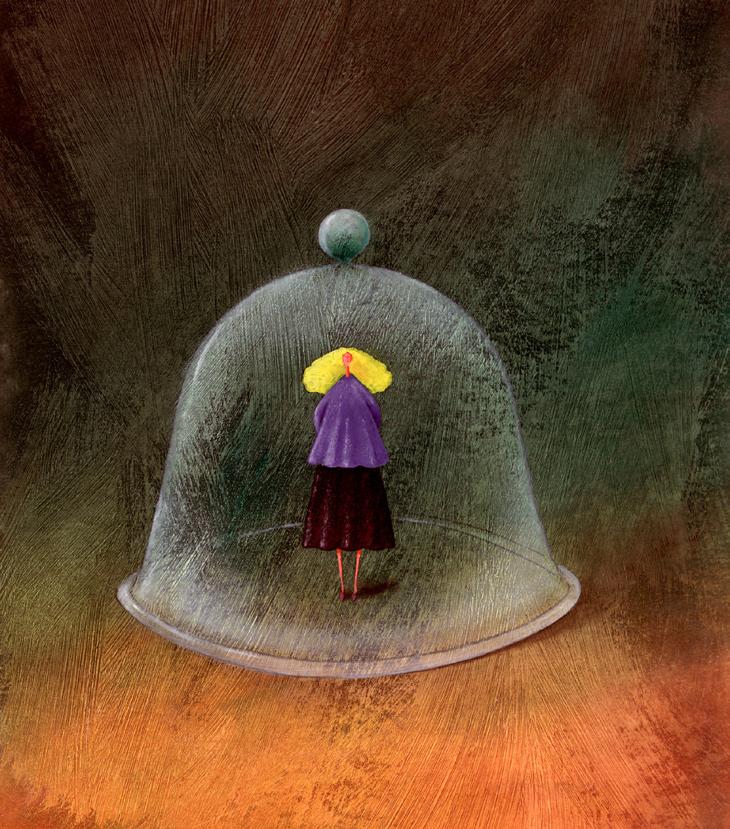
from the outside and compounded public perceptions that they should be held apart from society, lest they pose a threat to safety, or at the least, decency.
Now the unused underground warren might well serve as a symbol of the outdated attitudes and practices in mental health care that former First Lady Rosalynn Carter has been battling for most of her public career.
In her new book, Within Our Reach: Ending the Mental Health Crisis, coauthored with Susan Golant and Kathryn Cade, Carter calls on early memories of campaigning with former Georgia Governor and U.S. President Jimmy Carter to describe how she became a champion of mental health care. In many of the small
In 1980, President Carter signed into law the Mental Health Systems Act, a bill that Mrs. Carter had been deeply involved in crafting and pushing through Congress. But not long afterward, the Reagan administration largely abandoned the plan. Since then, Carter says, little progress has been made at the federal and state levels; a 2002 government study found many of the same systemic problems and shortfalls that her work had uncovered in 1978.
“The report,” she writes, “also confirmed that stigma remained a major obstacle to progress in our field.”
What is different today, says Carter, is the explosive increase in scientific knowledge and understanding of mental illness that has taken place during the past thirty years. Brain scan technologies, groundbreaking research into genetic and environmental influences, and the development of powerful medications and treatments have given clinical practitioners new tools and patients new hope.
Now, Carter says, the system needs to catch up with these advances, ensuring their availability, affordability, and recognition as medical necessities.
“The timing is right, because there is more awareness about mental health issues than ever before,” Carter said in a recent interview. “The whole mental health community is ready to do something. There is a parity issue when it comes to other kinds of medical care.”
At the heart of Carter’s work, which is centered in the Carter Center Mental Health Program, is her determination to chip away at the stigma that has shadowed mental illness for many decades, placing it in a different—and darker—category in the public consciousness than physical ailments. “Mental illnesses are just like other illnesses,” she says. “They can be diagnosed and treated successfully. People can recover and lead productive lives, and go on to help others lead better lives.”
As advocates like Carter have helped to promote that understanding, mental illness is slowly coming to be viewed and treated more like other health problems. In 2001, the Federal Employee Health Benefits Program was amended to provide equal mental health and substance abuse coverage to more than eight million government employees, with less than two percent increase in total cost. That helped pave the way for the Paul Wellstone and Peter Domenici Mental Health Parity and Addiction Equity Act of 2008, which applies to private insurance plans that cover mental health services. Carter calls the law a “great victory.”
Within Our Reach brings together the work of an impressive range of mental health professionals from around the country, from practicing psychiatrists to lab researchers to scholars such as Emory’s own Benjamin Druss, Rosalynn Carter Chair in Mental Health at the Rollins School of Public Health. Carter counts Druss among a “new breed of researchers who believe that scientific research must be relevant to the people who will ultimately be using it.”
Druss is particularly focused on life expectancy for the mentally ill, who generally live about twenty-five fewer years than those without psychiatric problems. He has studied whether ongoing nurse care and disease management programs, similar to those offered to patients with chronic physical illnesses, might boost health and increase life span, with positive results.
The practical application of discovery, to be brought about through this sort of direct connection among researchers and caregivers, is a high priority for Carter and a theme sustained throughout the book.
“I think it is good for policymakers because I state both the problem and the solution,” she says. “For people with mental health issues, it gives them hope. I actually wrote it for people who don’t know much about mental illness. Most people, I think, would get a lot out of reading it.”
Carter also hopes the book, and her ongoing work in The Carter Center’s Mental Health Program, can help influence large-scale health care reform efforts to give equal attention to mental health. She is heartened by new emphasis on preven-

injury from a land mine. “The military culture has been not to show weakness,” she says. “We have to help people understand that it’s not weakness, it’s illness, and they can be helped.”
Carter also has worked with the media to overcome stereotyping about mental illness in the news and in fictional portrayals on television and film. The Rosalynn Carter Fellowships for Mental Health Journalism have helped dozens of journalists dispel harmful myths with solid, indepth reporting. Still, she says, most of the stories about mental health continue to be negative. “There are not enough stories about people who have been helped, who have recovered and are leading good lives in their communities,” she says. “I’d like to see a lot more of those.”
tion of health problems and eager to see that focus reach out to encompass mental illness, too.
“We have learned that mental illnesses are developmental, so the earlier we can detect risks and begin treatment, the better we can do to keep them from developing into so-called mental illnesses,” she says. “There are programs working with parents who have depression to try to prevent children from getting it. We know that for women who may suffer from post-partum depression, steps can be taken before the baby is born. The whole future of medicine is going to be looking at prevention.”
This year’s Rosalynn Carter Symposium on Mental Health Policy, hosted by Carter each fall at The Carter Center, will highlight the special plight of military veterans and their families when it comes to mental health—particularly those in the National Guard and Reserves. Lingering attitudes about toughness still prevent many vets from seeking help when they need it, Carter says, and posttraumatic stress disorder can be as crippling as an
In Within Our Reach, Carter does her part to make up for that shortfall. The book is loaded with facts and figures, doctors’ names, institutions, and studies, but these are woven into a warm and conversational work that is, at its core, a series of personal stories. Carter seems to remember just about every person with mental illness she has ever met, as well as those professionals and advocates who join her in the battle against it. From the woman she encountered outside the cotton mill in Atlanta who worked tag-team shifts with her husband so that one of them could be home with their mentally ill daughter, to the depressed and addicted man who recovered to become an accomplished mental health professional, to the diagnosed schizophrenic who became a successful artist thanks to the correct medication— Carter says each new story strengthens her resolve to see progress made.
“Research shows that the best way to overcome stigma is for people to realize that the woman you talk to from the house next door, or the friend from work, has a mental illness, and there is nothing to be afraid of,” Carter says. “You are probably sitting in an office next to a person with mental illness right now.”
“There is a parity issue when it comes to mental health and other kinds of health care.” ROSALYNN CARTERSTEPHEN CORD/THE CARTER CENTER
Society depends on higher education to provide a great range of services—training (and re-training) men and women for careers; discovering new technology for improving and extending life; preserving the record of human achievement; partnering with cities to nurture vibrant and sustainable communities in various ways—the list could go on at some length. These are things society expects of universities. They are also things society needs from universities.
I would suggest that society also needs something more, something that “Society”—that big, multifarious, and hard-to-pin-down abstraction—does not always articulate well. Here is an example.
Since last spring I have had the privilege of serving as vice-chair of President Barack Obama’s Commission for the Study of Bioethical Issues. In the words of the executive order that created the commission in 2009, it serves to “advise the president on bioethical issues that may emerge as a consequence of advances in biomedicine and related areas of science and technology”—advances such as “synthetic biology” and genetically modified organisms and brain-computer interface, just to name three examples.
In pursuing its work, the commission aims to identify and promote “policies and practices that ensure [that] scientific research, health care delivery, and technological innovation are conducted in an ethically responsible manner.”
The commission chair, President Amy Gutmann of the University of Pennsylvania, has had a distinguished career as a political scientist and advocate for a more civil discourse in America. Commission members include academics from Harvard, Penn, Vanderbilt, Duke, and other universities. At our inaugural session, in July, we met with President Obama in Washington. In September we convened on the campus of the University of Pennsylvania, and I’m happy to report that our November meeting (16–17) will be held at Emory.
Some might ask—why are universities and university leaders, rather than,
say, policy experts and political leaders, so heavily involved in the work of this commission? After all, academics love pursuing questions down whatever rabbit holes those questions fall into. Some commentators have suggested that the work of the commission will be weighted too strongly in favor of academic questions alone and not enough toward pragmatic solutions—more toward what we at Emory refer to as the “courageous inquiry” side of our vision, and not enough on the “positive transformation” side. At some point the president of the United States is going to want a homework assignment turned in on time, with recommendations that call an end to some of the inquiry-driven process.
In response, it’s worth considering that the kind of deliberation that took place in Philadelphia in September—and that will take place again at Emory in November— is one of those essential services to society that universities do very well. Such activities are part of our makeup, even part of our marrow. They are also something society needs, without always knowing where to turn for it.
The experts who have testified before the commission to date include molecular biologists, geneticists, immunologists, biomedical engineers, legal scholars, philosophers, theologians, and health care analysts. More than two-thirds of these men and women hold positions at universities ranging from Stanford and Berkeley to the Universities of Michigan and of Chicago, to Harvard and MIT, to the University of Regensburg in Germany. Others are associated with organizations like the Hastings Center and the Woodrow Wilson International Center for Scholars. One is a Nobel Prize winner whose postdoctoral students have won Nobel Prizes of their own.
These scientists, scholars, and academic leaders, who have lent their expertise to the framing of important policies and guidelines, may or may not be an “elite,” in the unfortunate pejorative sense used so frequently in media these days. They are, however, surely among the best minds in the country, blessed with talent, knowl-
edge, and skill, and willing to use these gifts in service to others. They represent a response of the best minds to a virtuous task—the task of preparing and engaging other good minds to bring the best of human thought and spirit to bear on further virtuous work. This, too, is a great service that society needs from the academy, and a service that we can celebrate.
In the work of the Presidential Commission, as in so much of what the university undertakes in behalf of society, it is gratifying to see academics called upon to serve the nation in a forward-looking, responsible enterprise that seeks to shape a healthy, safe, and sane future. I believe our nation will not be disappointed.

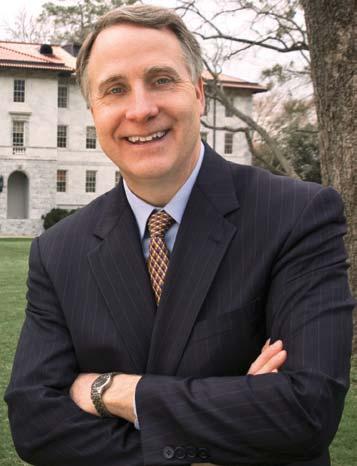
Thinking again about the university’s purposes

A GIFT OF APPRECIATION
The founding dean of the Rollins School of Public Health honors his parents with a bequest.
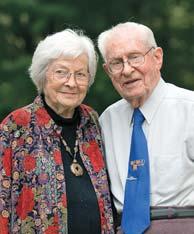
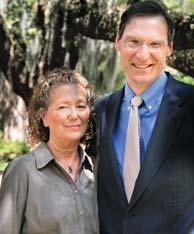

(page 44)
A FITTING TRIBUTE
The daughters of a beloved Oxford College couple fund an outdoor classroom.
(page 44)

PROGRESS AS OF SEPTEMBER 30, 2010

$1.11
BILLION
TOTAL GOAL $1.6 BILLION
“It is not always easy to talk about love for an institution, but love is the only word that does justice to our overwhelming devotion to Emory.”
Bill Fox 79PhD (page 43)
Annual giving is one of the best ways to maintain a meaningful connection with Emory. No matter where you live or when you graduated, you can participate in the annual giving program and know that you’re making a significant difference for the university you love.
This year Emory’s annual giving program has a new name—the Office of Annual Giving—and a new look. In every school and unit, annual giving now has a more sophisticated brand that reflects the worth of an Emory degree as well as the value of annual gifts to the University.
A source of pride for current students, reunion classes, and individual alumni and friends, annual giving is a central part of Campaign Emory. Thanks in large part to annual donors, Emory received a record 56,766 total gifts in the last fiscal year, 8 percent more than in the previous year.
If you’re part of the annual giving program at any level, you help keep Emory strong. What a great gift.

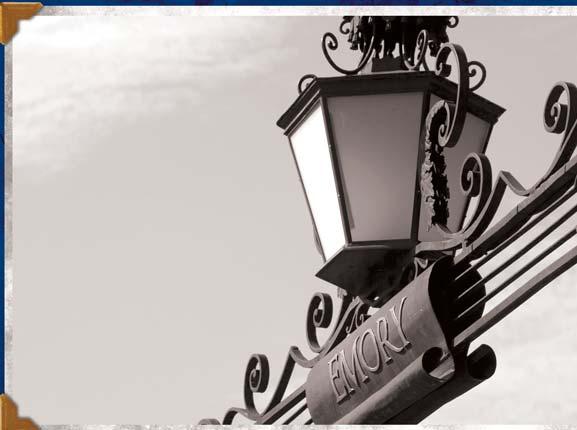
A new strategy to keep alumni informed about what’s going on at Emory began with the creation of a team to connect with alumni and friends around the nation. It continues this fall with the debut of a new name and look for the University’s annual giving program.
The Emory Office of Annual Giving, formerly known as the Emory Annual Fund, has adopted a more integrated approach to annual giving that will mean fewer emails in alumni inboxes. The Emory emails alumni do receive will have stronger, more focused messages about the areas that are most important to them.

The new approach represents a more consistent look and focus, says Kim Julian, new executive director of the Office of Annual Giving.

“There is no single annual fund where all gifts go,” she says. “Donors can make annual gifts in many ways, supporting many programs at Emory, and we want to emphasize how vital annual gifts are to initiatives across the disciplines and to the University as a whole. The new look of the annual giving materials reflects our desire to implement a more sophisticated, individualized approach to annual giving for our supporters.”
Emory’s University Regional Development Program was launched in May to help alumni who have shown an interest in being involved find the areas at Emory that appeal to them most.
“We will be engaging alumni one-on-one to strengthen their connection to Emory and to help them find the best fit,” says Roz Hines, executive director of the regional program. “This way, they can continue their relationship with the University either through their support of a specific school or unit or through engagement with the Emory Alumni Association.”
Other members of the new team are Senior Director of Development Jeff Prince and Assistant Directors of Development Andrew Christopherson, Lana Gilyalova, and Asher Lanier.
Susan Cruse, Senior Vice President, Development and Alumni Relations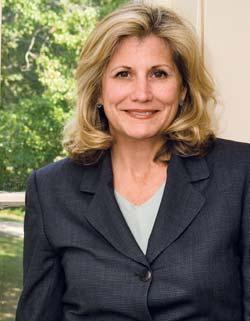
Certain relationships have profound effects. The bond that former Emory University administrator Bill Fox
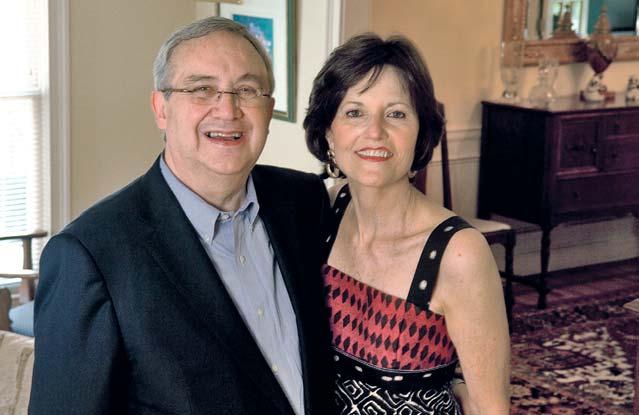
79PhD and his wife, Carol, have with Emory is one of those.
In recognition of the love they have for the University and to honor the close friendships they made here, the Foxes have established a $1 million bequest that will benefit six areas on campus close to their hearts.
“It is not always easy to talk about love for an institution, but love is the only word that does justice to our overwhelming devotion to Emory,” Bill Fox says. “I wish we had more money so we could leave more to support every aspect of the University. I love it all.”
Half of the gift will go to the Bill and Carol Fox Center for Humanistic Inquiry at Emory College of Arts and Sciences. This gift honors Emory Board of Trustees members Lynn Stahl 76C and Wendell Reilly 80C as well as Mary Laney Reilly 81C 00T. Gifts of $100,000 each will go to these Emory areas:
James T. Laney School of Graduate Studies to honor Emory President Emeritus James T. Laney
94H and Berta Laney 94H
Division of Campus Life, divided between Volunteer Emory to honor Trustee Laura Hardman
67C and the Dobbs ATO Scholarship in honor of Trustee Ben F. Johnson III 65C
Robert W. Woodruff Library to honor Emory
cardiology great and Trustee Emeritus Linton
Bishop 47M and June Bishop
Michael C. Carlos Museum to honor Trustee

Emeritus James Sibley 92H, Karen Sibley, and family
Emory Alumni Scholarship Fund to honor Trustee
Emeritus Brad Currey 01H, Sally Currey, the late Trustee Emeritus John McIntyre 51B, and Joan McIntyre
The honorees are among the many Emory administrators, students, alumni, and friends with whom the Foxes became close during his long tenure. Fox served as dean and vice president of campus life from 1979 until 1991, and as vice president for institutional advancement (now development and alumni relations) from 1991 until his retirement in 2005. (See related story, page 10.)
“My hope is that each one of them will recognize what they have meant to our lives and to our time at Emory,” Fox says of the honorees.
Laney appointed Fox to both of his vice presidential posts at Emory, and the Laneys maintain a close relationship with the Foxes.
“Bill and Carol Fox’s devotion and service to Emory are legendary, and their planned gift to the University is a remarkably generous expression of that lifelong love,” Laney says. “Beloved by generations of Emory alumni, they have been Berta’s and my dear friends since soon after we became associated with Emory. In light of all they mean to Emory, we are all the more moved by their decision to designate a portion of their legacy to the Laney School of Graduate Studies.”
“Bill and Carol Fox’s devotion and service to Emory are legendary.”
Twelve former Emory Eagles softball players have stepped up to the plate as fund-raising captains for softball stadium improvements, including the addition of covered batting cages and press box, locker room upgrades, and seating.
Candler Associate Professor Karen D. Scheib made a gift to honor the pastors of Sun-Lin (Good Samaritan) Korean Methodist Church in Inchon, South Korea.
CityBridge Foundation is creating a need-based scholarship in memory of Georgia education leader Marion Luther Brittain Sr. 1886C. The scholarship is designed to enrich opportunities for promising Washington, D.C., students.
Emory University Hospital Midtown
Auxiliary and Emory University Hospital Auxiliary recently gave a combined $212,000 to their respective hospitals.
Through the generous support of Emory Law alumni and friends, 75 percent of first-year students in one of the largest classes ever are receiving scholarships to help offset the cost of their legal education.
Barnes & Noble Chairman Leonard Riggio and his wife, Louise, have endowed a research fellowship in Emory University’s Manuscript, Archives, and Rare Book Library that will focus on the work and life of writer Alice Walker.
Kenny Higgins and his Agape Love Foundation committed $300,000 to Emory’s Center for Heart Failure Therapy. Cardiologist and Medical Director for Heart Failure and Transplantation Andrew L. Smith directed the funds to support Javed Butler’s research.
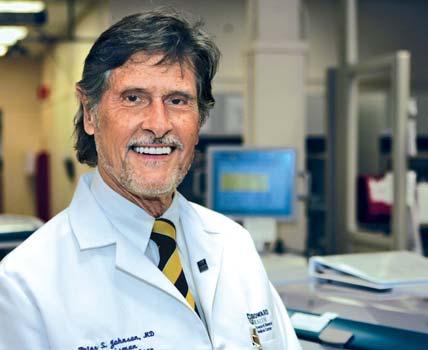
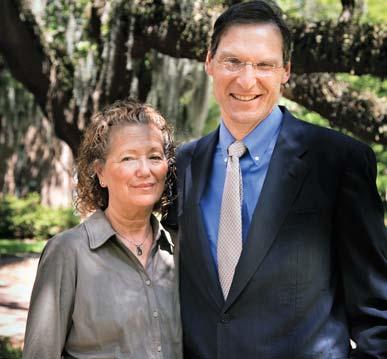
The former dean of Rollins School of Public Health (RSPH) is honoring the school and his parents with a gift. A bequest from Ray and Leah Greenberg will establish the Dr. Bernard and Ruth Greenberg Fund for Biostatistics and Epidemiology.
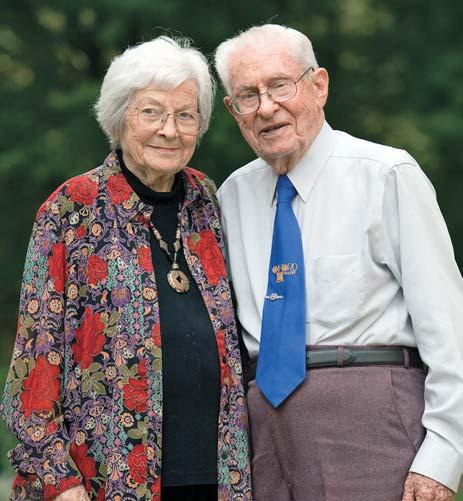
The fund recognizes Bernard Greenberg’s legendary leadership in the fields of biostatistics and public health, and it honors the couple’s contributions to social justice.
Ray Greenberg was the founding dean of RSPH, taking the helm in 1990. In 1995 he became vice president of academic affairs and provost at the Medical University of South Carolina in Charleston, where he now serves as president.
“I am where I am today in large part because of opportunities I received at Emory, and I was in a position to take advantage of those opportunities because of the background my parents gave to me,” he says. “This is a perfect way to express my appreciation to both my parents and to a university that as long as I live will hold a very special place in my heart.”
Former Oxford College Dean Bond Fleming was a philosophy professor who loved to teach and learn. He also was a passionate gardener, sharing with family and friends the vegetables he grew at his Oxford home.
Now his daughters have made a memorial gift to support the creation of an outdoor classroom not many yards from his garden. Becky Fleming Crosby 71C, Jane Fleming Keene 69G, and Mary Dell Fleming Palazzolo have pledged $75,000 and welcome donations to complete
the funding. The gift will name the Neal Bond Fleming and Mary Louise Fleming Classroom near the Oxford Library and Academic Commons building.
“Obviously, we wanted to honor our parents’ memory. We also thought it was important that their devotion to Oxford College and their many years of service be recognized in a significant way. We are pleased this gift combines those two objectives,” Crosby says. “That it reminds us of Dad’s love of gardening and the outdoors makes it just that much more special.”
Grateful for opportunities he had as a medical resident, Peter Johnson 75MR has made Emory the beneficiary of his retirement accounts. His gift will create scholarships for medical students. “Giving back to an institution like Emory helps the whole community by allowing individuals to reach their educational potential,” he says. (See page 61.)
For details on bequests, life-income gifts, and associated tax benefits, call 404.727.8875 or visit www.emory.edu/giftplanning.
Grateful for his success, Ken Gross 75L has supported Emory Law annually since he was a student.
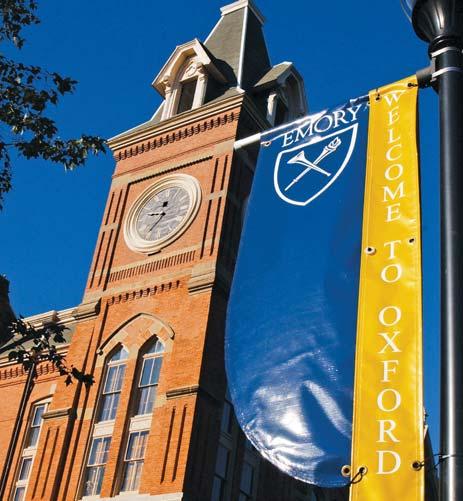
As a student in the 1970s, Ken Gross 75L learned about political ethics from the Watergate scandal, which was consuming the nation. Now an expert on campaign finance reform, he has earned international acclaim from the Council on Governmental Ethics Laws for his contributions to the field of ethics, and he advises candidates across the political spectrum.
Crediting Emory with his success, Gross has supported Emory Law financially every year since his student days.
“Emory gave me a tremendous launch into the profession,” he explains. “I feel a sense of responsibility to support the school and help other students.”
Lin Rogers 08B is supporting Goizueta Business School’s student-run Microfinance Club with a three-year pledge.
A new translational science program gives PhD students the expertise to translate biomedical scientific discoveries into treatments to benefit human health. The program was made possible by a generous grant from the Howard Hughes Medical Institute.
MICHAEL C. CARLOS MUSEUM
Kenneth Falck 82C gives annually to support Carlos Museum acquisitions and has included the Carlos in his estate plans.

Tracey Wilds 88OX 91N, a clinical nurse specialist at the Emory Clinic, has made an adopt-a-scholar gift to support nursing students who have financial need.
Art Vinson 66OX 68C, vice chair of the Oxford Board of Counselors, has made a generous gift to support the fund-raising effort for a new science building on the Oxford campus.
Hubert Professor and Chair of the Hubert Department of Global Health Carlos del Rio and his wife, Emory pathologist Jeannette Guarner, have established the Reynaldo Martorell Scholarship in honor of del Rio’s predecessor. Funding will support Hispanic students seeking the master of public health degree.
Bill Dobes 65C 69M 70MR, who chairs Campaign Emory for Yerkes, recently honored his family by making a gift to the research center. With his latest gift, he is more than halfway toward completing his Campaign Emory pledge.
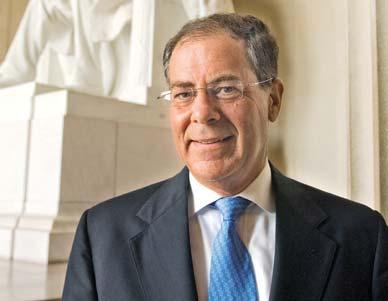
“All of us can invest in Emory’s creativity, compassion, and wisdom.”
PRESIDENT JAMES WAGNERPhoto: The late Mary Louise and Neal Bond Fleming are being honored by a gift from their daughters.
AS OF SEPTEMBER 30, 2010
Campus Life Goal: $5 million
Candler School of Theology Goal: $60 million
Emory College of Arts and Sciences Goal: $110 million
Emory Healthcare Goal: $305 million
Emory Law Goal: $35 million
Emory Libraries Goal: $27 million
Emory School of Medicine Goal: $500 million
Goizueta Business School Goal: $75 million
James T. Laney School of Graduate Studies Goal: $10 million
Michael C. Carlos Museum Goal: $35 million
Nell Hodgson Woodruff School of Nursing Goal: $20 million
Oxford College of Emory University Goal: $40 million
Rollins School of Public Health Goal: $150 million
Yerkes National Primate Research Center Goal: $30 million
* Progress chart does not include goals for general University and Woodruff Health Sciences Center initiatives.
Susan Cruse, Senior Vice President, Development and Alumni Relations 404.727.6061 | susan.cruse@emory.edu
Maggi McKay, Vice President, Woodruff Health Sciences Center Development 404.727.3518 | mbmckay@emory.edu
Joshua Newton, Vice President, University Development 404.727.9627 | joshua.newton@emory.edu
Jason Peevy, Executive Director of Development Communications 404.727.7181 | jpeevy@emory.edu
Editor: Terri McIntosh (tgmcint@emory.edu)
Writers: Maria Lameiras, Jennifer Wheelock
Designer: Heather Putnam
Photography: Ann Borden, Kay Hinton, Jack Kearse, Bryan Meltz, Charlotte Southern
Campaign Emory Chair
Walter M. “Sonny” Deriso 68C 72L
Cabinet
Ellen A. Bailey 63C 87B Chair, University Programs
Russell R. French 67C Chair, Leadership Prospects Committee
M. Douglas Ivester Chair, Health Sciences
Teresa M. Rivero 85OX 87B 93MPH Chair, Alumni Engagement School and Unit Chairs
J. David Allen 67C 70D 75DR
Beverly Allen 68C
Nell Hodgson Woodruff School of Nursing
Courtlandt B. Ault
James H. Morgens Michael C. Carlos Museum
James B. Carson Jr. 61B Goizueta Business School
Ada Lee Correll Emory School of Medicine
William L. Dobes Jr. 65C 69M 70MR Yerkes National Primate Research Center
Crystal Edmonson 95C Paul McLarty 63C 66L Emory Alumni Board
J. Joseph Edwards 54OX 56B 58B
Henry Mann 62OX 64C Oxford College
James R. Gavin III 70PhD James T. Laney School of Graduate Studies
Laura Hardman 67C Campus Life
Ann Klamon 65C 76L Lawrence P. Klamon Rollins School of Public Health
John F. Morgan 67OX 69B Emory Libraries
Philip S. Reese 66C 76B 76L
Chilton D. Varner 76L Emory Law
Wendell S. Reilly 80C Emory College of Arts and Sciences
Bishop B. Michael Watson 74T Candler School of Theology
Emory’s own Emily Saliers 85C and Amy Ray 86C— known collectively as the Indigo Girls—found their way back to campus for Homecoming 2010, filling McDonough Field with more than 2,500 fans who spanned generations. Photo by Ann Borden.
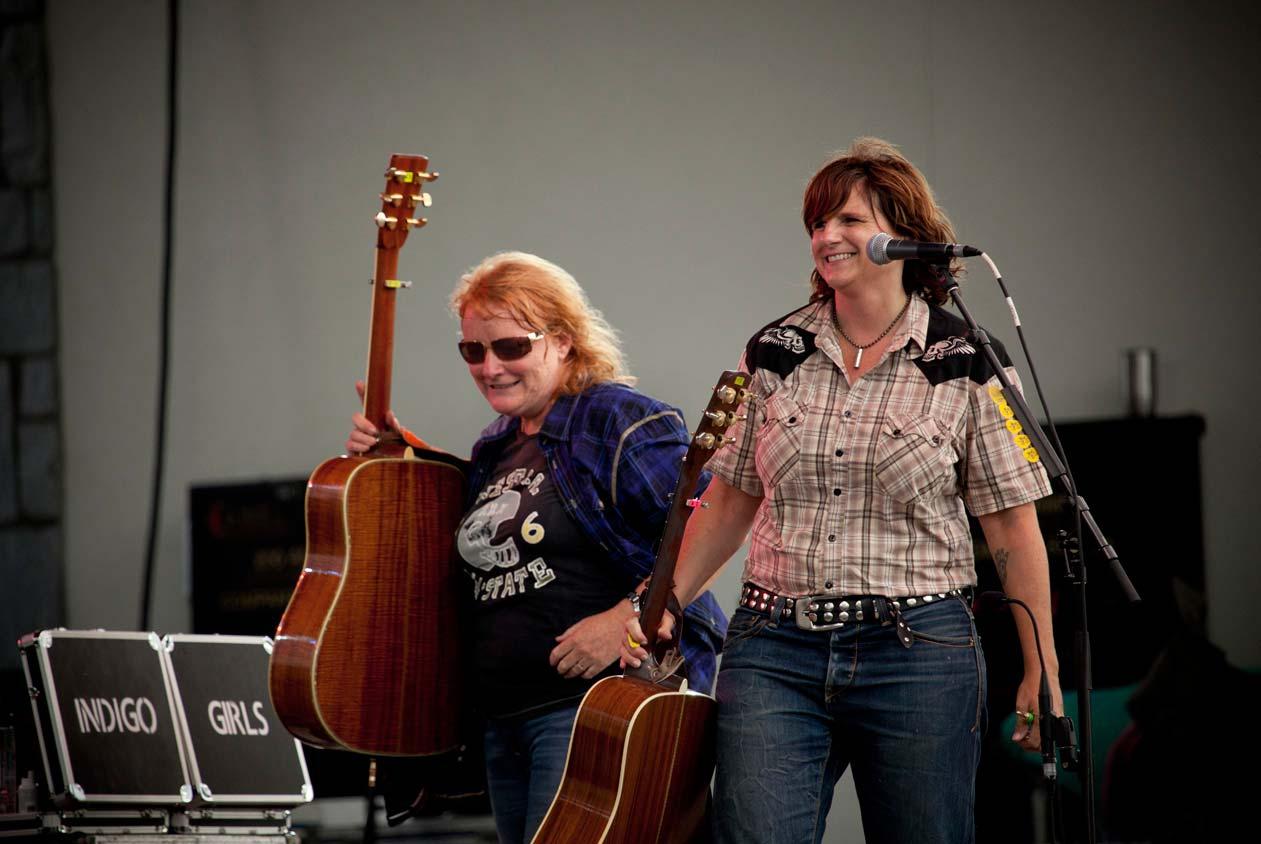
52 Profile: The English Major
54 Alumni Ink
58 Reflections on AIDS
Since it opened in the fall of 2000, I’ve had the great pleasure of coming to work every day at the Miller-Ward Alumni House (MWAH). As we celebrate the beautiful building’s tenth anniversary, I hope the men whose names grace the house— Prentice Miller 26C 27G and Jake Ward 33C 36G, the only two deans of alumni in Emory’s history—would be proud of our stewardship of their legacy.
The beginning of MWAH’s second decade ushers in a new era for the house in many ways. Most significantly, the Emory Alumni Association (EAA) is now offering alumni an exciting new benefit—exclusive access to Miller-Ward for your events, meetings, or receptions. If you’d like more information, please contact MWAH Event Coordinator Carey Smith-Marchi 09C at 404.727.7052 or at millerward@emory.edu. She’d be happy to discuss our packages, set up a house tour, review payment options, and much more.
Don’t forget, whenever you are on campus—whether it’s for Homecoming, a class reunion, or just to take a look around— please stop by my office (and then feel free to tour the rest of Miller-Ward). You can email me at adykes@emory.edu anytime.
ALLISON DYKES VICE PRESIDENT FOR ALUMNI RELATIONS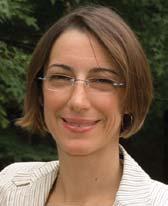
The Association of Emory Muslim Alumni (AEMA) helped open the Michael C. Carlos Museum’s new exhibition, Traces of the Calligrapher: Islamic Calligraphy in Practice, c. 1600–1900, August
27. Rabia Khan 97C was one of the more than 120 alumni and their guests in attendance.
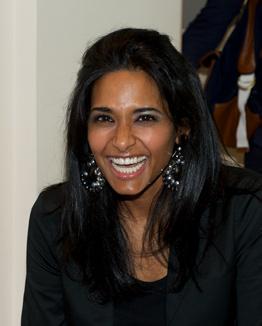
Let’s Go (Eat), Emory! More than a dozen Let’s Go, Emory! parties were held around the country to welcome fi rst-year students into our community. In Nashville, the barbeque fi xins—provided by Luke Gregory 76OX 78C and his wife Susan 77OX 79C—were mighty good.
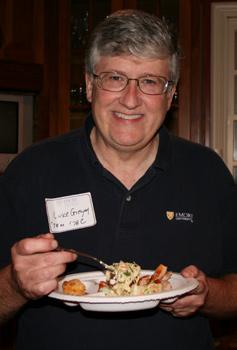
New York, October 25, Meetup and Margaritas with Alumnae and Women of Emory (AWE) NY
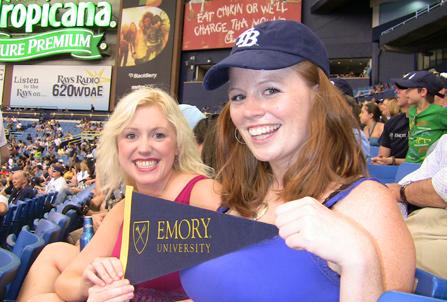
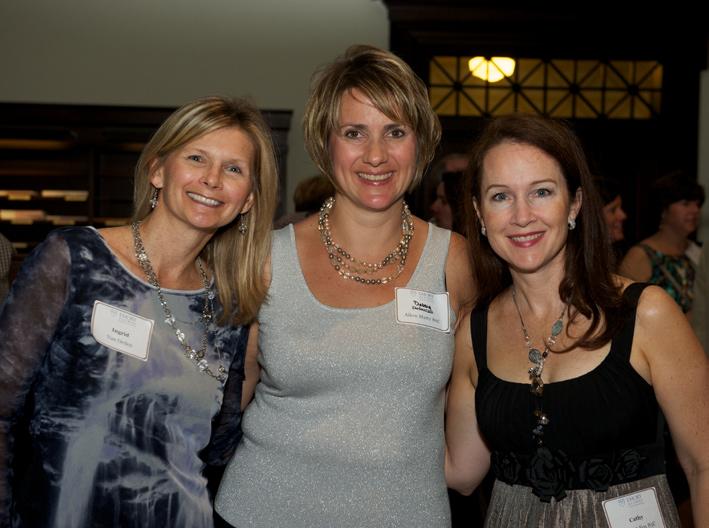
San Diego, October 27, Social, Il Padrino Pizzeria
Washington, October 27, D.C. networking night
Atlanta, October 28, Presidential Destinations, “Why We Need Universities More than Ever,” featuring President Jim Wagner and Vice President for Communications and Marketing Ron Sauder
Houston, October 28, Indian cooking
stration and dinner party
For more, visit www.alumni.emory.edu/calendar.



When Todd M. Stein 96C was an undergraduate, he was among the students who met Seamus Heaney during the Irish Nobelist’s visit to Emory. An eager student of literature, Stein asked Heaney how best to find meaning in his favorite works. Heaney replied, “Silly boy, there’s no meaning in any of it.”
Stein was undeterred and went on to graduate with degrees in both English and political science. A decade and a half later, he’s Senator Joe Lieberman’s (I–CT) chief policy aide, and he says the English degree actually has served him best on Capitol Hill.
In high school, Stein’s interest in British literature was piqued by Tom Stoppard’s The Real Thing. Between his freshman and sophomore years at Emory, he studied literature abroad at Oxford University and encountered Stoppard again at a per-
formance of the playwright’s Arcadia in London. “I was hooked,” he says.
During his senior year, he took a class on James Joyce taught by University President and Professor William Chace.
“Dr. Chace sold me on the challenge of reading Ulysses,” he says. “If anyone tells you they’ve read it all and understood it all, they’re lying.”
TRACES OF THE CALLIGRAPHER: Islamic Calligraphy in Practice, c. 1600–1900
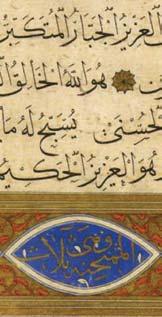
WRITING THE WORD OF GOD: Calligraphy and the Qur’an
After graduation, Stein returned to the United Kingdom to pursue a master’s degree in English literature at King’s College, University of London. He went on to law school at Vanderbilt and worked for four years at the Washington, D.C., office of Troutman Sanders, an Atlantabased law firm. In 2004, Stein made his entrance into politics as the policy director in Inez Tenenbaum’s bid for a South Carolina senatorial seat. He began working as a legislative assistant for Senator Joe Lieberman the same year and reprised his role as policy director for the senator’s 2006 reelection campaign in Connecticut.
became counsel for the Senate Committee on Homeland Security and Governmental Affairs, investigating terrorism, the failure of levees in New Orleans during Katrina, and matters of national security. A report he authored on homegrown terrorism inspired by Islamist extremism was cited in Time magazine as forecasting the attacks at Fort Hood.
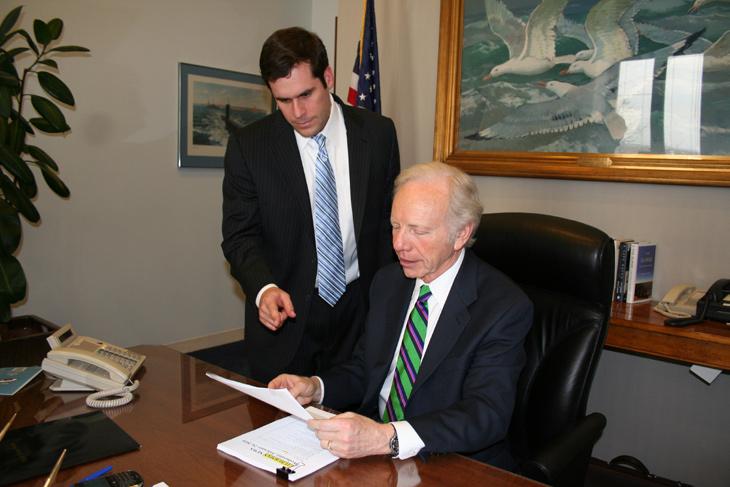
As Senator Lieberman’s legislative director, Stein says his background in literature continues to help him understand political and policy debates. “I have been able to learn what patterns to look for to figure out where the fault lines are, who the key players are, and what conditions have to change to influence the debate one way or the other,” Stein says.
When Stein came back to Emory earlier this year to speak about health care reform and the 2010 agenda on Capitol Hill, it felt like a family reunion. Stein’s father, William Schatten Professor of History Ken Stein, has been on the faculty at Emory since 1977; Todd’s older brother, Jason Stein 98M, is a faculty member at Emory’s School of Medicine, and his younger brother, Andrew Stein 11MBA, is a Woodruff scholar at Goizueta Business School.
“Perfect your ability to communicate,” Stein told the audience, “and go out and engage the world.”—Riley Blanton
carlos.emory.edu
Immediately following Senator Lieberman’s reelection, Stein
Costa Rica
January 26–February 5, 2011
From $3,495 (plus air)
Alumni Holidays International
Swiss Winter Escapade
January 31–February 7, 2011
From $1,695 (plus air)
Alumni Holidays International
Treasures of South America
February 6–18, 2011
From $4,495 (plus air)
Alumni Holidays International
Rome
February 28–March 8, 2011
From $2,495 (plus air)
Alumni Holidays International
Journey to the South Pacific
March 12–April 3, 2011
From $5,999 (airfare included)
Collette Vacations
Israel: The Heritage and The Hope
April 3–15, 2011
From $4,695 (plus air)
Classic Escapes
Saxony Cruise on the Elbe River
April 15–23, 2011
From $2,495 (plus air)
Alumni Holidays International
Celtic Lands
May 6–15, 2011
From $5,235 (plus air)
Thomas P. Gohagan and Co.
Normandy and Paris
May 31–June 9, 2011
From $2,695 (plus air)
Trains of the Colorado Rockies

July 9–17, 2011
From $2,499 (airfare included)
Collette Vacations
Resorts of the Rockies

July 31–August 10, 2011
From $3,939 (airfare included)
Collette Vacations
The coming year brings opportunities to discover new places and fresh faces around the world while revisiting some old, beautiful favorites. We are dedicated to giving travelers like you enriching cultural experiences to enhance your lifelong education while strengthening your connection with faculty, other alumni and friends of Emory.
If you would like additional information about our upcoming trips or are interested in being added to our travel mailing list, please email alumnitravel@emory.edu or contact the Emory Travel Program at 404.727.6479.
The information and dates above are based on information provided by our travel vendors as of October 2010 and are subject to change. Individual trip brochures will be available to be mailed out approximately 9–12 months prior to the trip’s departure.
All Emory Travel Program tours require that participants be in good physical condition. Each traveler must be capable, without assistance, of walking a minimum of one mile over uneven terrain and of climbing stairs that may not have handrails. Participants should have sufficient stamina to keep pace with an active group of travelers on long days of touring. If you have any questions about your ability to participate in a tour, please call the Emory Travel Program at 404.727.6479
New York seems like the antithesis of the natural world—concrete, traffic, and lots of people. But Dianne Glave 10T’s memories of growing up in Queens are of her father’s garden patch, her mother’s stories of life in Jamaica, and cavecrawling adventures on weekend camping trips.
Glave went on to study environmental history at Stony Brook University, all the while asking herself why African Americans never had a place in the material she studied. Her recent book, Rooted in the Earth: Reclaiming the African American Environmental Heritage, traces the history of the African American relationship to the natural world. The historical novel includes firsthand accounts from enslaved blacks, archival analysis, and travel-based research.
In Hot Off the Presses, a gay newspaper editor covering the Atlanta Olympic Games struggles to balance journalistic ethics and personal relationships. A former Atlanta Journal-Constitution reporter, Elliott Mackle 77PhD says his novel is based in part on his experience covering the Olympics in 1996 in addition to volunteer work at Jerusalem House, a residence for homeless and lowincome people with HIV/AIDS. Mackle was founding cochair of Emory’s Gay and Lesbian Alumni chapter.
As people become more environmentally and ecologically conscious, Glave says, the book’s themes are based in African American history, but also have universal appeal. “It’s commonly held that African Americans are not connected to the environment,” she says, “but history says something different.”

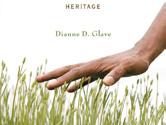
 —Alyssa Young 11C
—Alyssa Young 11C
Elizabeth Coursen 81C put herself through college by starting a lawn care service and was the only girl on the ice hockey team. While her quirky past might seem fit for fiction, she’s written a how-to book with the self-biographer in mind. The Complete Biography Workbook organizes life into six age-specific chapters that can be completed independently or turned into a fun intergenerational project. Coursen will “preach the gospel of biography writing” at Tall Tales Book Shop in Atlanta’s Toco Hills on November 10 at 7:00 p.m. and the William Breman Jewish Heritage and Holocaust Museum on December 19 at 2:00 p.m.

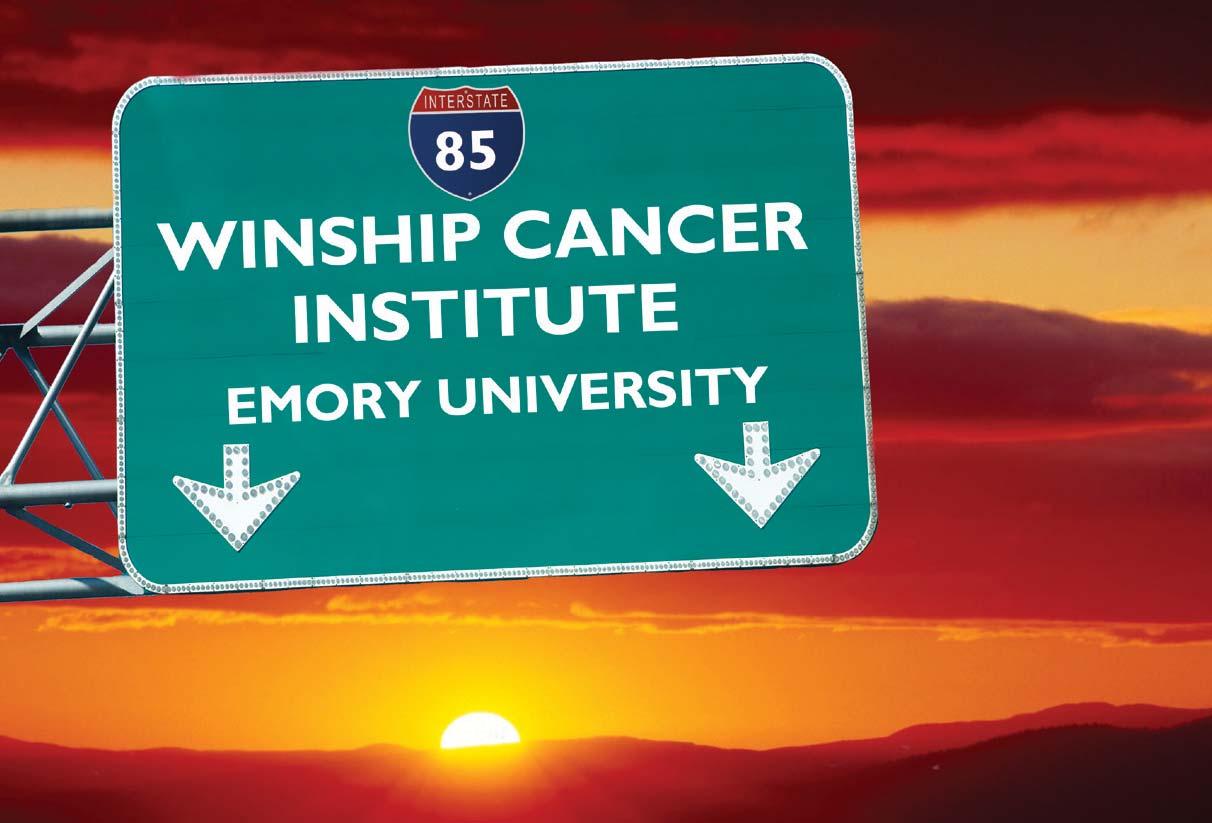
LENBROOK

Life Without Limits for 27 years
EM Classifieds
Beautiful 2 BR 1 Bth condo for sale. Minutes to Emory, CDC; perfect for roommates. Walk to park, Decatur Sq. Vintage char., orig’l hdwd floors, separate DR. Updated kitchen, bath. Off-street pkg. Huge yd. for dogs, picnics, etc. Low HOA fee. $118,500. Zann Palmer, Realtor, 4/843-2500.
Beautiful Mountain House for Rent
Comfortable, spacious, two-story home in a private, wooded community just 12 miles from all of Asheville’s famous charm and culture. On a mountain, at 3,450 feet the house offers one of the area’s most spectacular long-range views. Enjoy it from the 1,000-square foot, multi-level deck, the hot tub, or indoors, in front of the fire. www.chestnutforest.com
The Best of Emory Photography
Emory University Alumni Residents
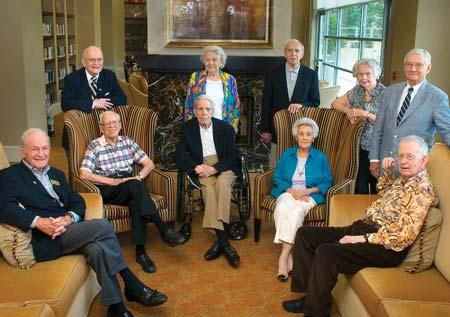
Annual Gift Form
Emory Photo/Video now offers limited-edition fine art prints of your favorite Emory scenes. Visit our website to browse a selection of Emory classics: www.photo.emory.edu.
Emory Magazine is now accepting classified ads! This section offers a new way for you to connect with more than 100,000 fellow alumni. For more information, contact 404.727.0161 or emclassifieds@emory.edu.
Account Number Expiration Date Authorized Signature

Name(s) Home Address City State ZIP Home Phone Cell Phone Preferred email MAG1F

Please
Gifts that pay me income (Charitable Trusts and Annuities)
Gifts of Appreciated Assets including Stocks and Real Estate
Creating a Named Scholarship or other Endowment Fund at Emory Including Emory in my Will or Trust
Other:
Office of Gift Records 1762 Clifton Road, NE Suite 1400, MS: 0970-001-8AA
Atlanta GA 30322-4001 Phone: 404.727.0068
Fax: 404.727.4876 eurec@emory.edu
(This is my personal business email.)
Is Emory in your will or other testamentary plans?
Yes No Would Consider
My employer will match my gift.
Name of Company
My spouse’s/partner’s employer will match my gift.
also may make your gift online at
Name of Company
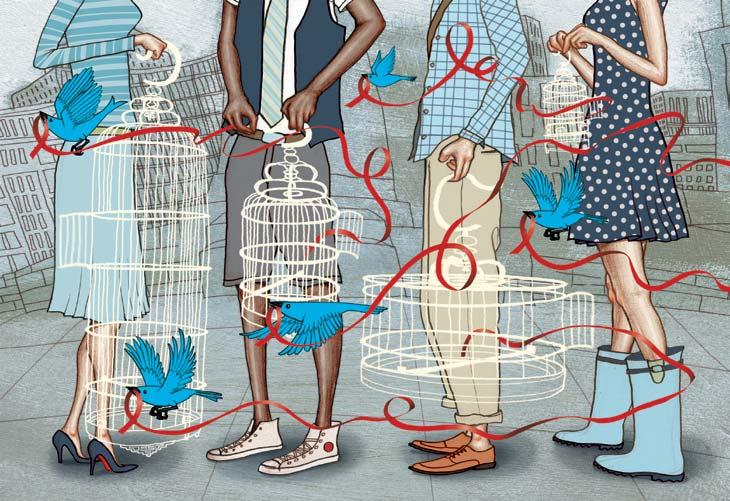 BY LAURA DOUGLAS-BROWN 95C 95G
BY LAURA DOUGLAS-BROWN 95C 95G
“Mommy,
My older daughter’s question caught me off guard, though I should have seen it coming. Dylan is, after all, the child who can ask a dozen questions based on one TV episode, and I had brought her along with me as I covered the annual AIDS Walk for the gay community newspaper where I worked at the time.
As I fumbled around for the best elementary-school answer, I couldn’t help but think back to the first time someone asked me that question. I was only a few years older than Dylan, and was watching TV with my favorite babysitter when a report came on about Rock Hudson. “Do you know what AIDS is?” she asked.
I diligently watched the news every night, hoping to glean current events answers for the school academic bowl team. Anxious to impress, I rattled off the acronym: “Acquired Immune Deficiency Syndrome.”
“Yeah, but do you know how people get it?” she snickered.
I didn’t, and she refused to tell me, because she said it was “nasty” and my parents would be mad. Her reaction was so strong I never dared ask.
My partner, Dylan’s mama, had no choice but to discuss AIDS with her par-
ents. In the early 1980s, around the same time I was scouring headlines for quiz bowl clues, her favorite uncle lay dying in a Houston hospital.
Her memories of the time seem quaint now, and heartbreaking in their ignorance: her family’s horror when she took a sip of his milkshake in the hospital, and firm instructions to tell everyone back home that he died of cancer, for fear the stigma of AIDS would endanger them, too.
Neither of us was openly gay yet, although we both knew we were different from most of the other kids. By the time we would come to claim the word “gay” for ourselves, it was already firmly associated with AIDS.
It wasn’t until I first visited Emory that AIDS began to mean more to me than shame and fear.
It was 1991. I was seventeen, a senior in high school, visiting Emory for scholarship weekend to interview for the Woodruff award that I hoped would pay my way into Emory—and out of the closet I felt was necessary for survival in my central Georgia hometown.
Shouting and whistles erupted from the back rows of Glenn Memorial Auditorium, interrupting the prestigious speaker. I sat
awestruck as the small group of ACT UP protesters called out the speaker and the government for ignoring the AIDS epidemic.
Afterward, the Emory staff member who escorted us to the speech apologized for the disruption, apparently worried it would dissuade us from choosing Emory.
Almost twenty years later, I can’t remember the speaker’s name or the subject of his talk. But I vividly remember those passionate protesters. It was my first glimpse of proud gay activists in action, and it sealed both my decision to come to Emory and my desire to be part of Atlanta’s vibrant gay and lesbian community.
HIV would soon become an integral part of my career, much as it continues to be an integral part of my community. I finished my degrees at Emory in 1995, and in 1997 took an internship at Southern Voice, then the South’s leading lesbian, gay, bisexual, and transgender (LGBT) newspaper.
The intervening year was critical in the fight against HIV. In 1996, the FDA approved the first in a new class of drugs called protease inhibitors. Within a year, the AIDS death rate dropped 47 percent.
For young gay and lesbian people especially, the difference proved dramatic. I found myself at the very cusp of the generation that did not witness mass death and devastation from the disease. Now, after more than a dozen years as a journalist in the LGBT press, I know countless people living with HIV, but I can count on one hand the people I have known who have died from it.
The headlines from my first decade as a reporter would have been the stuff of dreams to some of those early AIDS activists. I remember when the Bay Area Reporter, San Francisco’s LGBT newspaper, ran a shocking two word headline—“No Obits”—marking the first week since HIV was first covered in the newspaper that there were no AIDS deaths to report.
Our headlines in Atlanta were less direct, but equally telling. Project Open Hand, founded to bring meals to dying people with AIDS, broadened its services to people with other health issues when there simply weren’t enough clients critically ill with HIV. AIDS organizations founded by gay men and lesbians expanded their services to address other people impacted
by the disease, including African Americans and heterosexual women, and gay rights groups began to put other issues— like repealing “Don’t Ask, Don’t Tell” and relationship recognition for gay couples— at the top of their agendas.
And yet for all of the progress in the fight against HIV, there are too many headlines that would make those early ACT UP activists shake their heads in sorrow. HIV infections are once again increasing in gay men, particularly among young gay men. In the eyes of too many youth, HIV has become both inevitable and inconsequential. You can always take the pills.
This year marks the fortieth-annual Atlanta Gay Pride festival, which falls just one week before the twentieth-annual AIDS Walk Atlanta.
My daughters will likely come with me to parts of both, as I cover them for Georgia Voice, the new LGBT newspaper I cofounded this year. While I am much better at anticipating their questions, I can’t help but wonder where our community would be now if the HIV epidemic never happened. How much closer would we be to full equality if we had not lost so many potential leaders to the disease, and if survivors had not had to pour so much time and money into caring for the dying?
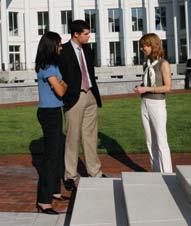

At the same time, HIV forced dramatic changes in our community. It brought lesbians and gay men together, as women who were much less likely to contract HIV stepped forward to help care and advocate for their brothers.
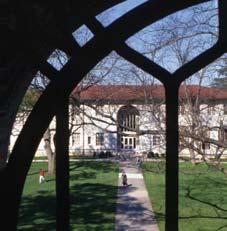
HIV brought homosexuality out of the closet and onto the nightly news, and even when the headlines weren’t positive,



they helped make us part of the national conversation. And HIV shifted the focus of the gay rights movement from “sexual liberation” to seeking recognition for our relationships, starting with the right to make medical and funeral decisions for a dying partner, and paving the way for the fight for full marriage rights today.
ACT UP’s motto was “Silence equals death.”
If and when my partner and I are one day able to say “I do,” we will tell our daughters that we owe those words to all of the people who found the courage to act up and speak out.



BRITISH PATHOLOGIST Peter Johnson 75MR considers his introduction to Emory University in the early 1970s as the fortuitous beginning of a cherished relationship. “I was impressed with the quality at Emory, the expertise and excellence of the faculty, the projects the university was involved with, and the depth of medical care,” says Johnson.
Grateful for student support he received, Johnson has designated Emory as beneficiary of his retirement accounts, establishing an endowed scholarship for medical students and affording him and his family tax benefits.
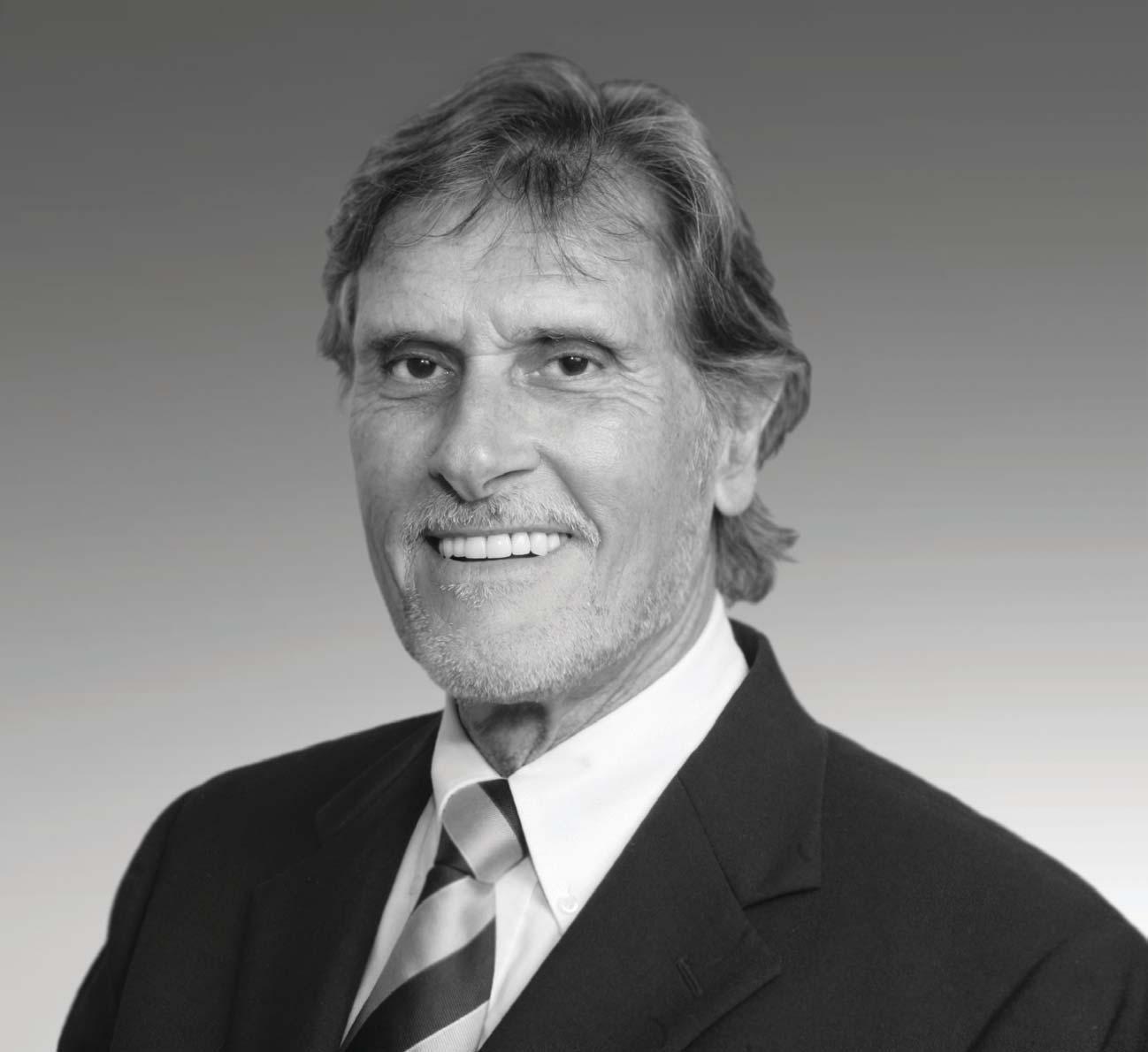
Have a plan.
“Giving back to Emory helps the whole community by allowing individuals to reach their educational potential in life,” he says.
Learn more about how you can plan a gift to Emory. Visit www.emory.edu/giftplanning or call 404.727.8875.
Plan to make education possible.

